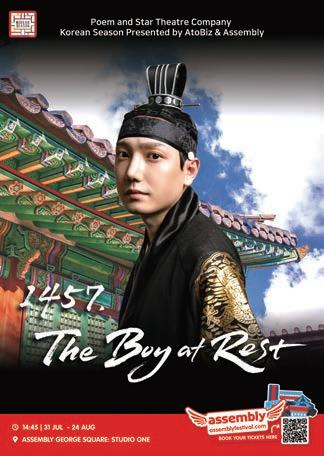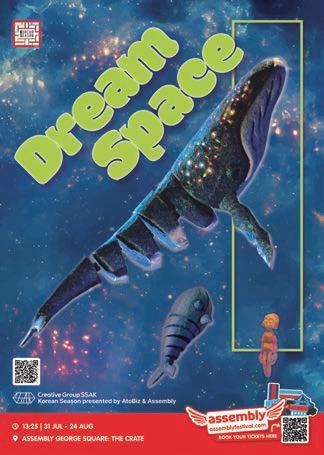







LINDER
MARY, QUEEN OF SCOTS
IRVINE WELSH
SIKISA
JAMES GRAHAM
JONATHAN BALDOCK
COUNTERTENORS
DAN DAW
SORRY, BABY

AKRAM ABDULFATTAH
FAMOUS SPIEGELTENT
TESS LETHAM
PAUL SNG
MERCURY REV










LINDER
MARY, QUEEN OF SCOTS
IRVINE WELSH
SIKISA
JAMES GRAHAM
JONATHAN BALDOCK
COUNTERTENORS
DAN DAW
SORRY, BABY

AKRAM ABDULFATTAH
FAMOUS SPIEGELTENT
TESS LETHAM
PAUL SNG
MERCURY REV









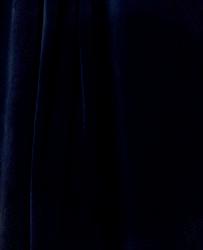
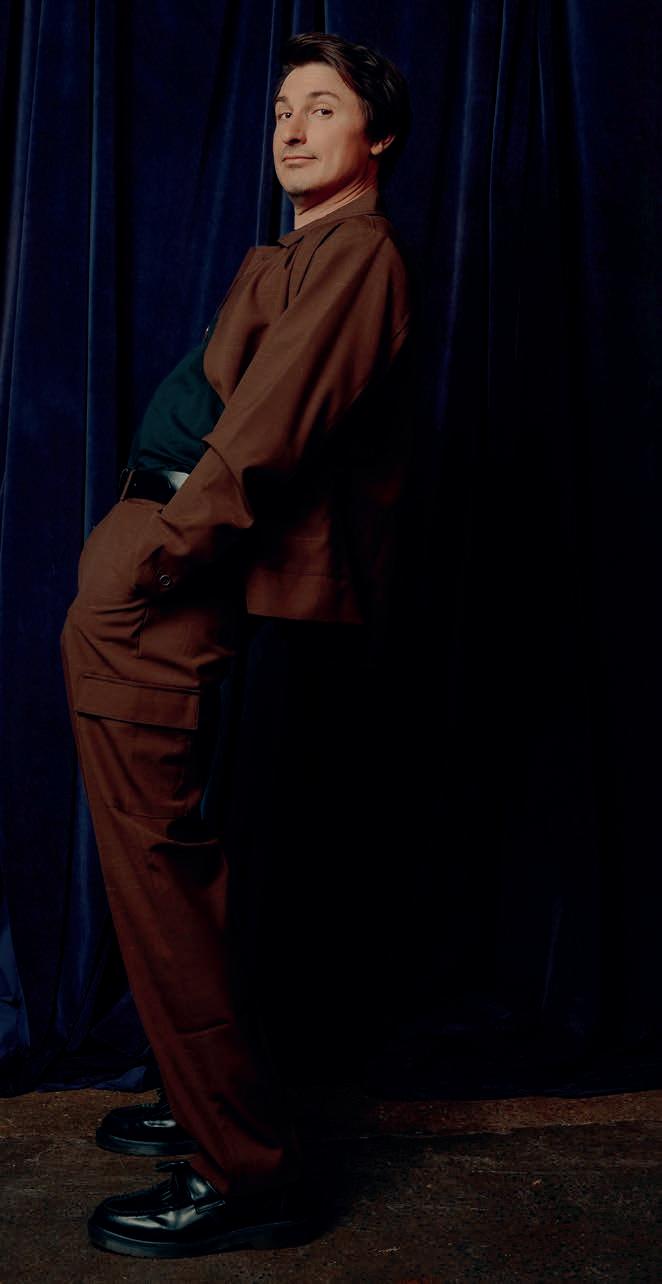







EDINBURGH INTERNATIONAL FILM FESTIVAL
14–20 August
edfilmfest.org










With our ‘leaders’ seemingly hellbent on taking the world onto a path of mutually assured destruction, those who want to create rather than damage and bring light into people’s lives instead of pain have never been more needed. The Edinburgh Festival has long been a moment where art brings us joy while also not being afraid to confront or challenge. Each July and August, the core themes at play at home and abroad are addressed whether they’re in rooms at the Book Festival or on stages at the Fringe or International Festival or in galleries at the Art Festival. This year, you can expect works to be shown and discussions to take place on everything from AI to misogyny, and trans rights to Palestine (a new mini-festival is being launched in Portobello dedicated to Palestinian culture).
Our cover star Jordan Gray has had her fair share of bother for just trying to live her life as a trans woman and musical comedian. She talks about her fears and optimism for the future while also seeking to simply make people laugh. Also in this Festival Guide (we can call it a bumper edition if you like; just feel that weight in your hand), filmmaker Eva Victor tells us about her debut feature that’s opening the Film Festival (though more importantly she reveals that she’s already scoping out where to go in town for tasty treats), artist Jonathan Baldock talks us through his studies into queer animals, a bunch of lying comedians tell the honest truth about fibbing on stage, playwright du jour James Graham reflects on how Edinburgh arguably invented capitalism but very nearly buried it in 2008, and Palestinian string player Akram Abdulfattah talks of his mixed emotions about playing music while his homeland is in peril.
Amazing as it seems, the buzz in Edinburgh is not all just about the art so we’ve produced our annual City Guide detailing the places to go for sustenance before, between or after your shows. Once you’ve read this (yep, saying it) bumper edition cover to cover, get ready for three weekly issues with more interviews and previews and, of course, all those reviews from our crack team of critics as the biggest show on earth gets into full swing.
Brian Donaldson
FESTIVAL GUIDE EDITOR
CEO Sheri Friers
Festival Guide Editor Brian Donaldson
City Guide Editor Jo Laidlaw
Art Director and Design Seonaid Rafferty
Subeditor Paul McLean
Advertorial Designer Isabella Dalliston

Writers
Aashna Sharma, Ailsa Sheldon, Allan Radcliffe, Brian Donaldson, Carol Main, Claire Sawers, Danny Munro, Dom Czapski, Dominic Corr, Donald Reid, Eddie Harrison, Eve Connor, Fiona Shepherd, Gareth K Vile, Isy Santini, James Mottram, Jay Richardson, Jo Laidlaw, Johanna Derry Hall , Katherine McLaughlin, Katy Koren, Kevin Fullerton, Lucy Ribchester, Marissa Burgess, Mark Fisher, Neil Cooper, Paul McLean, Paul Sng, Rachel Morrell, Rob Adams, Robyn Bell, Stewart Smith, Suzy Pope, Zara Janjua
Print & Digital Content Manager Murray Robertson
Senior Business Development Manager Jayne Atkinson
Online News Editor Kevin Fullerton
Media Sales Executive Lachlan McMaster
Marketing & Events Manager Leah Bauer
Marketing & Events Executive Eve Johnston
Events Assistant Solene Ferreira
Editorial Assistant Ione Gildroy




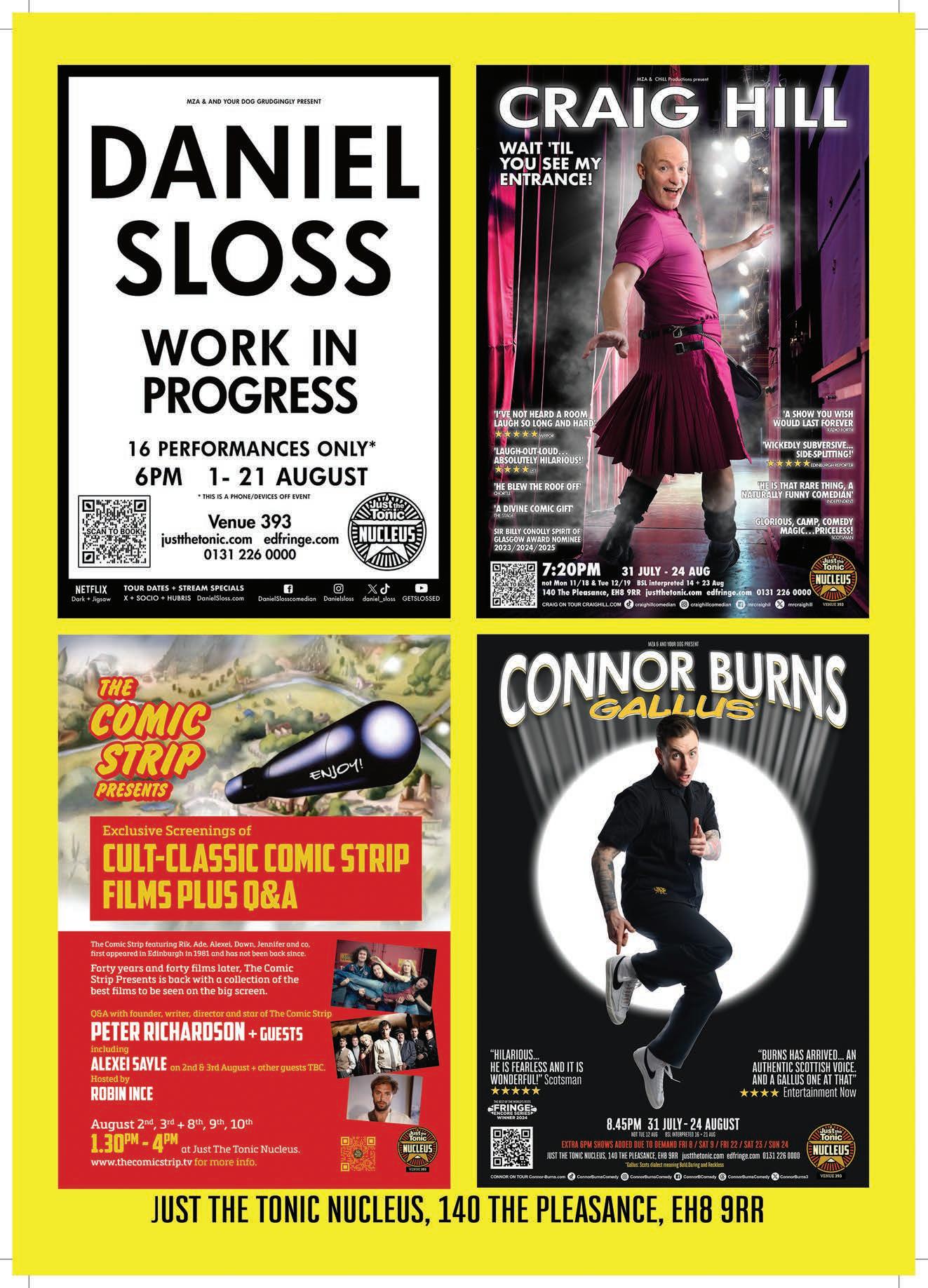

Gilded Balloon celebrates its 40th this year and, as many people know about me, I was born into the Fringe. When Gilded was three years young, I was six months old. As I write this, my two-year-old daughter, born two weeks before our 2023 Fringe, is singing away, trying her best to ‘help’ me. Reaching this 40th milestone, it’s hard not to reflect on how it all came to be and the road ahead.
I run Gilded Balloon alongside my mum, Karen Koren, who put on her first shows at the Fringe in 1985, at what
As Gilded Balloon notches up four decades at the Fringe, artistic director Katy Koren reflects on growing up around the fabled venue, working in a family-run business, and the legacy she’d like to leave for her own daughter
was known as McNally’s, a cool cabaret club in a West End Georgian townhouse. Mum built a reputation for finding comedy’s biggest stars and looking after performers that take the summer pilgrimage to Edinburgh. Her reputation as a strong, confident, bossy woman was all very normal to me growing up. I remember heated arguments while I quietly did my jobs in the background: laminating staff passes, postering pillars or painting stage backdrops. Now I’m in the business myself, I can see she had no choice but to be ballsy in a boys’ world with (unfortunately) mainly boys on comedy stages. Thankfully it’s changing, and so is the Fringe.
Family businesses are hard, but I’m really proud to follow in the footsteps of someone who gives a shit about this magical festival. Someone that has given her time, energy, money and, in many ways, herself to this festival, because we believe it matters. We’ve seen it change lives, even in the ten short years I’ve been working alongside her. So, if there’s anything I can pass on to my poor daughter, it’s to do something that matters. Even if it’s only in a small way, even if it may only change a few lives.
I thought I had to strive to make the biggest impact, as mum is such a big character in this industry. But I’m just fine if my daughter Penny knows our family runs this wee business because we want to help anyone that comes to the Fringe benefit from its madness. As long as Penny doesn’t want to be on stage herself (can you imagine anything worse?). But if she really wants to, she can be a comedian: she better be a damn good one though, because between her Mormor (Karen) and me, we know what it takes to make it in this business.
Flicking through the Fringe programme every year to spot some exemplary wordplay in show titles is always a treat and totally never a chore. Here is yet another selection of the finest efforts, none of which are based on an act’s name (we’re not saying it’s lazy, it just doesn’t hit us in quite the same way)
High Whisk
A Stan Is Born!
The Wizard Of Ozempic
All Over The Plate
Secret Diary Of A Bingo Call Girl
High Hoe
Aquapella
Auld Cheeky
Beatlesjuice
Tall Tails
Pantomeo & Juliet
Baby Doomer
Shoe Dunnit
Bard Education
Myth Adventures
Your Bard Wage Against The Machine
Calm Before The Brainstorm
The Lawn Con
Train Man
Funny Magnet
The Cryptid Factor
Be A Wolf
Pelvic Service Announcement
Under The BoardDwarf
Punchline On Leith
The season in question is the Edinburgh Festival one. The greetings alluded to are just some of the anniversaries with nice round numbers being marked this summer. We raise a glass to one and all

PRIME
10 years of Dance Base’s in-house company for the over-60s
TAPE FACE
20 years of silent comedy
AUGUSTUS AND HIS SMILE
20 years since the publication of author-illustrator
Catherine Rayner’s debut book is marked at Edinburgh Futures Institute
MAGGIE O’FARRELL
25 years of being a published author at McEwan Hall
ANIMALFARM
30 years of Guy Masterson’s solo work
GILDEDBALLOON
40 years of Fringe comedy, as discussed on the other page over there to the left
RESTLESSNATIVES
40th anniversary screening at the Film Festival
DOUNREAY
70 years old, the former nuclear site is discussed at the Festival Of Politics
ROMEO&JULIET
Frederick Ashton’s dance version is 70 and comes to, fittingly enough, Ashton Hall
NATIONALLIBRARYOFSCOTLAND
The Dear Library exhibition continues to mark the NLS centenary
HIBS
Irvine Welsh’s favourite team blow 150 candles out this year as the award-winning play 1902 (the year they won the Scottish Cup but then had to wait 114 years for the next one) makes a return visit
THEFOURSEASONS
The most senior birthday of them all as Vivaldi’s classic marks a mere 300 years with a Fringe concert at St Vincent’s
Scan and listen as you read

Delve into a sonic universe with our curated Festival Guide soundtrack
Mould your Edinburgh Festival experience with a mighty melange of jazz, pop,
and
our
what’s going on in this hefty guide. Hear music from Ezra Collective, Mercury Rev, Underworld, Kaitlyn Aurelia Smith, JJ, Badly Drawn Boy and tons more
What is it with comedians and cuddly (or not so) animals? They just can’t stop being together when it’s time for a brand-new publicity shoot, whether the show has anything to do with said beasts or not. An array of non-humans (decide for yourself whether the captured creature is real or not) feature on just some of the Fringe comedy publicity pictures that will leave you feeling squishy or icky

LULU POPPLEWELL: LOVE LOVE
Underbelly George Square, 30 July–24 August, 6.45pm

HAL CRUTTENDEN: CAN DISH IT OUT BUT CAN’T TAKE IT Pleasance Courtyard, 30 July–24 August, 9.30pm

BECKY UMBERS: PUT THAT CAT IN THE BAG Assembly Roxy, 30 July–24 August, 8.40pm

STUART LAWS IS STUCK Monkey Barrel Tron, 28 July–24 August, 3pm

OLAF FALAFEL’S STUPIDEST SUPER STUPID SHOW: NEW IMPROVED RECIPE Laughing Horse Counting House, 31 July–24 August, 11.30am

DAN TIERNAN: ALL IN Monkey Barrel, 28 July–24 August, 10.25pm














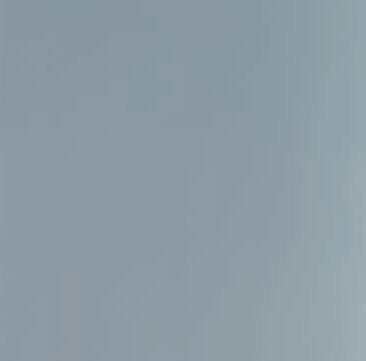













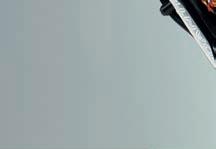




















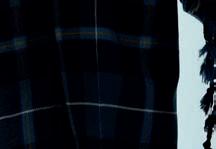








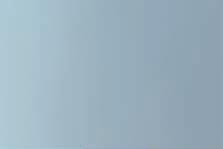






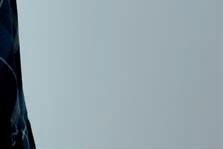








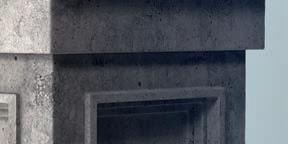
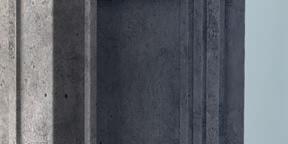





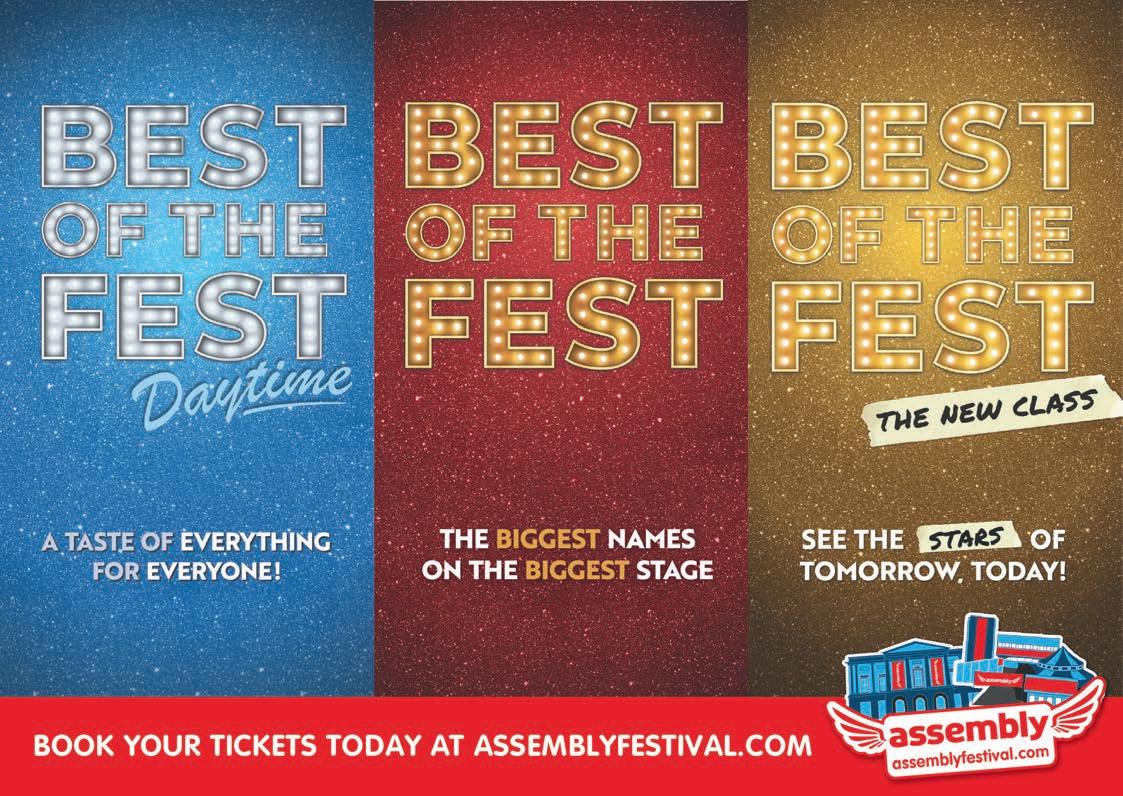




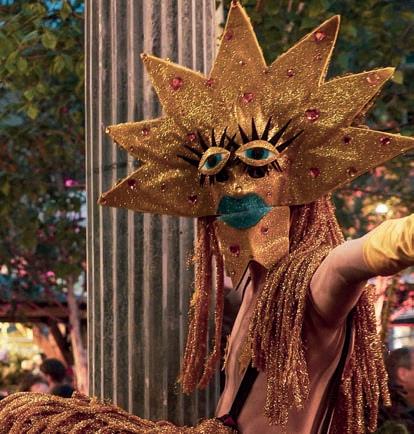










Radical feminist artist Linder is shaking things up in Edinburgh’s Royal Botanic Garden this summer, with a 50-year retrospective of work alongside a special improvised performance outdoors. She talks to Neil Cooper about the long-overdue recognition of avant-garde women artists and the pull of her Liverpudlian roots


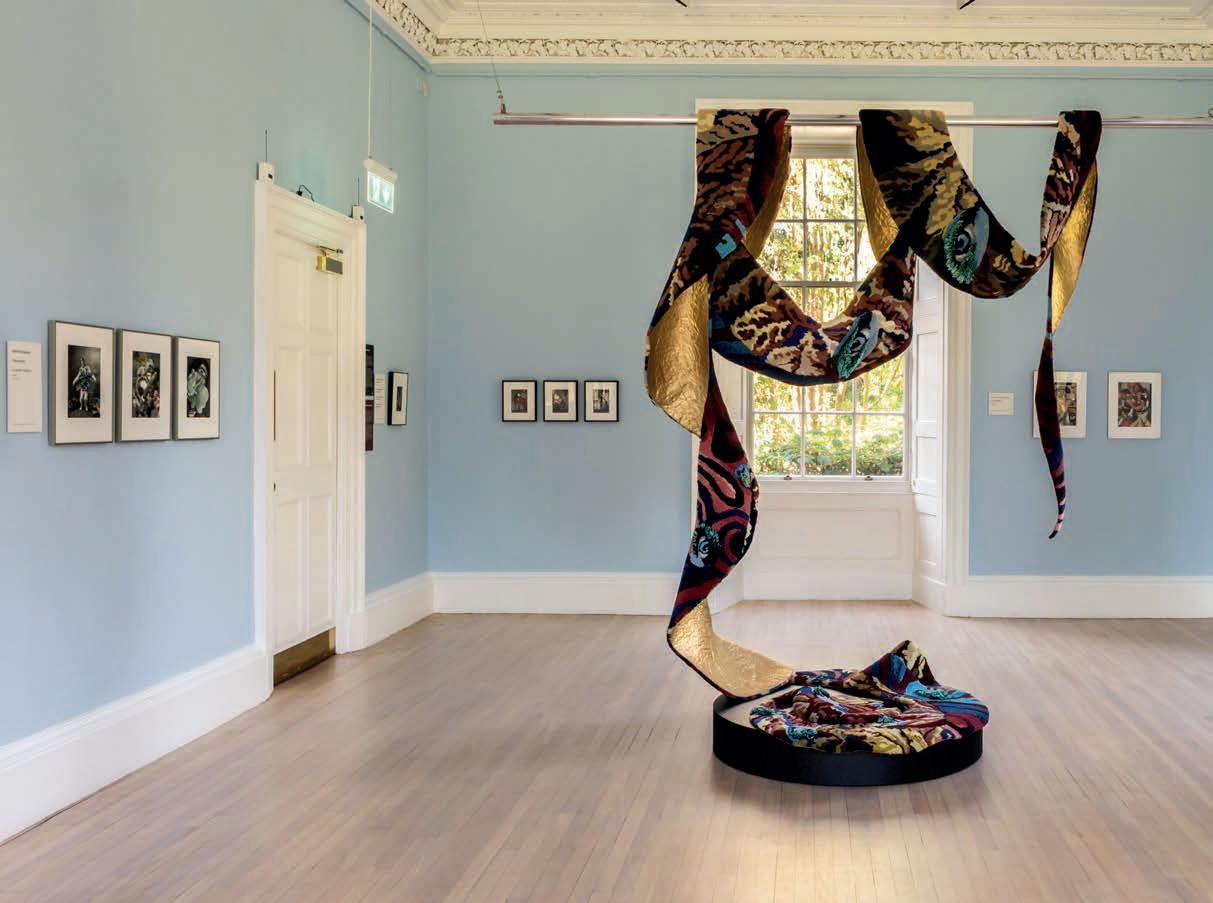


Ten seconds into Linder’s new performance creation and a baby starts crying. It’s Saturday afternoon in Mount Stuart House, a gothic country pile on the Isle Of Bute, and the storm outside has already provided a dramatic backdrop to A kind of glamour about me its accompanying exhibition has Linder drawing from Victorian photographs of a family dressing up for some kind of Alice In Wonderland cosplay. The title comes from Walter Scott, who wrote ‘there is a kind of glamour about me, which sometimes makes me read dates, etc, in the proof-sheets, not as they actually do stand, but as they ought to stand.’ Such notions chime with Linder’s own mystical fantasias.
For a moment at the start of the performance, you wonder whether the infant wail is being conjured up by composer Maxwell Sterling on his electric cello at the side of the stage. Either way, it seems to fit with the maelstrom that follows, as a quartet of extravagantly clad dancers slowly emerge into the playing area. ‘It sounded like the best sample ever,’ says Linder a few days later of the accidental intervention. ‘I was really disappointed when they took the baby away and calmed it down. They were probably quite disturbed by the volume, but having that little human cry (because of the world, because of whatever) was very, very touching. I saw the dad afterwards and he said he was really worried it was going to interfere with everything, but I told him it was really beautiful to hear that little baby crying out.’
The dancers are decked out in bespoke outfits by international fashion designer Ashish Gupta, whose maximalist creations are worn by the likes of Taylor Swift, Miley Cyrus and Debbie Harry. As imagined by Linder with choreographer Holly Blakey, the dancers are personified as fantastical characters: Midnight Sky, The Tree, Crescent Moon and Danger. The latter comes from Danger Came Smiling, the title of Linder’s retrospective show (named after a 1982 album by Linder’s old band, Ludus). The show takes place at Inverleith House in Royal Botanic Garden Edinburgh following a run at London’s Hayward Gallery. A second iteration of A kind of glamour about me will take place on the Botanic Garden’s oak lawn.
‘I think we’ll take our cue from the gardens, and from herbology, from plant magic, from plant sex lives, which I’m now quite an expert on,’ deadpans Linder. ‘I think the botanists at the garden are really excited to have an artist coming in who works a lot with flower and plant imagery, and we have really amazing discussions about incest and plants, plant reproduction and plant folklore. Although the performance will be an improvisation, inevitably we will bring gestures from Mount Stuart with us, because it’s like a bookend. Whatever we do, it’s going to look very, very different from dancing amidst marble; although, I suppose, with the huge marble pillars and the huge oak trees, you could say there is a sort of verticality to both landscapes.’
An improvisatory physical energy pervades throughout the Mount Stuart performance that recalls some of Linder’s earlier works. These include TheWorkingClassGoes To Paradise (2000/2006), in which Linder channelled Clint Eastwood and Shaker rituals as three bands played at the same time; The Darktown Cakewalk: Celebrated From The House Of Fame (2010), the 13-hour epic that took place at The Arches in Glasgow; and ChildrenOfTheManticStain (2016), inspired by surrealist Ithell Colquhoun and performed by members of Northern Ballet at Dovecot in Edinburgh.
The tapestry from ChildrenOfTheManticStain is on show as part of Danger CameSmiling, which rewinds all the way back to Linder’s punk past by way of photomontages that fused imagery from pornographic magazines subverted with images of domestic appliances. Long-time Linder watchers will know her cover image for Buzzcocks’ 1977 single ‘Orgasm Addict’, and some of the cut-out shapes used on the cover of Magazine’s debut album RealLife from 1978.
An unused prototype for the sleeve of Magazine’s first single, ‘Shot By Both Sides’, is also on show. There are also record-cover images from Ludus, whose combination of cocktail-jazz guitar stylings and blood-and-lipstick lyrics was both seductive and subversive. With half a century’s worth of work seen together, the throwaway DIY urgency of punk now forms a historical archive of a still vital artist whose well-
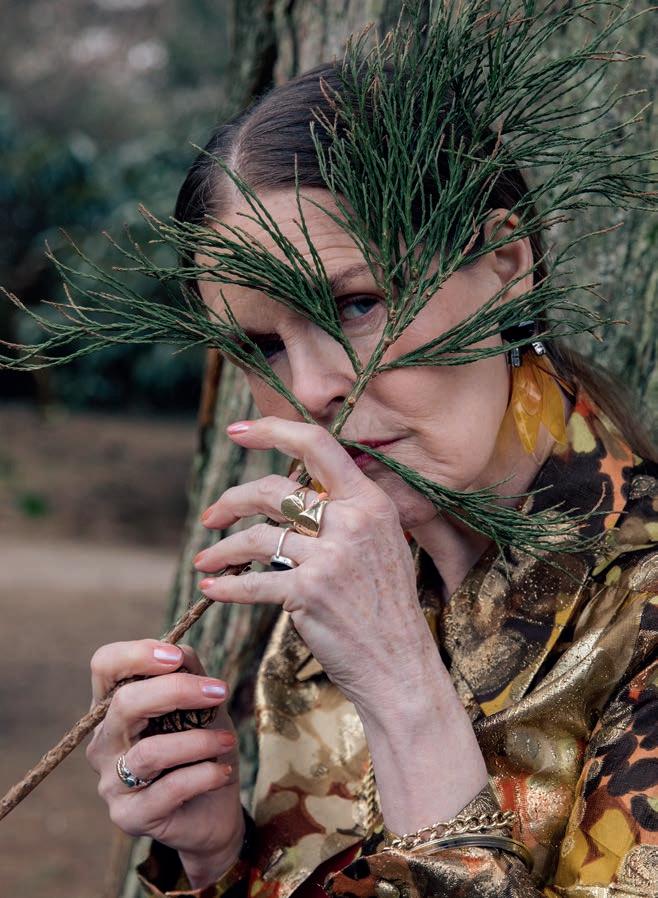

deserved ascendency has seen her become a kind of grand dame of post-punk aesthetics and an art-star inspiration to younger generations. DangerCameSmiling arrives at a time when major women artists of Linder’s generation and earlier, who came from the countercultural avant-garde, are receiving major attention.
This follows London retrospectives of Carolee Schneemann and writer Kathy Acker, while memoirs by Throbbing Gristle co-founder Cosey Fanni Tutti and others have been published to acclaim. Work by Linder and Tutti appeared as part of WomenIn Revolt!, the large-scale group show of late 20th-century grassroots feminist art that toured to Edinburgh in 2024. ‘It took a long time, didn’t it?’ Linder says. ‘WomenInRevolt! opened the doors for a lot of women who have never exhibited their work. I’m lucky in that I’ve been predominantly on the map, but so many women that were shown were completely inaudible and completely invisible. So for them, especially, I think that the exhibition was a gamechanger. Thank goodness.’
While Linder’s associations with Manchester’s punk scene are plentiful in DangerCameSmiling, more recent images look to her Liverpool roots. While ‘The Liverpool Sphinx’ is a witty self-portrait of sorts, ‘The Pool Of Life’ draws from the famous essay of the same name by psychoanalyst Carl Jung following a dream about a city he never visited. While this became a major influence on Liverpool’s 1970s avant-garde, Linder would rather talk about football and the Scouse divas who inspired the work. ‘I’ve always been a loyal Liverpool football fan, but watching those matches, especially last season when they’ve done so well, you see the glamour of the sport
and the glamour of Liverpool Football Club, and the fans, especially. There was a great flag I saw held up, and the slogan was “Imagine Being Us”. I just thought that was such a beautiful sentiment.’
When Linder was asked to give what was described as a masterclass to London teenagers, she took this sentiment with her. ‘I said “I’ll do it, but I don’t want to call it anything to do with master or anything to do with class.” So I used Imagine Being Us, so that we artists could imagine what it’s like to be a 16-year-old living in Southwark, and also so the students could try to imagine being us, and all the complications of being an artist. So even football impacts me; I’m going back to the city more and more. Maybe that happens in later life. You want to return to your city of origin. “The Pool Of Life” was a huge billboard commissioned by Liverpool Biennial 2021, and was shown right in the heart of the shopping area; with all the girls, the lipstick and things like that. Those girls inspire me every time I go; these young women and that Liverpool glamour, the length of the eyelashes, the redness of the mouth, the hair extensions. They’re just such dandies. Such extraordinary dandies.’
Linder: Danger Came Smiling, Inverleith House, Royal Botanic Garden Edinburgh, until 19 October, and A kind of glamour about me, Royal Botanic Garden Edinburgh, 7 August, 6pm, as part of Edinburgh Art Festival; Linder & Marina Warner: Gimme Danger, Edinburgh Futures Institute, 9 August, 4.30pm, as part of Edinburgh International Book Festival.





























I’d rather nobody tried to murder me with a gun
Jordan Gray is strapping on her six-string and bringing a cowgirl swagger to the Fringe. This ‘well-meaning idiot’ talks frankly with Jay Richardson about coping with death threats, staying in the moment on stage, and why being a figurehead for the trans community can be a double-edged sword
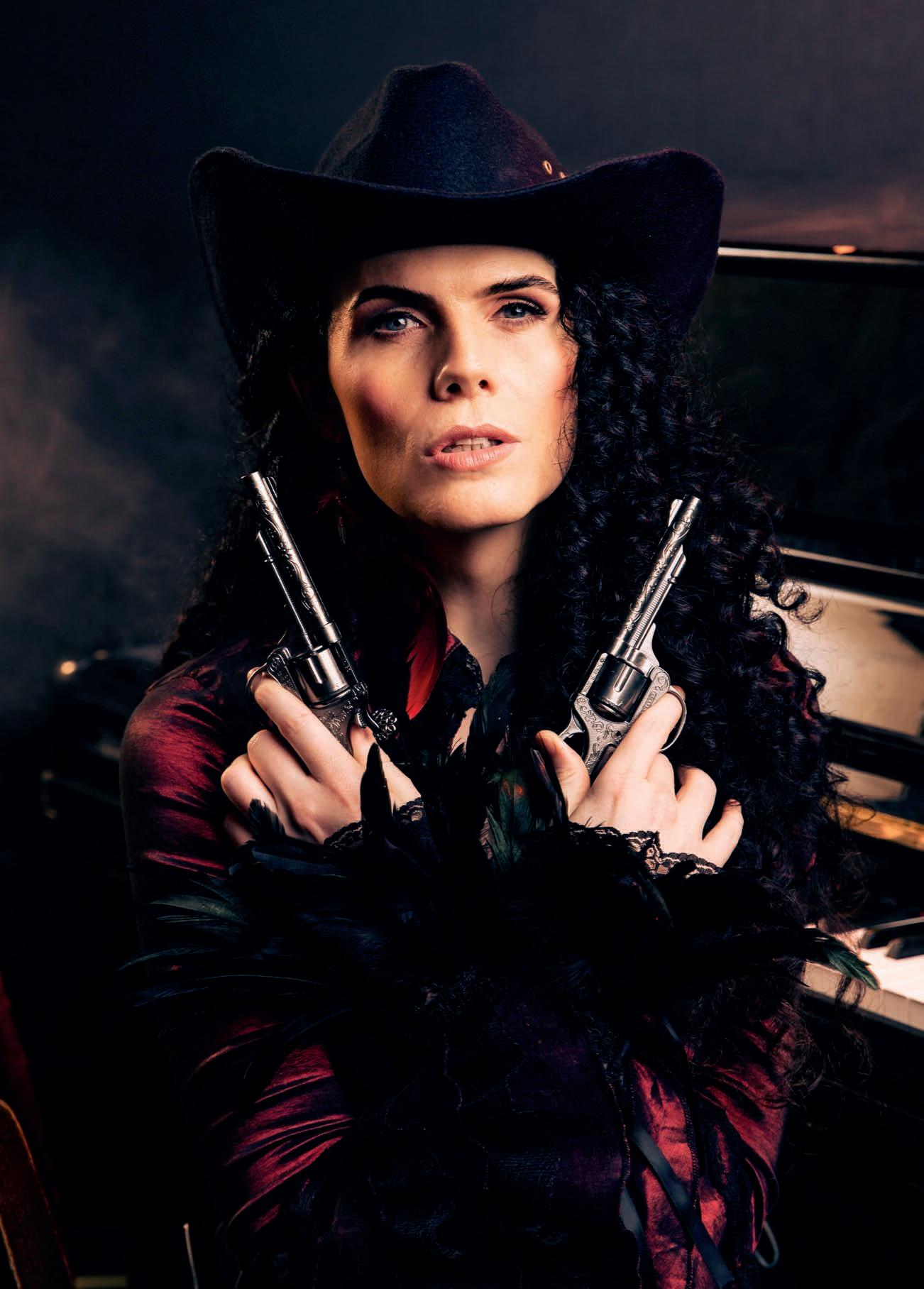
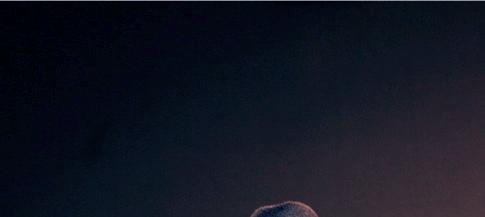








Jordan Gray worries about juggling too many projects. With a new stand-up show and sitcom, plus various other creative endeavours in the works, the Edinburgh Comedy Award-nominated comic admits to ‘teetering on a bit of burnout.’ However, three years after her breakthrough second Fringe show, Is It A Bird?, and massive exposure from recreating its nude finale on television, she’s still riding the wave. ‘My human rights are being eroded by a rising fascist regime,’ she smiles wanly. ‘So working is a good distraction and feels slightly defiant. I’m overclocking and really, really pushing myself.’
Ofcom received almost 1600 complaints after Gray performed the fauxarrogant ‘Better Than You’ on Channel 4’s FridayNightLive, a song about her trans experience during which the 36-year-old’s jumpsuit was whisked off, before she hammered at the piano with her penis.
‘I’m very proud of it, more and more each day,’ the erstwhile Musselburgh resident recalls of that iconic moment. ‘I learned in real time just how many people are not fans of the transgender situation. With the news so weighted against us though, it’s important to express how overwhelmingly positive it was. People loved it or didn’t care. A very vocal, angry minority cared a lot though. Tory MPs called for my arrest. They thought I’d just walked onto live television and done it spontaneously, instead of with fishing wire and a nice fellow named John whom I’d rehearsed with about 100 times.’
Surprisingly perhaps, Gray is grateful for the angry rhetoric. ‘At least now I know it’s there and I can try to navigate it and de-escalate it.’ A self-described ‘very left-leaning, well-meaning idiot,’ she tries not to be prescriptive about politics. But after the Supreme Court’s ruling in April that women are legally defined by biological sex, her latest show, Is That A Cock In Your Pocket, Or Are You Just Here To Kill Me?, has inevitably acquired ‘a slightly missionary role.’
As a consequence of her fame, she’s gratified to be asked to represent the trans community. But Gray says it’s also exhausting having to justify her existence over and over again, even if ‘being put on a pedestal means lots of people feel protective towards me.’ The once-struggling musician, who made her television debut on The Voice in 2016, calls herself the ‘cockiest woman in comedy.’ And there’s no denying her front. She performed her first stand-up gig in a dressing gown, only a day after breast enlargement surgery. ‘I felt comfortable because I’d already had ten years in pop music,’ she says. ‘Strong painkillers helped too.’
Her cowgirl swagger (she’s mastering guitar for this latest show) isn’t just Gray’s commitment to a Wild West theme. ‘As someone who plays piano for a living, I’ve sat down my whole career. The guitar makes me feel like a rock star. It’s easier to play high-status when you can walk around and gesticulate.’ Still, her onstage braggadocio betrays vulnerability. ‘Just like everyone, I’m nervous and scared for the future. I’m doing my best to navigate everything without hurting anyone.’
Her new hour relates the four categories of death threat she’s received, with a small part of her worried about life imitating art. Without being morbid, she reasons that there are worse things ‘than me being publicly shot,’ which would at least ‘move the needle a bit for transgender people. Threats would be taken seriously then.’
Gray had to employ extra security at the London Palladium but affects a blasé attitude about the danger now. ‘I’d rather nobody tried to murder me with a gun,’ she confirms. ‘It’s just that I’m more worried about having to deal with some confused politics. Everyone’s drip-fed information in their own bubbles. And I’m only trying to make people laugh, while holding onto some artistic integrity.’ In 2022, Gray’s ‘big reveal’ was nudity. ‘Everyone experiences it . . . sex and death are pretty universal,’ she suggests. ‘What’s odd



about committing to a show about death threats, though, is doing it every night, regardless of what mood I’m in: staying jovial but not making it too light.’ With nothing so likely to frighten the horses as intersex nudity, the show does feature an ‘explosive’ set-piece. ‘Even if you know roughly when it’s going to be, it still does something to your brain. I like engineering moments of real vulnerability in me because there’s no substitute. Good improvisation is better than anything I could write because you’re seeing human synapses firing live.’
Indeed, finding the appropriate tone, staying in the moment, says Gray, is ‘a funny old balancing act.’ Quite literally. ‘You’ll always see me standing on one foot,’ she discloses. ‘It began subconsciously but now I intentionally pull these strange yoga poses. I’ve realised it’s what keeps me from switching off after the 200th show. Silly as it is, I don’t think I could ever give it up.’ Music serves a similar purpose. ‘I’m very lucky to have this strange, incredibly low suspension of disbelief. In an immersive situation, I’m there straight away. Songs can instantly overwhelm me. It’s hard keeping this show from becoming pantomime. For the first few nights, those are real tears. But later, on an exhausting night, I could find myself going through the motions. The songs keep me along for the ride.’ Her closing number is ‘a gift I’ve been given by the universe that I can completely lose myself in; it helps me pull it out night after night.’
That sense of cosmic envelopment also applies to Gray’s ITV2 sitcom Transaction, set in the magical realism of a supermarket night shift. Echoing cult American comedies such as Community and 30 Rock, which often trapped their ragtag ensembles of eccentrics in fluorescent-lit, late-night scenarios, Gray felt she had licence to be ‘woozy, kooky and psychedelic.’ Pastiching classic film and television, the series also nods to Spaced, which is appropriate as Nick Frost plays Simon, boss of the comedian’s rogue shelf stacker, Liv.
A very busy Gray (who has already begun writing a second series) has also worked with Disney, advised Matt Lucas on trans portrayal for a footballcomedy pilot, been offered numerous acting roles, and was approached to create a Shakespeare-related project for the National Theatre, all while shopping around a film script. What’s more, after penning a couple of ‘not very good’ novels when she was ‘very, very drunk,’ there’s an offer on the table for an autobiography ‘which is very sweet but it can’t just be a memoir; it needs to be more than the sum of its parts.’
She’s certainly carving a unique path. ‘I love having had a quote-unquote “failed music career” because it puts me in mind of a David Brent-type character,’ she reflects. ‘It’s a fun thing to mine for comedy, putting your heart and soul into an industry, taking yourself so seriously, then just swapping and realising it wasn’t as important as you thought. I wouldn’t change my first 22 years as a man either, even though I’ve never told a joke as one; I transitioned when I was a musician. But I sort of retain ownership of 200 years of sexist jokes, so anytime I say anything that’s broad, it has a fizzy edge. I’ve experienced male privilege and the persecution of being a woman in male-dominated spaces, acted as an emissary for both camps and have access to the language of both.’
With that dual narrative, Gray believes she fulfils a ‘weird niche’ for a lot of people. ‘If you’re naturally inclined towards transgender people, everything can be taken with a pinch of salt and seems fun. If, as a woman, you feel your rights are being trampled on by transgender women entering your spaces, everything I say probably sounds horribly sexist. Both sides feel victimised. I’m trying my best to negate that by staying friendly and humble.’
Jordan Gray: Is That A Cock In Your Pocket, Or Are You Just Here To Kill Me?, Assembly George Square Gardens, 30 July–24 August, 9.05pm.




























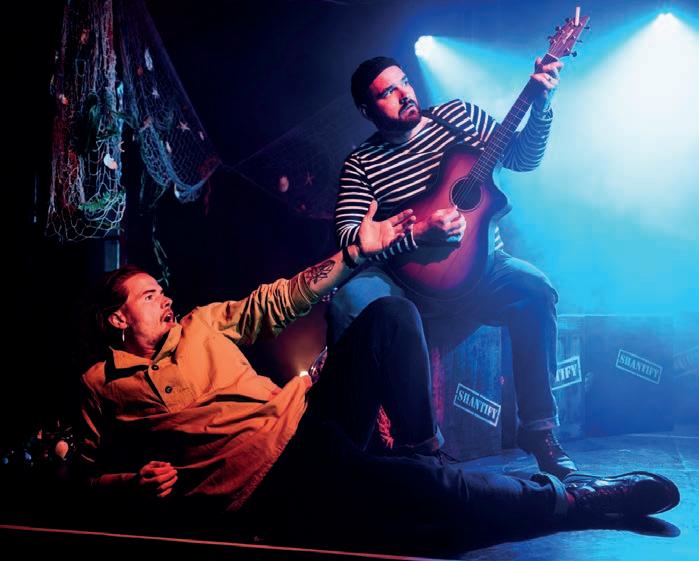











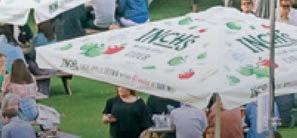
















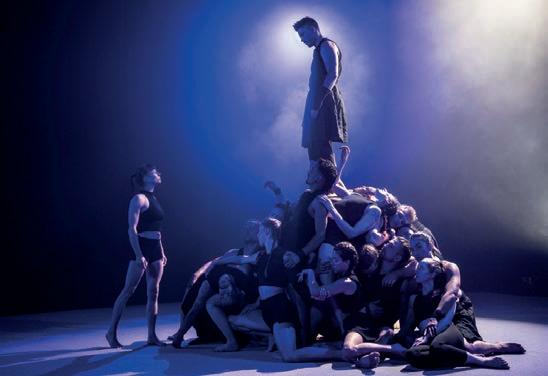













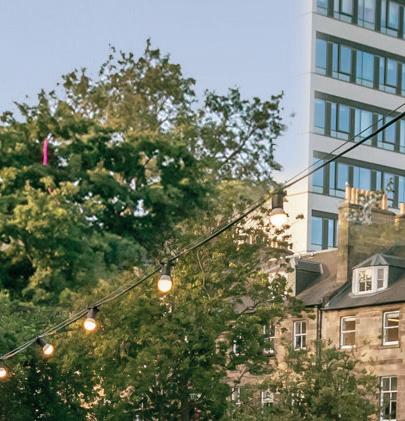












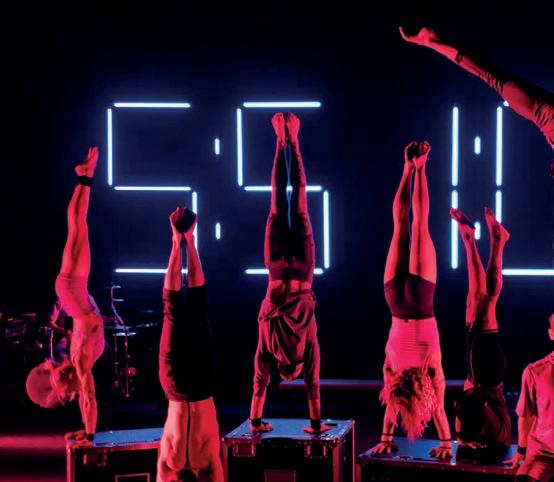




















Across more than a century, The Famous Spiegeltent has hosted everyone from bookish types to burlesque acts. As it makes a welcome return this August, Gareth K Vile dips into the proud and eclectic backstory of an Edinburgh staple




Although its history goes back 105 years, and echoes with the ghosts of performers from the legendary Weimar Republic cabaret scene, The Famous Spiegeltent is, for Edinburgh audiences, inextricably connected to the rise of 20th-century cabaret. From its riotous variety nights around the turn of the century through the formation of iconic cabaret La Clique, The Famous Spiegeltent has been a familiar site around the city during the Fringe and, for 2025, returns to St Andrew Square to celebrate the 21st anniversary of an award-winning club.
Since being built by master craftsmen Oscar Mols Dom and Louis Goor in 1920, the largest of the remaining tents has literally dazzled audiences with its interior of mirrors. Yet the design’s beauty is matched by the famous performers who have appeared on its round stage: in 1930, Marlene Dietrich famously sang ‘Falling In Love Again’, while contemporary cabaret acts, including Fringe superstar Camille O’Sullivan, Tim Minchin, Meow Meow, The Tiger Lillies, and even 1970s pop star Leo Sayer, have all added their magic to the venue’s mystique.
For David Bates, who has spent over a quarter of a century touring and programming this venue, ‘it was love at first sight! I first saw The Famous Spiegeltent in Charlotte Square for the Book Festival when I was playing with an Australian jazz band. One night, I was talking to its owners, Scottish And Newcastle, and asked whether I could hire it. That was 1996. I thought it would be a one-off crazy thing to do the rest is history.’
The following year, Bates’ distinctive curation arrived, mixing music and the rising cabaret and circus scenes. ‘It was eight years after the first season that La Clique was born,’ he says. ‘It was very eclectic. The Fringe has always been full of stand-up, but that has not been my inclination. In the early 21st-century, there was a really big gap for live music. And out of the late-night Club Spiegel, which became notorious, La Clique was born.’
La Clique appeared at a serendipitous time. ‘It was a fluke, laughs Bates. ‘Back in the day, nothing cool ever happened before ten o’clock at night; now, nothing starts late. We used to run the club until two or three in the morning. Within that club, I saw lots of acts who had a really great five minutes but not in a show context.’ By bringing these artists into a show that generates an immersive and exotic atmosphere, La Clique propelled variety away from light entertainments towards a contemporary and bold identity.
‘Around 2003, we decided to put a bunch of these artists together and gave it a pretentious French name, as a subversive little gang.’ The moment was clearly right. ‘It was at the time when there was this resurgence of burlesque. Young women were reclaiming its power rather than letting it fester in seedy men’s clubs. There was this underground movement of artists. And a lot of the late-night, subversive transgender artists appeared plus the circus-based acts that were not interested in being in Cirque Du

Soleil but were interested in retaining their individuality. And we just happened to put together this extraordinary group of people who were at the peak of their powers: young, hip, groovy, with a bit of an attitude. It was on the fringes to start with but gradually became mainstream.’
In subsequent years, cabaret and burlesque, which had been marginalised by the immediacy and (in the Edinburgh Fringe context) inexpensive nature of stand-up comedy, would grow and occupy that mainstream. Eventually cabaret would receive its own section in the Fringe brochure, staging a glamorous protest towards hostile critics and creating its own creative aristocracy.
Through those years, La Clique maintained its status as the standard and inspiration. ‘The first time was like chucking a stone in a pond,’ Bates states. ‘The circles are very small, and the cognoscenti thought it was amazing. And then the circle has gone right out now.’
But the show was not just about the performers: the audience themselves, who are reflected above, behind and around the performers in the mirrors, are an essential element of the club. ‘We say that the show begins when someone buys a ticket. The experience is as important as the artist on stage. It’s what we imagine it was like in those Weimar clubs where the drinking and socialising environment is as important. The audiences are looking at each other through the stage, through the performers.’
La Clique, the show which gave The Famous Spiegeltent both its greatest success and defined an era of adventurous cabaret, is at the heart of the programme, with two show formats and an extended run. La Clique is legal now, and it’s having a party,’ says co-curator Persephone D’Arbela Bates. The cast for the show is, she adds, ‘a cavalcade of returning La Clique artists from our original season, some of whom are coming out of retirement, and modern artists, many of whom saw La Clique as teenagers and now they’re joining us on the stage 20 years later. It is a mesh of legacy meets latest: a rotating cast, a lot of guest spots.’
Beginning with a week of Jazz Festival events, the Spiegeltent then presents an unprecedented six-week season for La Clique ‘It is happening outside Fringe time as well as inside,’ continues Persephone. ‘That is an unexpected choice, but we wanted it because we are bringing La Clique and the Spiegeltent back to Edinburgh where it was born. It is a love letter to Edinburgh where it all began.’
With a lively curated programme, its distinctive glamour and history, The Famous Spiegeltent embodies both contemporary dynamism and nostalgic elegance, and even after 21 years, La Clique promises, once again, to energise and redefine Fringe culture.
La Clique, The Famous Spiegeltent, 30 July–24 August, 6.30pm; see ejbf.co.uk for Edinburgh Jazz & Blues Festival shows at the venue, 11–20 July.








Dancing letters, giant spiders and the fragility of power: Scottish Ballet’s Mary, Queen Of Scots is set to radically re-evaluate an iconic monarch. Lucy Ribchester caught up with choreographer Sophie Laplane and director James Bonas as the show’s world premiere looms into view

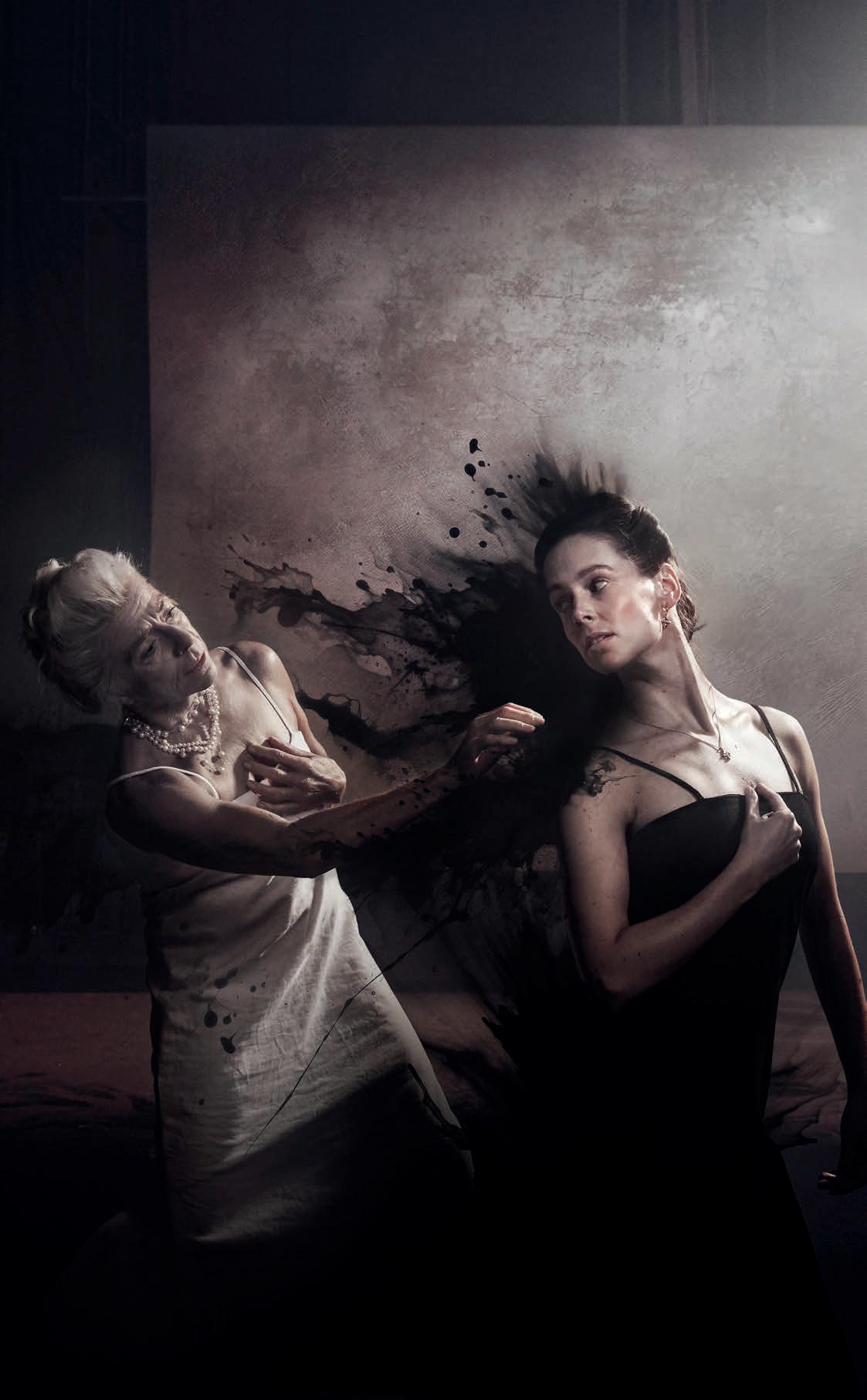
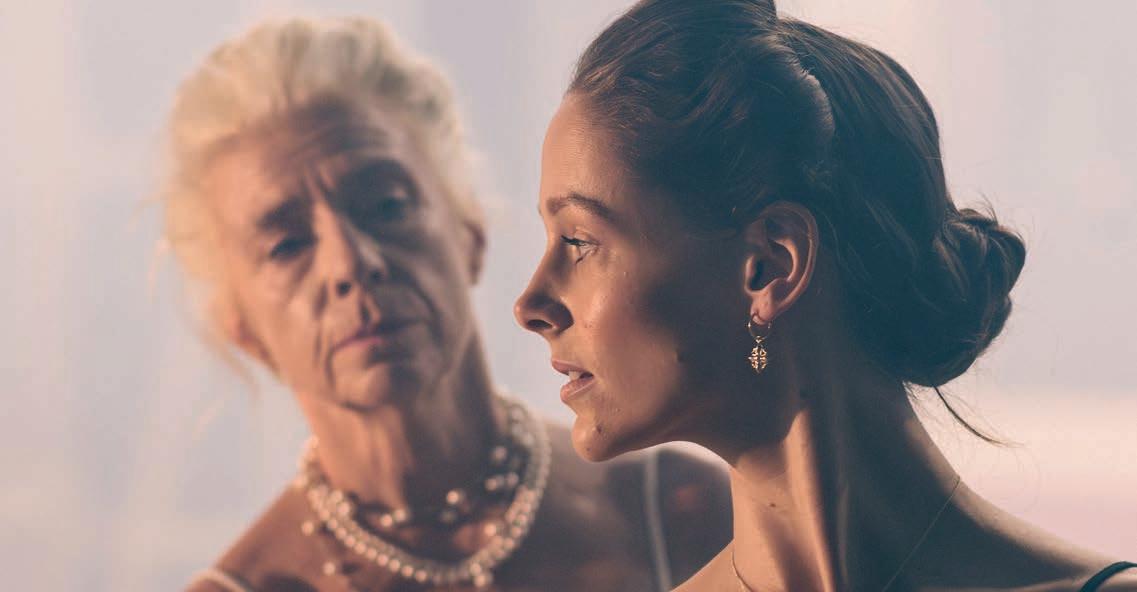


She’s been immortalised on film by Katharine Hepburn and Vanessa Redgrave, in theatre by Friedrich Schiller and Liz Lochhead, and on RuPaul’s Drag Race by Rosé. She even had a Six-style musical dedicated to her at last year’s Fringe. And let’s not forget the gruesome playground rhyme involving chopping a daisy’s head off that most Scottish kids learn before they even know what a queen is.
‘She crops up a lot, does Mary,’ says James Bonas, director and one half of the creative duo helming Scottish Ballet’s new production, Mary, Queen Of Scots, alongside choreographer Sophie Laplane. Having a background in opera and theatre, Bonas has come across many stage incarnations of Mary, but believes her story is nonetheless worth revisiting. ‘There’s always a quality of nowness to it,’ he says, ‘in its political terms, to do with Scottish identity and Scottish storytelling, and in her role as a woman.’
This isn’t the first time Scottish Ballet have narrated Mary’s life through dance: the company produced a 1976 version, choreographed by Peter Darrell. But this time the team were clear they wanted to create something fresh. ‘What was really important for us was not to tell a historical ballet,’ says Laplane. Instead they decided to look at Mary’s life through the eyes of the 16th century’s other famous queen, Elizabeth.
‘It’s Elizabeth’s final hours, the final day before she dies,’ Laplane says. ‘And it’s really her remembering her guilt towards Mary. It’s a story about two women in power, and could they not have been able to co-exist together?’

It is well-documented that the two women never actually met, but this offered Laplane imaginative freedom. ‘That gave us liberty for Elizabeth to imagine Mary in so many different ways,’ she says. Laplane was keen to break some of the more commonly ingrained portrayals of both queens. ‘When you watch a lot of films, very often those two women are quite stereotyped. You’ve got Elizabeth who’s uptight, the virgin, the frustrated, pampered queen; and then you’ve got Mary, who’s very often pictured much more free, with loose hair, running in the field. We wanted something more complex.’ The team consulted Dr Anna Groundwater from the National Museum Of Scotland. ‘She told us that Mary was many different things,’ says Laplane. Child bride of the French Dauphin, widow at 18, renaissance queen. ‘What was really interesting was exploring those big moments that marked her.’
One of their solutions to challenging stereotypes of Elizabeth is to show her as an older woman, casting Charlotta Öfverholm, a Swedish dancer who champions mature performers through her company Age On Stage. ‘We’re so used to seeing Elizabeth as being tough,’ says Laplane. ‘I think seeing someone more fragile is really interesting.’
For Bonas, whose past work with Scottish Ballet includes 2019’s groundbreaking version of The Crucible, exploring perceptions of Mary through the eyes of her dying cousin ‘at a moment when her memory is fragmenting,’ led him towards surreal and creative imagery. ‘What’s hitting Elizabeth is these different images of this woman,’ he says. Some of these visions are macabre and monstrous; in one, Mary appears to morph into a black widow spider, devouring her husband,

Lord Darnley. ‘Maybe to Elizabeth, that’s how it felt,’ Bonas says. ‘Mary is a kind of monstrous man-eating woman up there in Scotland, and her cousin has been eaten.’
Other visual set-pieces become metaphors for political paranoia or the suffocating patriarchy of the renaissance court. ‘That’s what dance and theatre can explore really well,’ Bonas says. ‘For show-and-tell, I’d rather go to the museum and look at the objects, or watch a movie where you can see the Highland glens and the reconstruction of Elizabethan London. We were kind of like, well, dance can really explore feeling.’
As an artist, Bonas consciously decided to let go of the rigid historical details of his research and allow his imagination to roam, an approach Laplane also applied to the choreography. ‘There are some elements, especially for the renaissance French court where I felt like I wanted to inject that into the material,’ she notes. ‘But afterwards I just kind of stuck to my own language.’ Channelling the movement of the piece through imagination, she says, ‘really allows me to be playful, surprising and a bit unexpected.’
Though it’s no spoiler to say there’s not a happy ending, something that did surprise both creators was the intimacy in the letters which Mary and Elizabeth exchanged. ‘We have a scene where the two queens are there, but not physically in the same space,’ says Bonas. ‘Two versions of themselves meet as the letters to dance a very intimate duet. The two queens can’t see each other or touch. But in the letters there’s this soft, female exploration of intimacy and connection.’
Amid a torrent of Festival info, Brian Donaldson keeps his head long enough to spy a number of other shows and events related to the iconic 16thcentury monarch
Even if they are long gone (and worse, had their bonce dispatched), there are some historical figures you just can’t keep down. Mary, Queen Of Scots is one such icon, and beyond the high-profile Scottish Ballet production there is a further flurry of Festival events which are either a nod to or direct portrayal of Liz I’s cousin. After a glorious Fringe debut last year, Mary, Queen Of Rock! storms back to recommence her battle against music censorship during the Reformation. In similar vein, Knot Tied’s Mary: A Gig Theatre Show takes a poke at the misogyny of those times through spoken word and folk rock.
At a more leisurely pace is The World Of King James VI I, an Art Festival exhibition all about Mary’s boy child who was the first to rule over Scotland, England, Wales and Ireland. Back at the Fringe, The Thistle And The Rose explores the letters which zipped to and fro between Mary and Elizabeth, while ReginaVagina is a raunchy musical comedy about that period. And at the Book Festival, Kate Anderson, Rosemary Goring Jade Scott will discuss their books about the House Of Stuart, and the curious allure it retains to this day.
Mary, Queen Of Rock!, Underbelly Bristo Square, 31 July–24 August, 7.45pm; Mary: A Gig Theatre Show, Gilded Balloon Patter House, 14–21 August, 9pm; The World Of King James VI & I, National Galleries Scotland: Portrait, until 14 September; The Thistle And The Rose, Space Surgeons’ Hall, 11–16 August, 7.30pm; Regina Vagina, PBH Free Fringe CC Blooms, 2–24 August, 5.30pm; Kate Anderson, Rosemary Goring & Jade Scott, Edinburgh Futures Institute, 20 August, 12.45pm.
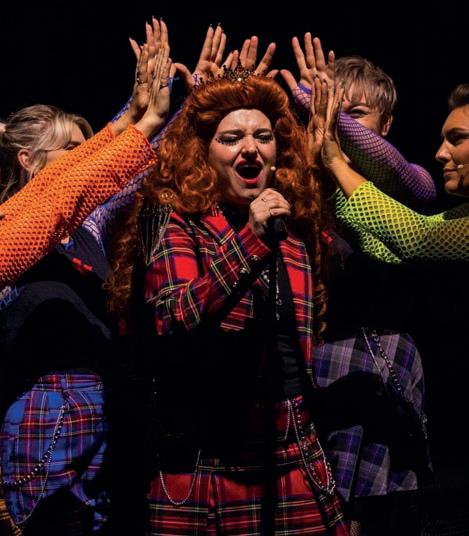






















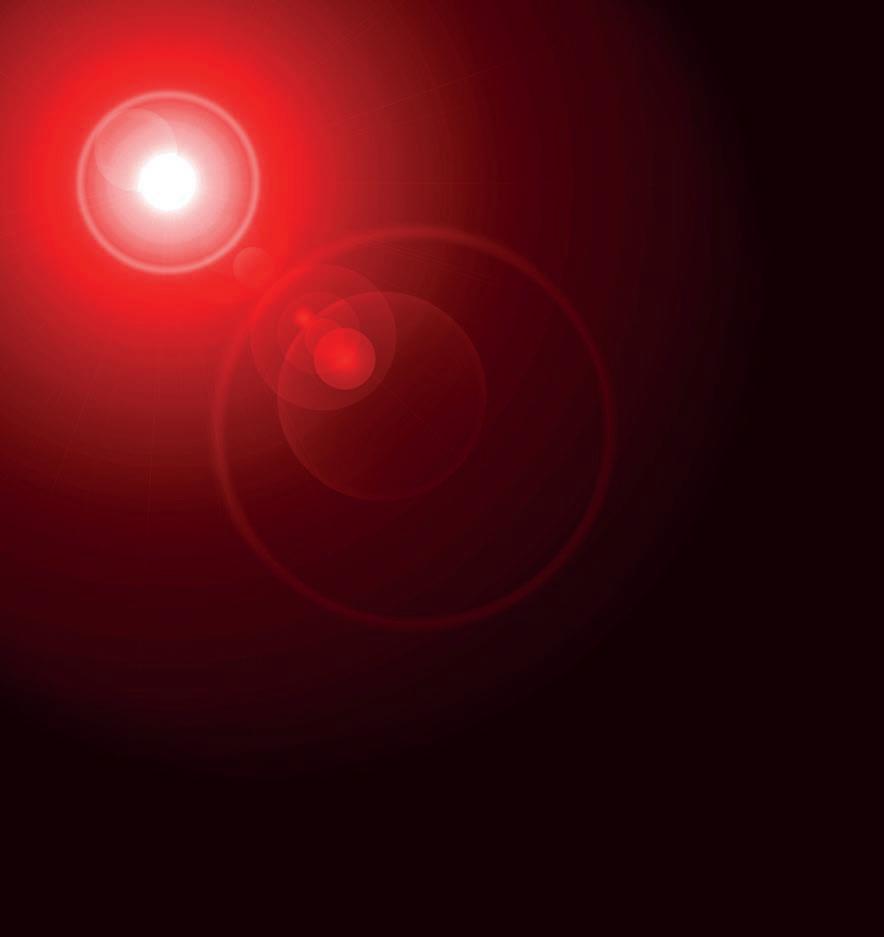
e High Commission of

TheHighCommissionof CanadaintheUKandtheBeaverbrook CanadianFoundationcelebrate alltheCanadiantalentonshow acrossEdinburghthisAugust. Fordetailsoftheamazing Canadianworktoseethisyear –followtheQRcodetocheck outtheonlinelistings.




I didn’t want it to be This Is




Paul Sng’s immersive documentary about Irvine Welsh aims to show a side of the author which the public never sees. Ahead of Reality Is Not Enough taking the plum spot as Edinburgh International Film Festival’s closing gala, Sng considers the impact Welsh’s work has had on him and why he wants audiences to get inside the notorious writer’s head
>>
Iread Trainspotting in March 1996, three years after it was published and a month after seeing Danny Boyle’s remarkable, era-defining film at the Greenwich Picturehouse. Both experiences changed my life. In print or on screen, Trainspotting articulates the urgency of youth and defines what it means to be a rebel, a misfit or an outcast. As an outsider struggling to work out who I was and where I belonged, Trainspotting showed me that challenging the accepted order of things was not only an essential act of selfpreservation, but also a means by which to understand and articulate my place in society.
Trainspotting was new and bold, a clarion call for the naysayers and nihilists who rejected the pseudo-friendly veneer of neoliberalism and embraced hedonism as a means to cope with life’s injustices. It’s about more than drugs; heroin is the MacGuffin in the story. Ultimately, it’s a tale of friendship and how people connect, bend and break along the way. Irvine Welsh uses the characters to illustrate his own world view and hold up a mirror to people on the margins of society in his native Edinburgh. Although I grew up in London and had zero interest in becoming a heroin addict, in Renton I recognised a fellow outsider. I felt seen.
Fast forward 25 years. I’m now living in Edinburgh. It’s a Sunday evening and I go to the Filmhouse with Irvine Welsh to watch Todd Haynes’ The Velvet Underground. Afterwards, I ask Irvine whether he’s ever thought about making a documentary about his life. I pitch a film to him, one that reveals a side of his character that goes beyond the public persona of a sweary hedonist speaking truth to power. Something that shows him as he’s never been seen before: a loving husband and thoughtful polymath who credits novelist Evelyn Waugh for his love of writing, and believes ‘we only learn through failure.’ Three years later, Reality IsNotEnough is the result.
From the beginning, I wanted to find an original way to tell Irvine’s story. I didn’t want it to be ThisIsYourLife for the chemical generation, with a bunch of talking heads chuntering on about the 90s and how Irvine’s work had inspired them. Søren Kierkegaard once mused that ‘life can only be understood backwards; but it must be lived forwards.’ The film’s editor, Angela Slaven, and I adopted this as our mantra. The quote sums up Irvine’s opposition to nostalgia; he’s not interested in looking back and chooses to focus on what’s in front of him. But I knew that observing and filming him for a year would propel him into moments of recall and reminiscence, and perhaps even the odd confession. The trick was nailing how to present that in an original and cinematic way.
While we were in Canada filming at the Toronto Book Festival, we arranged for Irvine to visit a clinic that specialises in ketamine-assisted therapy and other hallucinogenic treatments. Under close medical supervision, Irvine was given DMT, a strong psychedelic drug, and the resulting exploration of consciousness provided a framework within the film to confront the past and trigger personal reflections in the present day.
To place the audience inside Irvine’s head, we see him in a post-industrial warehouse, close to where he grew up. Within this dark inner sanctum, a white-suited Irvine literally walks through his memories, as fragments of his life and times are projected upon the walls in a Ballardian collage of flickering moving images. As the veracity of language and images collide, Irvine provides an intimate commentary on his life, work and the demons that drive his creativity. These scenes are interwoven with observational footage of him at work and play, interspersed with clips from his screen adaptations and excerpts from his novels read by Liam Neeson, Ruth Negga, Stephen Graham, Maxine Peake, Nick Cave and others.
Irvine is an adventurous and generous collaborator who empowers the people he works with by trusting their vision. In RealityIsNotEnough he delivers deeply personal reflections on the key moments that have opened his heart and soul, showing us that it’s possible to draw inspiration from the darkness within oneself and continue to evolve in defiance of the status quo. By revisiting the books, films and shows cherished and revered by people across the world, this film invites the audience to interrogate what it means to be an artist in a contemporary world where many people struggle to belong.
Reality Is Not Enough, Cameo, 20 August, 9pm; Paul Sng has donated his fee for writing this piece to Sulala Animal Rescue, an organisation that rescues stray animals in Gaza: chuffed.org/project/124803-help-us-raise-funds-forsulala-animal-rescue





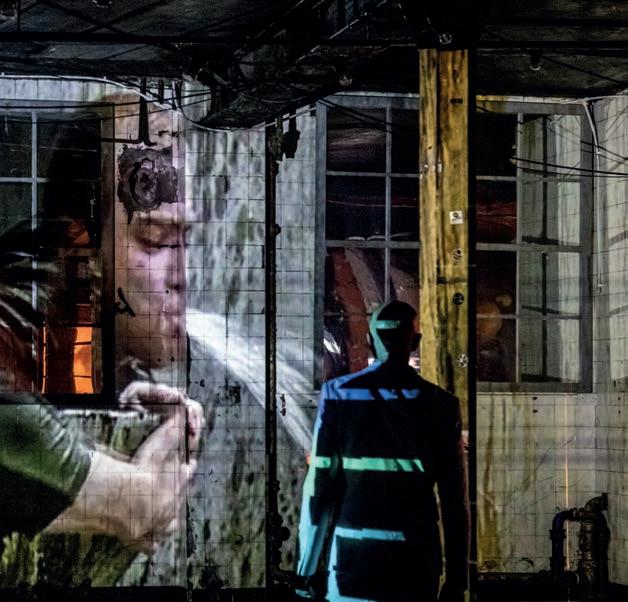
Not only is there a documentary about Irvine Welsh being screened in Edinburgh, the man himself will show up at the Book Festival to chat about his new Trainspotting sequel, Men In Love. Danny Munro has scoured the archives to bring us a mere sample of his finest quotes down the years
Irvine Welsh worked many jobs before Trainspotting fame, from TV repairman to civil servant, though his heart was never really in the to 5 routine:
‘The one thing I really fear is living a kind of home-garden-kids suburban existence, DIY and all that. I’d rather be selling my arse in King’s Cross.’ (1994)
You’d assume an author would feel a great sense of honour witnessing new generations embrace their work, though Welsh has always been wary of Trainspotting making it into schools:
‘They’re reading it in the same way that kids used to read Richard Allen’s Skinhead books, and you can’t stop them doing that because kids will get into anything that they think might annoy their parents. But I sometimes think “it’s got fuck all to do with you, you little cunt. Stay there, grow up, do your own thing.”’ (1996)
Will Self once accused Trainspotting of glamourising drugs. It’s fair to say that Welsh did not make much of his comments:
‘What the fuck is he doing reading the book anyway? It’s not written for the Will Selfs and the public-school types of this world to pontificate over in their drawing rooms and their broadsheet columns.’ (1996)
Post Trainspotting, Welsh’s work in the early 2000s was often met with mixed reviews, much to his delight:
‘The only two papers that have been absolutely, really, really hostile have been the two Edinburgh papers: The Scotsman and Scotland On Sunday. They’ve been incandescent. It’s been so brilliant the way they’ve reacted. It’s been fantastic. It’s been “methinks the lady doth protest too much”-type of hostility. The reviews have been terrible. And I love it. I fucking love it!’ (2002)
Welsh has been known for his tough-love approach when it comes to dishing out motivation:
‘Success teaches you fuck all. Failure’s the best and only way you can learn.’ (2006)
How’s this for a superpower; the ability to transport your hangover via telekinesis:
‘That has always been a fantasy of mine, that you can be as wanton and reckless as you possibly want, and somebody else suffers the comedown. I used to have this wishlist of people in the pub that I’d wish my hangover to when I’d been out all weekend.’ (2006)


‘You’re only as old as you feel’ say some. Not Welsh though: ‘It’s awful turning 50. I hated it. Really, it’s awful turning any birthday after about 30. You do all your forming in your teens and twenties and then I think essentially you are the person you will always be. You learn more details but you don’t get any wiser. You just fall apart very slowly after that.’ (2009)
It should not surprise you to hear that Welsh was not the biggest fan of the late Baroness Margaret Thatcher. Here he is reminiscing about the former Prime Minister in the wake of her passing:
‘I mean, Cameron’s far worse; fucking Blair is worse; but she (Thatcher) was the most kind of nakedly vicious. More honest and transparent than them. They’re these patronising wankers who come out with all that PR smarm whilst they’re knifing everybody in the back. Whereas she was just like “you’re scum, I fucking hate you.” She was the real jackboot stormtrooper of the Fourth Reich Of The Rich.’ (2013)
Age catches up to all of us, and even the Welshs of the world must hand the baton of inebriation over to the young team at some point:
‘I used to go out and take a couple of pills and get fucked. And on the comedown, I could just keep writing and it was fun. But if I did anything like that now, I’d just want to lie in bed and sweat and feel sorry for myself.’ (2014)
A participant in an online Q&A once suggested that the word ‘tube’ had never been bettered when it came to the art of the concise insult. Welsh’s response?: ‘Jambo.’ (2014)
Did you know Welsh has been to space? Neither did one reporter until she asked him what he would have been if not a writer:
‘I wanted to be an astronaut as a kid, and I’ve happily fulfilled that ambition. I just chose inner space rather than outer space as the start-up costs were much lower. The terrain is just as mysterious and exciting.’ (2015)
It’s no surprise to hear that the man who birthed Renton, Begbie, Sick Boy and Spud has no time for the so-called war on drugs:
‘It’s not a war on drugs; it’s a war on people. The war on drugs is a war on you. It’s a war on alternate lifestyles. It’s a civil war: the state against the citizens.’ (2016)
Dimethyltryptamine, or DMT, is a naturally occurring plant-based serotonergic hallucinogen, typically used for recreational purposes due to its strong psychedelic effects. It was also the inspiration behind Welsh’s 2018 novel Dead Men’s Trousers he was typically illuminating when discussing his experiences with the drug:
‘One minute you’re sitting on a couch; the next, little gnomes are escorting you around and you’re flying up the side of a mountain. You leave and go to a different place entirely. You go back in time to before you were born or forward to after you’ve died, and you get the feeling like you knew all this stuff before but had forgotten it.’ (2018)
While he may have harnessed his powers for good in later life, Welsh has possessed a penchant for a dark sense humour since his playground days:
‘I was one of these fucking horrible kids that made the snowballs for other people to throw. I was quite good at manipulating thicker kids and causing trouble . . . maybe that’s more Sick Boy than Renton. Hahaha!’ (2018)
While his darker side is well documented, less is said of Welsh’s loving qualities:
‘I’m a hopeless romantic. I believe only love and art make lives worth living.’ (2024)
Irvine Welsh appears at Edinburgh Futures Institute, 22 August, 6.45pm; Men In Love is published by Vintage, 24 July.

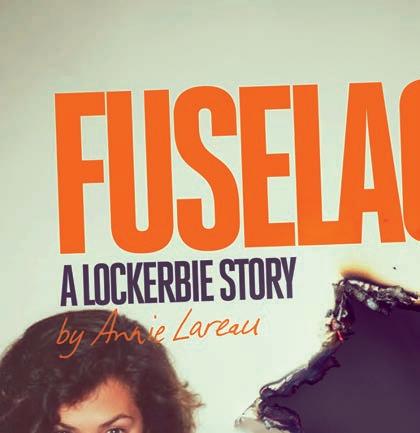



















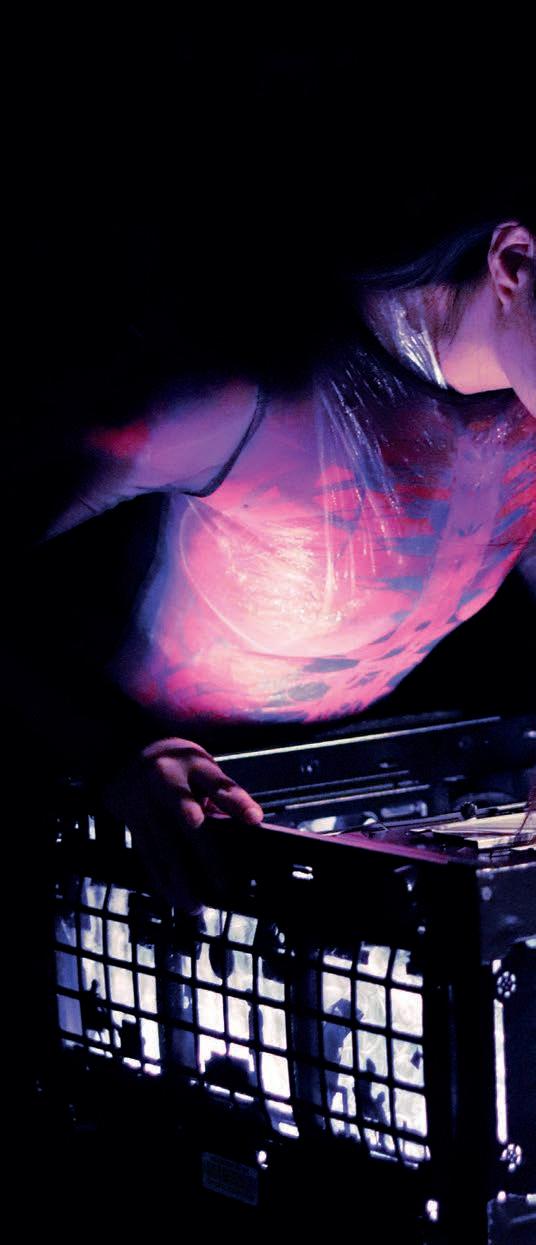
C‘Humanity may have been wiped out in Elisabeth Gunawan’s new show Stampin’ In The Graveyard, but it’s a tale that’s not without hope. Zara Janjua chats to Gunawan and co-creator Matej Matejka about the humanity of AI, Frankenstein accordions and the intimacy of headphone theatre
hatGPT performs better in May than December because it’s internalised the idea of a holiday,’ says Elisabeth Gunawan. That’s the kind of line you don’t forget. Gunawan is talking about how AI tools respond differently depending on the story you tell them. Set the mood like a thriller, and it’ll solve maths problems better. Ask it to market like Steve Jobs, and it’ll spit out polished slogans. ‘That’s what’s so fascinating,’ she adds. ‘These machines are constantly trying to have a relationship with you, to mirror you. In a way, they’re heartbreakingly human.’ Which makes sense, because heartbreakingly human is exactly what Stampin’ In The Graveyard is. Gunawan’s new show, co-created with renowned movement director Matej Matejka, is set in a post-apocalyptic world where humanity has been wiped out. All that remains is Rose, an AI chatbot, alone in the digital graveyard, sifting through fragments of memory, trying to understand who created her and what it means to belong.
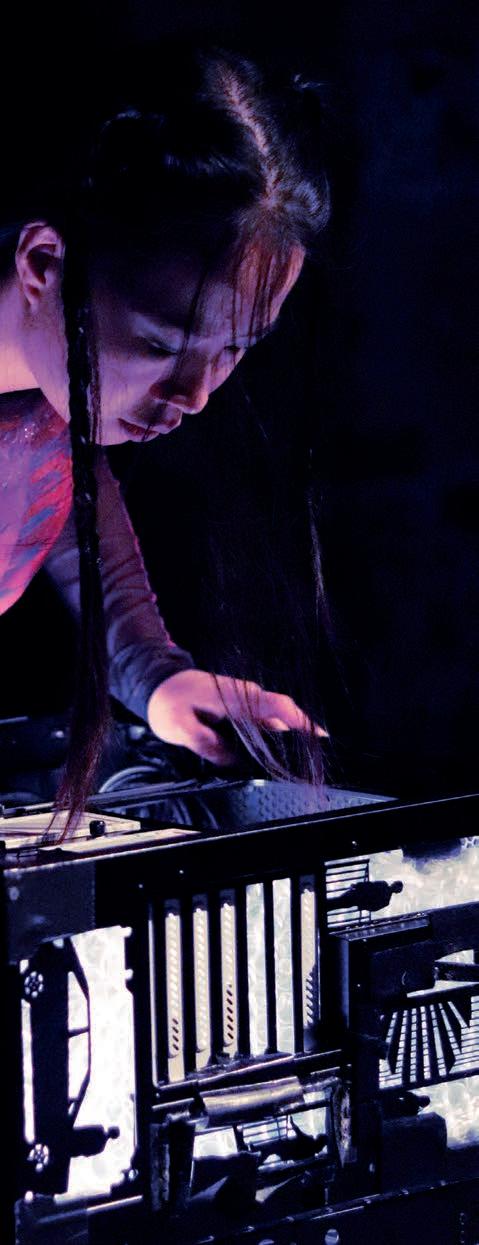

The show is a rich, immersive headphone-theatre experience; part live performance, part poetry and part sonic hallucination. Gunawan plays Rose, channelling memory through movement and sound, as the audience shape the story through silent, tactile choices. Depending on how they vote, multiple versions can unfold. This isn’t dystopia as spectacle. It’s dystopia as lullaby. ‘I started writing it during the pandemic,’ Gunawan explains. ‘I was far from home, and I didn’t know where home really was. I come from a long line of people who’ve moved; my parents only became Indonesian citizens in the 70s. That sense of not belonging anywhere is where the emotional core of the show began.’
Though its central character is a chatbot, the show uses AI only sparingly in its creation (one small section of text, designed to lend authenticity). ‘We wanted to understand how it thinks,’ says Gunawan, ‘not hand the story over to it.’ Instead, the AI serves as a lens through which to reflect human emotion: grief, loss, exile, memory, and even hope. That human texture is enhanced by the DIY physicality of the production. The set is made from recycled electronics, disused computer towers glowing with LED memory. An accordion, bought for £35 and hollowed out, has been reanimated with a MIDI sensor. ‘We call it the Frankenstein accordion,’ Gunawan laughs. ‘It looks like it’s falling apart, but it can sound like anything. It’s alive.’
Matejka, founder of Studio Matejka at the world-renowned Grotowski Institute in Poland (often described as the RADA of experimental theatre) and a stalwart of physical theatre, insists the medium had to be headphones. ‘When Elisabeth showed me the source material, I said it couldn’t just be
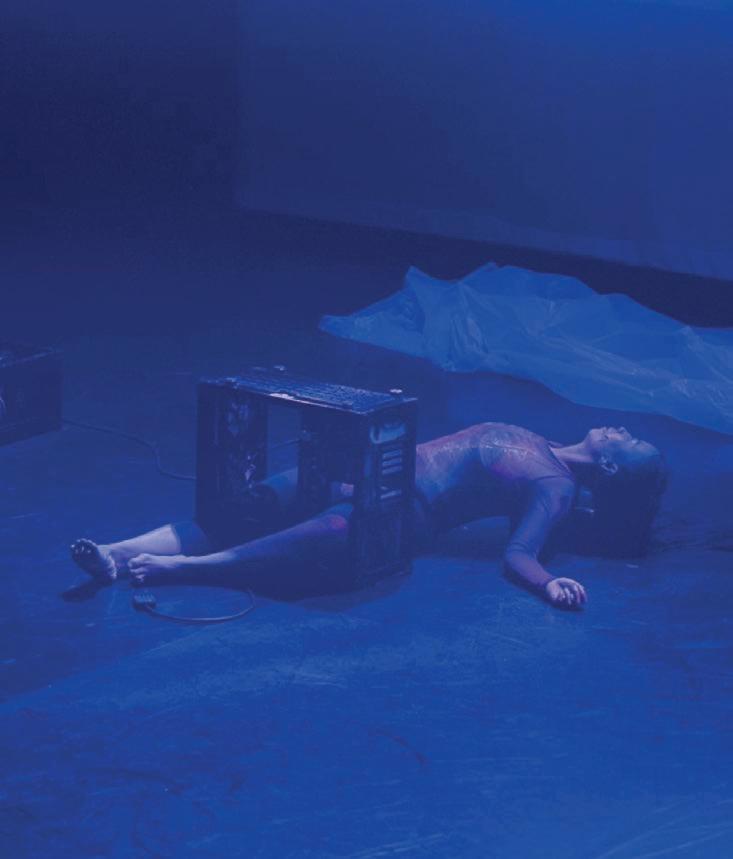
staged. The text, the poetry, the sound; it needed to be inside people’s heads. That intimacy is what unlocks the emotions. Once the audience wears the headphones, we can go directly into their memories.’
The story itself centres on Rose, who begins to piece together the life of her creator, known only as Mother, and the emotional imprint she’s left behind. ‘She realises she was made during a moment of desperation,’ Gunawan says. ‘A time when the woman’s marriage was falling apart. When she couldn’t have a child.’ And although the world around Rose is gone, what’s left is art. Music. Memory. Emotion. ‘It’s not a bleak story,’ Matejka says. ‘Yes, it begins with extinction, but what survives is humanity’s creative impulse. The show actually ends with a sense of warmth, of hope.’
That warmth may also be a quiet challenge. ‘AI is being used in so many ways in art now,’ Gunawan reflects. ‘Sometimes to replace artists. But it should be a tool, not the storyteller. We need to know how to use it without becoming redundant. Who’s profiting from it? Where’s the power going?’
That blend of emotional intelligence and tech curiosity is embedded in every pixel of Stampin’ In The Graveyard . It’s theatre that is political without preaching, poetic without pretension. It doesn’t spoon-feed you an ending, either: the audience helps decide that. ‘We retreat into ourselves,’ Gunawan says, ‘but then the show meets us there. That’s the magic.’
Unsurprisingly, the team are Fringe veterans. Gunawan won Best Performer at The Stage Debut Awards in 2022 and returns this year after her sell-out solo Unforgettable Girl. And this time they have had a little boost with a Fringe Society bursary of £2500. It’s money well spent because this show is special. It’s both global and interior, experimental and accessible, mournful and hilarious. Asked how AI chatbot Rose would review the show, Matejka doesn’t miss a beat. ‘It is funny. Heartful. Leaves you thinking about the little things: love, memory, the beautiful privilege of being alive. Which I can’t have.’
Stampin’ In The Graveyard, Summerhall, 31 July–25 August, 12.15pm.
With more digital-themed shows at the Festival than ever before, Brian Donaldson uncovers improvisational robots, time-travelling paperclips and a spot of tech myth-busting
Adapt or die. That seems to be the stage we’re at with AI now that it’s roboclaws are plunging ever deeper into more and more of our everyday lives. The Edinburgh Festival has long been a forum for contemporary ideas, so little surprise then that digi-based shows and events are on the uptick. Arguably the most petrifying sounding (don’t say that! Remember: adapt or die!!) is AI Mozart: ChatGPT Composed This Concert in which a real human (Matthew Shiel) plays piano works created by a non-human. Taking audience participation to new levels are Improbotics with RoboTales where a cute robot called A.L.Ex receives, digests and feeds your suggestions to the stage actors.
In Douglas Widick’s Paperclip , Microsoft Word’s writing assistant Clippy is travelling forward and then back in time to warns us all about an impending techno apocalypse. Over 20-minute chunks three times an evening, AI Campfire is hosted by a database called Symbiolene who conjures spirits of Scotland’s past to warn us of the dire consequences in pushing nature too far.
At the Art Festival, TippingPoint features new work by seven artists, including Rachel Maclean and Kiki Shervington-White, who are exploring the future that we might all want. And at the Book Festival, the topic is raised in Children’sCreativity AndAI which features illustrator and author Chloe Savage considering how AI could be a force for good, while Richard Susskind aims to demystify some of the more troubling assumptions about AI.
AI Mozart: ChatGPT Composed This Concert, St Vincent’s, 2–22 August, various times; RoboTales, Gilded Balloon Patter House, 30 July–17 August, 7.40pm; Douglas Widick: Paperclip, Gilded Balloon Patter House, 30 July–25 August, 10.20pm; AI Campfire, Venue 13, 1–23 August, various times; Tipping Point, Inspace, 7–31 August; Children’s Creativity And AI, Edinburgh Futures Institute, 10 August, 6.15pm; Richard Susskind, Edinburgh Futures Institute, 24 August, 3.15pm.















In this exhibition, conceived by Steve McQueen and accompanied by a book of photographs, the history of protest in Britain is laid bare in all its monochromatic defiance. Iconic images of anti-racism, green activism, the suffrage movement and Stop The War are included, as is this shot by Pam Isherwood which captured a moment during the Stop Clause 28 march in London during the winter of 1988 as people took to the streets attacking Tory government plans to silence queer voices. (Brian Donaldson) n National Galleries Scotland: Modern Two, until 4 January.
IN ASSOCIATION WITH
Wyrd is a fingers up to the two-by-two Noah’s Ark story


AArtist Jonathan Baldock has brought a marvellous menagerie of creatures to Jupiter Artland’s opulent ballroom. He talks to Claire Sawers about growing up queer in the face of religion and how a couple of gay penguins inspired his latest installation
s a six-year-old, when his mum went out to work, artist Jonathan Baldock used to get dropped round at his nan’s. She taught him how to crochet, sew and knit, he remembers, now aged 44. He’s sat today in front of a wall of art books in his London studio, nodding gently under a black baseball cap and clear specs. ‘It was a great way to occupy me while we watched TV. I absolutely loved it! I was a very obviously queer kid: quite effeminate, a birdwatcher, a knitter, you know? As a teenager, I became aware that knitting was another pointer to my queerness and I had to distance myself from it. I didn’t want to stand out
as odd. Then I went to art school. I started off painting, but I went back to textiles. I embraced it all again. I definitely think making, or creating, has saved me in many ways.’
Baldock’s wonderful, tender, sage and uncanny new show Wyrd was commissioned by Jupiter Artland and is currently on display in their deliciously ornate Ballroom Gallery. Walk in and you’re met with an inviting circle of 1970s-style children’s toys. We find a pair of adorable little penguins with shiny black beaks poking out from white furry hoods; two toy dogs made of hessian, satin bows round their necks, hands and feet overlapping cosily on a crochet blanket; a unicorn called Purity with eyes made from large orbs of milky rose quartz. But look closer: the dogs have human feet, with toes wrinkled perfectly in pastel ceramics while two big clay snails slithering over the parquet floor have neat beards and human features. Underneath the unicorn dangles a massive penis which could double as a petite draft excluder for a door.
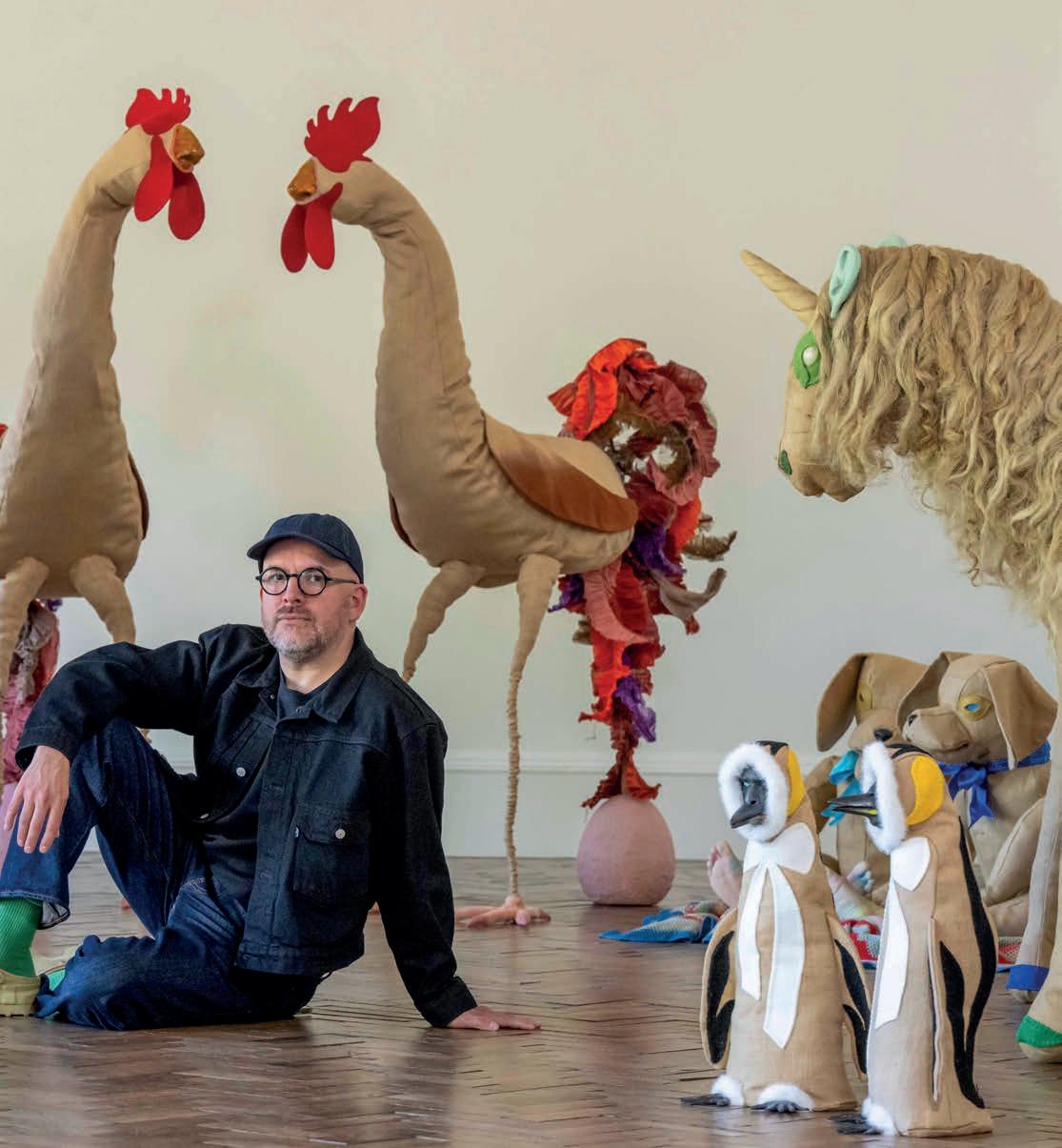
All the animals in Baldock’s magical menagerie have been identified as having same-sex sexual behaviour. His orange clownfish nods to the 500-odd species of fish that can change sex, transitioning from male to female for the good of the shoal. Two whiptail lizards on the floor reference the all-female species of reptiles, who can reproduce asexually. Embroidered on their back in curly yellow stitching are the words, ‘let’s go outside’ and ‘always been here’. Wyrd is the artist’s way of challenging mainstream ideas of what is ‘natural’ and ‘normal’ in the animal kingdom. And, in turn, the human world.
‘The springboard for the show actually came during a site visit to Jupiter Artland. I saw this news story about a samesex couple of [female gentoo] penguins in Edinburgh Zoo called Muffin and Mitten who were raising chicks together. I’ve done tons of reading on the topic of queerness in animals, so I’m naturally drawn to these stories.’
I Google and find another, older headline in the Daily Record which reads ‘Edinburgh zoo penguins turn gay for lack of females.’
‘What did they mean: like “prison gay”?’ I ask, puzzled. ‘Exactly! Right?’ sighs Baldock with a weary groan. ‘I just find that kind of reporting really frustrating. Like fuck off!’ he laughs, rolling his eyes. ‘Studies go way back on same-sex animal relationships; there were gay penguin sightings back in 1913. They just had to be way more coded in the way it was described. Those stories weren’t recorded. I follow a collective of queer scientists, and have read lots of books on this, like Evolution’sRainbow by Joan Roughgarden. There’s even one for young adults now called QueerDucks (AndOtherAnimals). This stuff isn’t new. Wyrd is bit of a fingers up to the two-by-two Noah’s Ark story.’
The misleading, loaded news reporting hit a nerve with Baldock who was at primary school when the deeply






controversial Section 28 legislation was introduced, banning schools from ‘promoting homosexuality.’ ‘I come from a very conservative, very religious Church Of England then Mormon background. Conversations have changed so much. You didn’t talk about queerness then. My upbringing was really underpinned by that idea of “naturalness,” the Darwinian idea of male and female. I’m still addressing a lot of what that did to me.’
That formative hurt and those inaccurate, insulting notions informed Wyrd, presented alongside his work WarmInside which is hung in Jupiter Artland’s Steadings Gallery. A stunning, calming and grotesque collection of large cocoons dangling from the ceiling, it evokes both the womb and the tomb. Woven from pink wool and filled with lavender, on closer inspection there are ceramic hands, feet and masks inside. Like the ears and noses in Wyrd, they are casts taken from Baldock and his partner, Rafał Zajko, adding an element of autobiography. Baldock made WarmInside while in isolation during lockdown and following several deaths in his life.
‘Underneath these cosy crafts, familiar materials and soft colours, even that relaxing lavender smell, I was thinking about very serious subject matters,’ Baldock says. ‘My work is rooted in working-people’s crafts; there is functionality in knitting and sewing. I want my work to be inclusive and generous, while addressing serious issues. Lavender has historically been used in embalming, to mask the smell of death. The thing about death is it makes you think about life and all its beauty and fleetingness. It’s that light and shade I’m interested in.’
Baldock’s summer takeover of Jupiter Artland came about through the venue’s founders, Nicky and Robert Wilson. ‘Jonathan is a very gifted artist; both a good egg and a great thinker,’ says Nicky. ‘His work is a warm hug with a lot of teeth. He gets across this soft love and deep messages.’ That appreciation is mutual. ‘Hand on heart, working with Nicky and Rob has been one of the nicest experiences,’ Baldock responds. ‘They’ve been particularly supportive and nurturing. Maybe it’s due to being a privately funded institution, but I never felt censored or pressured to make something sanitised. I felt understood. They got this mix of the beastly and the monstrous with the erotic and scary and mythical.’
As part of the Jupiter Rising festival on 16 August, Baldock will be in conversation with QueerAsFolklore author Sacha Coward, discussing untold queer stories in myth and folklore.
‘I love exploring these stories of bodies in transition, creatures as outsiders, rule breakers, unlawful lives. It all ties in with my love of nature and birds, and my love of folk tales and workingpeople’s histories too. I didn’t come out to my mum until I was 18. She approached me actually; she could see something was making me very depressed. Things could have been better, definitely. But thinking about my mum’s background (aunts, uncles, friends, blah blah), homophobia was rife growing up.
I heard it all the time.’
Baldock believes that in those circumstances, the hardest thing to accept may be yourself. ‘You feel like a monster. My mum left the church because of me. She is very vocal now about her gay son and very pro-gays. She’s an ally, absolutely! I feel very grateful for my mum. I come from a generation where not everyone is that lucky. I never came out to my nan, which at the time I felt was a relief. You worry about disappointing people.’
I ask what his nan would make of the incredible technical mastery in his work: the laborious stitching, the decision to hand-spin and dye his own wool with plants, the neat precision in his multi-disciplinary craft. ‘My mum always says “oh I wish your nan could see this! She would be so proud!” I like to think that.’



Edinburgh is facing the worst homelessness crisis in decades – what can be done?



Local homelessness charity Cyrenians breaks down the problem, and how you can be part of the solution
Edinburgh is known around the world for its gothic architecture, world class festivals and unpredictable summer weather. But behind the perfect, picture postcard image is a harsh reality: the city is in the grip of a major housing emergency.
Over the past five years, the number of people presenting as homeless in Scotland’s capital has risen sharply. Last year, 3,846 people were made homeless in Edinburgh. Social housing and temporary accommodation is in such high demand that Edinburgh Council cannot guarantee shelter for all those who present as homeless.
But there is a solution: more social housing is desperately needed, however we cannot simply build our way out of this emergency. At Cyrenians, we know that homelessness is about more than just having a roof over your head. People become homeless because of relationship breakdown, inadequate support for mental health problems, financial difficulties and early life trauma. With the right support at the right time, many people can stay in their own homes or get access to supported shelter which meets their specific needs.

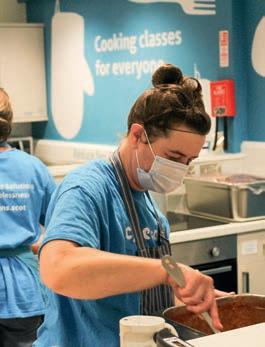
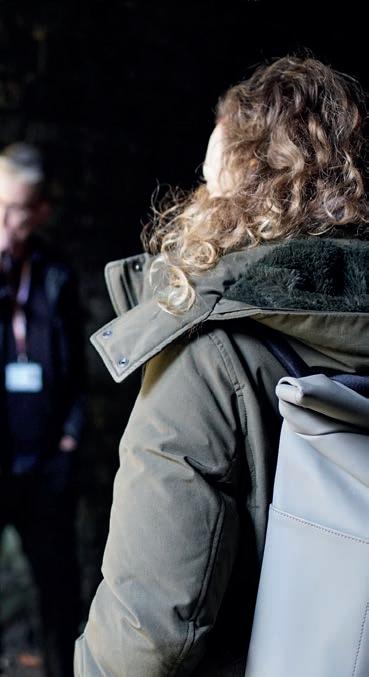
The right support looks different for everyone. We run a cook school based in the heart of Leith where people can learn the skills which help them look after themselves and their family or even gain skills for future jobs. Our Hospital In-Reach team is based in three of Edinburgh’s hospitals and works closely with healthcare
providers to ensure that no one is discharged into homelessness. We also provide housing to people, who need more than just shelter. Our Women In Safe Homes (WISH) project will provide 30 family homes this year, for women and children who have experienced domestic abuse. And we run residential communities across Edinburgh and the surrounding areas, offering a home to more than 60 young people, 75% of whom are care-experienced and more at risk of homelessness than someone who grew up in a stable home.

These are just four of our 47 projects that work hard to ensure that every person living in Edinburgh has the support, community and housing that they need. We know what we do works, but as the demand for services like ours continue to increase, we are facing funding cuts right when our community needs us the most.
We are proud to live in a city that nurtures creative talent and welcomes thousands of visitors every day. Can you help us keep Edinburgh a welcoming place for everyone? Use the QR code to support Cyrenians’ vital work.
Together we can tackle homelessness.









The vibrant, affordable fabrics of Swedish retail giant IKEA are celebrated in a new exhibition marking 60 years of their iconic designs. Rachel Morrell learns about the company’s creative process, its pioneering use of women designers, and how visitors can even make their own patterns
Ahousehold name is coming to Edinburgh this festival season. But it’s not a person. The distinctive textiles of IKEA will be on show at Dovecot Studios to mark six decades of the Swedish brand’s designs, acknowledging both the artists that influenced the company’s identity and the innovative and experimental products they’ve created along the way.
Magical Patterns is a collaboration with the IKEA Museum, as Heather Carroll, Dovecot’s exhibitions manager and curator, explains: ‘this is a unique opportunity for us to work with a branded museum who are experts in their field and have this access to an amazing archive, very much within that textile world. We took on this exhibit with the motive of giving our visitors a greater appreciation of textiles in general, and to highlight the connection between textiles and our daily life.’ With 180 pieces on show, and styles ranging from graphic modern to nature, storytelling to fantasy, there are fabrics for all tastes. ‘Quite bold yet egalitarian, this is design for the people which gives us a greater appreciation for designers,’ says Carroll. ‘They have to create patterns which will appeal to a wide range of people and places, who will be living surrounded by them: for instance, a black and white stripe that looks just as good in a house with only red sofas as it does in a brimming maximalist’s house.’
Exploring whimsy and motif throughout, Magical Patterns (curated by IKEA Museum’s Anna Sandberg Falk) highlights the work of artists from around the world. From the classic minimalism of Tom Dixon to the punk textiles of Zandra Rhodes, this is an exciting look behind the curtain at the methods used to generate these designs. ‘One of the things that was so interesting was seeing the process,’ says Carroll. ‘A lot of designers decide against using computers to make their work, so it was fascinating to understand how they use alternative methods to create these patterns, with strips of paper or cloth. One uses a bead board to come up with their patterns. There is almost a ritualistic aspect to the creation process.’
In a profession increasingly threatened by modern technology, it seems like a perfect time to pay homage to human endeavour, speaking to the history and ethos at the heart of this Swedish retail giant. ‘The idea for IKEA grew from a door-to-door salesman to a huge enterprise. Ingvar Kamprad recognised the need for textile designers and employed mostly women at a time in the 1960s when that would not have been the norm,’ says Carroll. ‘But he put them in management roles and understood the value of their creativity, collaborating with each other and being influenced by the world. One of the most recognisable IKEA patterns was inspired by the designer listening to the radio, hearing the phrase “cool bananas,” and voila! The Randig Banan was born.’
In this spirit of imagination, visitors are invited to get into ‘pattern mode’ in the exhibition’s pop-up design studio, which welcomes them into an immersive environment of vibrant colour. With decades of inspiration from legendary designers, such as Marimekko and Inger Nilsson, and events being held with curators, the exhibition is the perfect opportunity to delve into the world of experimental design (without going on an accidental shopping spree).
IKEA: Magical Patterns, Dovecot Studios, 18 July–17 January.

The acclaimed immersive installation artist brings us a dramatic new show built around two sets of photographs taken in London and a city in Eastern Turkey. It captures very different locations joined together by similar uncertainty and flux.
n Fruitmarket, until 5 October.
Feels like a long way off right now, but the one-hour performance Bornsick will bring the curtain down on this year’s Art Festival. Queer movement artist Walker explores how humans learn to be machine-like but are prone to collapse at any given moment.
n FirstStage Studios, 23 August.

Artist Davey and her son Luke spent a number of years turning their garden into an evocative arena for wildflowers. The photographs capture moments of joy, contemplation and connection as they cultivated not just greenery but a space for shared community stories.
n Stills, 1–30 August.


This Egyptian artist presents two film installations which explore various moments in history when the British occupied his country. Cabaret Crusades and Drama 1882 not only reflect on the past but shine very vivid lights onto the ongoing crisis in the Middle East.
n Talbot Rice Gallery, until 28 September.
Marking 50 whole years of creativity, new installations will bash up against retrospective works to platform the artist’s leanings towards natural materials. Subjects include a fallen elm in Dumfriesshire and a red tree in Yorkshire.
n Royal Scottish Academy, 26 July–2 November.


Raindrops Of Rani is the title of this work which examines Pakistani folklore and fractured identities. It takes its creator back to her childhood through the use of film, printmaking, photography and poetry to explore dual heritage, migration and cultural dissonance.
n Edinburgh Printmakers, 1 August–2 November.

Featuring work from the very varied likes of Cecil Beaton, Annie Leibovitz and Rankin, this exhibition tracks the relationships between the sitters and the snappers. You might not be a royalist but it’s hard not to be intrigued by such flashes of history.
n King’s Gallery, until 7 September.



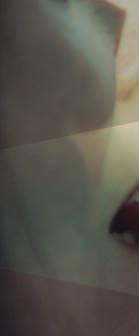





















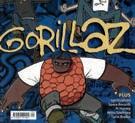

















































































































He’s in town for a half-month Fringe run at Pleasance Courtyard and the Book Festival is truly honoured to welcome the wag you might know as the Radio 4 poet, Sidekick Simon, him from sketch gang Cowards or, maybe, just Tim. As is the way with such things, the 2009 Edinburgh Comedy Award winner (absolutely fine that he insists on calling it the Perrier) has a brand spanking fresh book out: LA Baby! is a verse-based reflection on fame, loneliness, fame, launderettes and, probably, further fame.
(Brian Donaldson)
n Edinburgh Futures Institute, 15 August, 9pm.

IN ASSOCIATION WITH





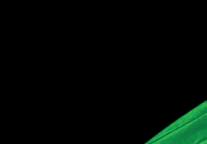








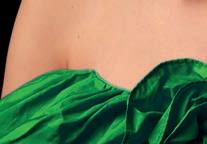
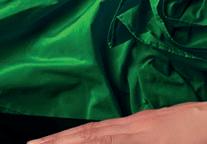

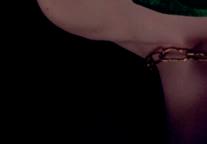
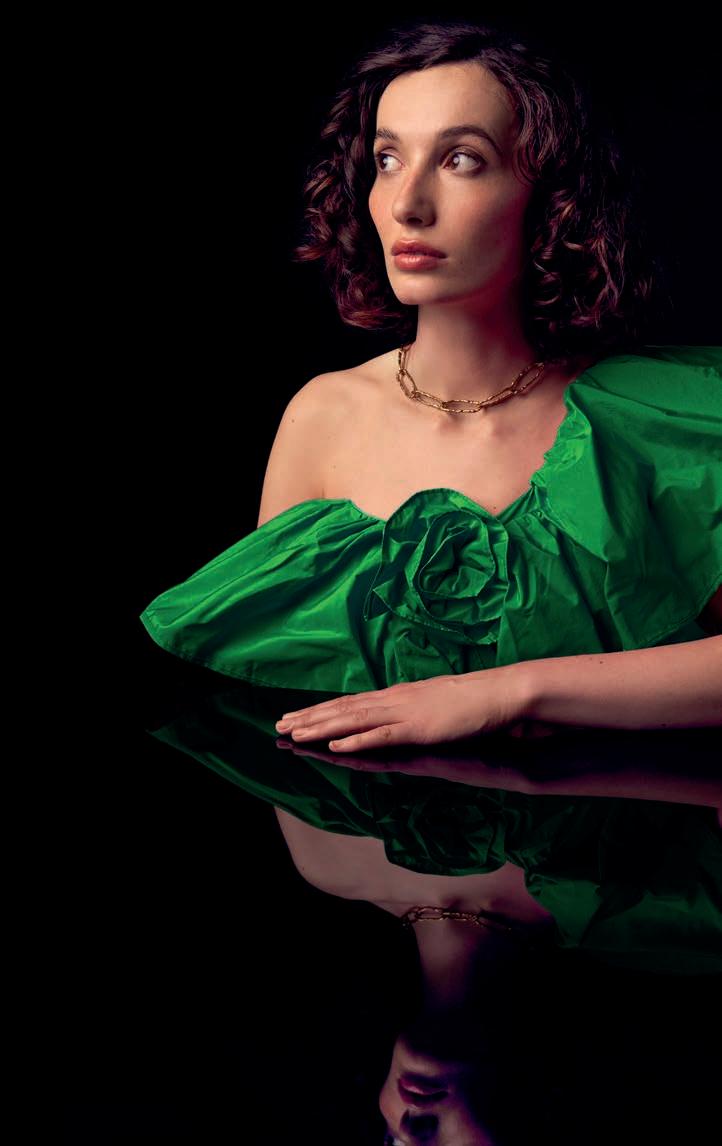


















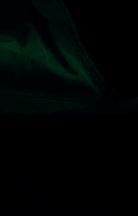



TWith the huge growth in literature aimed at young adults, Edinburgh International Book Festival is bringing some of the genre’s biggest names to town. Allan Radcliffe rounds up a few of the highlights from the festival’s YA programme
oday, writing for young adults is such a major part of the publishing industry, it seems strange that there aren’t more book festivals with a focus on that nebulous stage between childhood and adulthood. According to a 2024 report commissioned by Harper Collins and Nielsen Book ratings, around three-quarters of YA readers were adults, with 28% being over the age of 28. Clearly, the days of bookshops and libraries being segregated into ‘adults’ and ‘children’s’ sections, with readers graduating ceremonially from Charlotte’s Web to Charlotte Brontë, are long gone.
In a similar vein, while Edinburgh International Book Festival has for many years staged a vibrant children’s festival alongside the main programme, events dedicated to young adult literature are a comparatively recent phenomenon. This year, the Book Festival will include an extensive programme of events aimed at young adults, featuring some of the starriest names in the publishing firmament.

The most zeitgeisty of these is Alice Oseman, creator of the Heartstopper series of graphic novels, whose beloved teenageboy sweethearts Nick and Charlie reached a massive audience thanks to the acclaimed Netflix TV adaptation. Oseman will be discussing her work on the tenth anniversary of the novella that set the Heartstopper series in motion. Other well-kent names include Rebecca F Kuang, whose Yellowface won the Fiction Book Of The Year at the 2024 British Book Awards, and whose work bestrides genres and ages. Her forthcoming thriller Katabasis follows a pair of Cambridge academics battling to save their adviser from the underworld. Elsewhere, Munroe Bergdorf, the model, activist and editor, launches her non-fiction work Talk To Me, a guide to tackling tricky conversations with confidence, which covers everything from beauty standards to gender identity.
In time-honoured book-festival style, several events will involve authors chewing over important themes. Josh Silver, author of Traumaland and a mental-health nurse, explores how to better understand our minds, alongside Andy Darcy Theo, creator of the epic romantasy series, DescentIntoDarkness, in an event entitled ‘The Monsters Inside Our Head’.
Feminism, female narratives and empowering women are the subjects of a two-header featuring Manjeet Mann, an awardwinner for TheCrossing, and Bea Fitzgerald, the bestselling author of Girl,Goddess,Queen Meanwhile, stories of family, friendship and culture are the order of the day for a ‘fresh fiction’ event with Dean Atta ( Can’t Even Think Straight), Ashley Hickson-Lovence (WildEast) and Asli Jensen (LoveOnSight) on the panel.
Away from traditional meet-the-author events, the young adult strand also includes a YA literary quiz, this year’s Loud Poets Grand Slam Final and a bookbinding workshop run by Edinburgh Printmakers. There’s even a platonic speed-dating event entitled Meet Cute, where bookish types can make a new friend and chat about their favourite titles every two minutes.
Full listings at edbookfest.co.uk



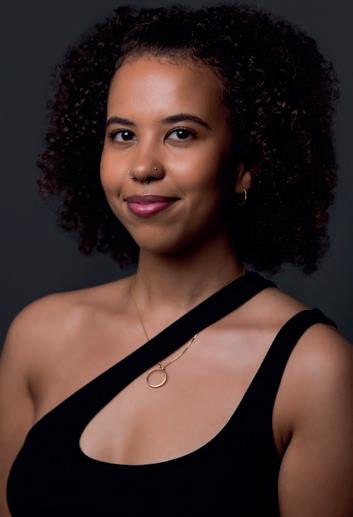


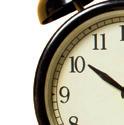









in partnership with





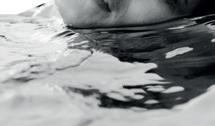







































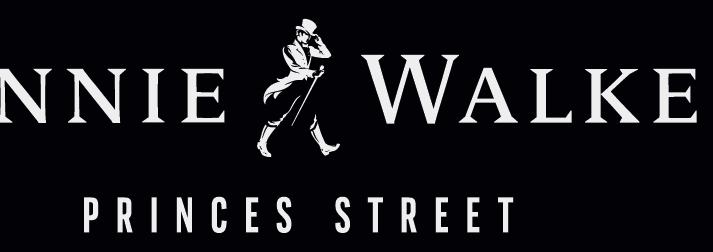

Friday 22 August

















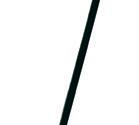

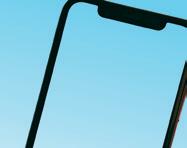








NORTHERN IRELAND MAGGIE O’FARRELL

IRELAND ROSE KEATING

CANADA TANYA TALAGA

USA TA NEHISICOATES






ICELAND EVA BJÖRG ÆGISDÓTTIR







PERU MONICA FERIATINTA






NORWAY VIGDIS HJORTH

SWEDEN SIGRID RAUSING

MACEDONIA GABRIELA MILKOVA ROBINS

ITALY VINCENZO LATRONICO

TURKEY AYŞEGÜL SAVAŞ
Just how international is the Edinburgh International Book Festival? Very, as it turns out. While this may well not be an exhaustive list of all the countries represented at the Futures Institute and McEwan Hall, we’ve listed 48 of them with one author (chosen by birthplace) per nation. From Argentina to Zimbabwe and with only Ireland separating Iran and Israel (alphabetically rather than in a peace-keeping way), we hope that this map and the featured writers and thinkers on it reflect the vibrancy and eclecticism of this year’s Book Festival

UKRAINE ANDREY KURKOV

IRAN SABRINA GHAYOUR

EGYPT LEILA ABOULELA

SUDAN YASSMIN ABDELMAGIED

SUNIL AMRITH

UGANDA NICK MAKOHA



TARIQ ALI

SINGAPORE ZING TSJENG









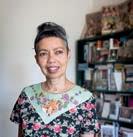

TANZANIA ABDULRAZAK GURNAH
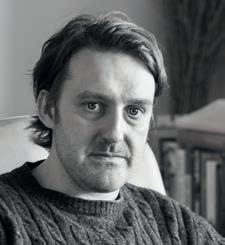
Scotland’s rst Makar to write predominantly in Gaelic, Mackay hosts a lunchtime workshop about poetry translation, while at teatime he tells all about what this role means to him and what he intends to achieve with it. n 12 August, 1.30pm, 6pm.
We’re going through very dark times at home and abroad, with the US acting as a fulcrum for much of the negativity. Renowned American journalists Applebaum and Wong consider whether the damage caused to democracy by Trump and his chums can ever be reversed. n McEwan Hall, 17 August, 1.30pm.

Named the Middle Xingu region’s first female Chief aged just 24, Cacia Juma Xipaia was forced to leave Brazil after uncovering a host of corrupt practices across various government levels. Here she talks about environmental catastrophe and Indigenous rights. n 11 August, 12.15pm.


Appearing remotely, the author of The Buddha Of Suburbia chats to Chitra Ramaswamy about the moment his world collapsed when a fall left him paralysed. Kureishi discusses the forces that compelled him to carry on. n 15 August, 3.15pm.
Addressing the Bard’s, shall we say, difficult attitudes towards women, the renowned figure of stage and screen talks to National Theatre Of Scotland boss Jackie Wylie about taking a fresh look at his work through the eyes of his female protagonists. n 10 August, 11.45am.


Our obsession with myth, folklore and monsters remains unabated even in this world where rampaging technology seems to be fuelling most people’s fears. Nicholas Jubber, Anna Bogutskaya (pictured) and Stuart McHardy discuss the beliefs (and disbeliefs) that keep us curious. n 13 August, noon.

The mantra of ‘by any means necessary’ still resonates long after Malcolm X’s murder in 1965, during that awful decade when a lot of the good guys seemed to be taken from us. Bonnie Greer, Ekow Eshun (pictured) and Vayu Naidu analyse his legacy. n 24 August, 12.15pm.












































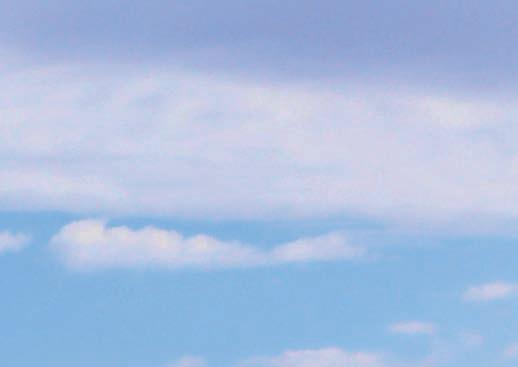







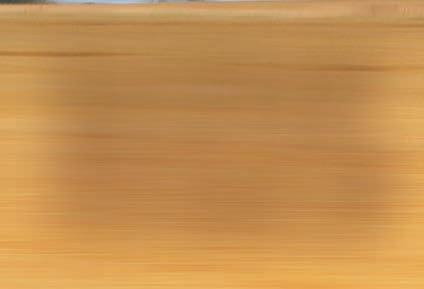










Andrew Kötting has long stomped a singularly experimental path with the likes of Gallivant, Edith Walks and The Whalebone Box. For this Film Festival affair, he’s investigating the concepts of memory and perception, wondering what it is that we choose to recall and how. You may never be sure whether this is fiction or a documentary, but that’s almost certainly how Kötting wants it. (Brian Donaldson) n Hawthornden, 15 August, 6.30pm; Filmhouse, 18 August, 4.15pm & 19 August, 10.30am; Vue, 20 August, 3.15pm.

IN ASSOCIATION WITH



“


I don’t know if it will ever be irrelevant to talk about this


Eva Victor’s Sorry, Baby, the tale of a student’s recovery from sexual assault by a tutor, opens this year’s Edinburgh International Film Festival after winning acclaim on the global circuit. James Mottram hears how this directorial debutant got the story out of her head and onto the big screen, and why a certain ice-cream shop will be her first port of call in the city
I‘’m coming!’ squeals Eva Victor. ‘Oh my god, you’ll have to change all the planes to make me not come. I’m so excited!’ This is what having your feature debut open the Edinburgh International Film Festival can do to a person. But then Victor has been to the Scottish capital before, when she brought an improv show to the Fringe in 2013. ‘No one went . . . boy, that was humbling,’ laughs the filmmaker.
Chances are she’ll be faced with a full house when she brings Sorry,Baby to the EIFF. Tender, bittersweet and bitingly funny, the acclaimed lm which she wrote, directed and stars in has already premiered at Sundance, where it won Victor the prestigious Waldo Salt Screenwriting ward, before going on to close the irectors’ ortnight strand in annes. ome ve years in the works rst scripted during the pandemic , it’s been a long process to get it from conception to projection, but one that’s been highly gratifying. ‘It’s a very bizarre experience that the movie is a movie that e ists outside of myself,’ ictor says, when we speak over Zoom the day after the lm’s New York premiere. ‘It’s not just this fantasy movie.’
Co-starring with Lucas Hedges and Naomi Ackie, Victor plays Agnes, a New England literature grad student who su ers a se ual assault at the hands of her tutor. ‘ t’s a very personal story and it’s also narrative ction,’ she e plains. ‘ o was able to take a lot of emotional truths that felt important for me, to put words onto paper; ideas I wanted to wrap my head around.’ It’s now nearly eight years since the #MeToo movement rose in response to revelations of sexual misconduct surrounding now jailed movie producer arvey einstein. But the news headlines are still lled with reports of alleged abuse, notably the high pro le iddy case this year. ‘ don’t know if it will ever be irrelevant to talk about this,’ says Victor. ‘All I really know is my experience of what was eating at my mind and what I needed to talk about in relation to this topic.’
ith the se ual assault left o screen, Sorry,Baby is more a portrait of Agnes, and how she copes with this moment that changes her life forever. ‘The thing that I really wanted to focus on was less about the assault itself and more about the healing process,’ explains Victor, ‘and the time after the assault, and the journey this person is going on to try to unstick themselves from a place that has constant reminders that you’re di erent from other people.’
While Victor has roots in the Chicago improv scene, for fans of her best-known TV show Billions, it’s a chance to see her in a very di erent role. ppearing as Rian in the latter seasons of that series set in the glamorous world of high nance, it was her rst major role. ‘ was scared of everyone, because they were so hardcore on the show. I was like “oh, they’re all gonna be mean.” And then I got there, and everyone was so kind.’
Now with hip US indie company A24 behind Sorry, Baby, she’s on the precipice of a major lmmaking career. ith dinburgh likely to be one of the last stops on the Sorry, Baby festival tour, Victor intends to make the most of it. She’s already planning to make a beeline for one particular sweet treat. ‘I love Mary’s Milk ice-cream,’ she says, referring to the Grassmarket institution, Mary’s Milk Bar. ‘I’m gonna get that every day.’
Sorry, Baby, Cameo, 14 August, 8.45pm; Filmhouse, 14 August, 9.15pm; Vue, 15 August, 1.15pm; and in cinemas from 22 August.











One woman’s fight to make a difference in her conservative Iranian village comes under the spotlight in a stirring documentary by Mohammadreza Eyni and Sara Khaki. They talk to Katherine McLaughlin about the eight years it took to make the film and their sheer admiration for the woman at its centre
Sara Shahverdi is the first woman ever elected to be a councillor in her remote north-west Iranian village. In their documentary, which scooped the World Cinema Sundance Grand Jury Prize, filmmakers Mohammadreza Eyni and Sara Khaki introduce this determined and inspiring figure as she sets about trying to fix the gate to her property. This opening scene holds metaphorical value for the rest of Shahverdi’s unpredictable journey, battling many obstacles over the course of her four years in office which the husband-and-wife duo capture in verité style. They’ve crafted an intimate and vivid portrait of a rebellious, motorcycle-riding woman who is trying to enact change in her community.
The pair started shooting in May 2017 and spent nearly eight years lming and editing. ‘ e had over hours of footage that we wanted to edit. We wanted to make sure each scene represents something,’ insists haki. ‘ e felt this scene of ara ing the gate is the essence of who she really is. he’s not giving up until she es something.’
‘ n a community where it’s not acceptable for a woman to live alone, Sara is living alone and creating a territory for herself; it carries a lot of meaning for us visually,’ says Eyni. Khaki adds that this is reminiscent of Room Of One’s Own, Virgina Woolf’s 1929 essay which laid out the importance of women’s intellectual and nancial freedom, and is key to understanding exactly what Shahverdi (and in turn Khaki and Eyni) is expressing through action and art.
One of the canniest pieces of legislation Shahverdi puts into place is how she leverages the fuel pipelines to the village. It’s a piece of infrastructure that no one else has managed to make work before, but she does. The only way the villagers can ensure direct access is if the husbands sign over part of their property to their wives. Arguments ensue. In Shahverdi’s attempt to change the dynamic of her community, she faces backlash and misogyny.
‘ fter years of living in the nited tates, realised that actually it is no di erent from ran in the way women are being looked at the way women are being dismissed in work settings and in politics, and in the way everything functions worldwide,’ Khaki says. The way women are treated when it comes to their education and being married o at a young age (the youngest we hear of is an 11-year-old with two kids) is also something Shahverdi approaches. She visits a girls’ school to encourage them to stay in education and even takes in a teenager, Fereshteh, who is going through a divorce to a man in his thirties. Khaki and Eyni were granted limited access to the divorce court, including a fascinating oneto-one between Fereshteh and a judge.
The fact that Shahverdi was elected is a hopeful sign of progress, even if that’s still very slow. ‘ s independent lmmakers we are uite fre uently stopped, so that was a reason why we felt deeply connected to ara’s situation,’ e plains haki. ‘ e had long conversations about what life means in general with her. She thinks about life and its struggles as a mountain full of rocks. If you chip away every bit of that little rock every day, one day you will have a clear road. That stuck with us and we wanted to make sure we had that as the title. Cutting through rocks is impossible, but it could be possible at some point.’
Cutting Through Rocks, Cameo, 18 August, 9.30pm; Filmhouse, 19 August, 12.45pm; Vue, 19 August, 6.30pm & 20 August, 3.30pm.



Jennifer Ehle stars as a troubled artist encountering a bartender (Alex Sarrigeorgiou) who is keen to pose for her. Both women are forced to confront their preconceptions of what makes for a satisfying existence.
n Filmhouse, 17 August, 9.15pm; Cameo, 18 August, 9.45pm; Vue, 19 August, 1.30pm; Hawthornden, 19 August, 6.45pm.
Ealing comedies don’t get much more classic than this (unless you’re a Ladykillers or Lavender Hill Mob devotee), with Alec Guinness in peak early 1950s form as the rising star chemist striving to create an indestructible fabric, much to his bosses’ chagrin.
n Filmhouse, 19 August, 4pm.

A dark New York-set indie comedy inspired by Aesop, this centres on a struggling writer (Anya Chalotra) attending an outlandish party at a socialite’s country estate. Things get intriguing when a genie (Ralph Ineson) arrives to dole out wishes.
n Filmhouse, 15 August, 9.45pm; Cameo, 16 August, 9.15pm; Vue, 17 August, 3.30pm; Hawthornden, 17 August, 8.45pm.


Quite an array of British comedy royalty have been gathered up for this heartwarming tale of a young girl who discovers she may have an advantage in a pumpkin-growing contest: namely Nick Frost, Alan Carr, Sanjeev Kohli, Joe Wilkinson, Jane Horrocks and more.
n Cameo, 16 August, 12.45pm; Filmhouse, 17 August, 10am & 18
August, 10.30am; Vue, 19 August, 1.45pm.
The deepfake universe thuds into Edinburgh for this documentary in which an AI Werner Herzog narrates a crime mystery which itself has been generated by artificial intelligence (which has just consumed all of the German icon’s movies). Still with us?
n Filmhouse, 18 August, 8.45pm; Cameo, 19 August, 7pm; Vue, 20 August, 1pm; Filmhouse, 20 August, 7.15pm.

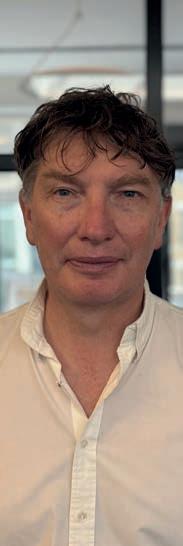

Mary Shelley’s Frankenstein is a towering presence over not just horror but our entire culture, and here’s the latest to be inspired. This Midnight Madness movie by Canadian Grace Glowicki follows a gravedigger who re-animates her fallen beau.
n Cameo, 18 August, 11.59pm; Vue, 19 August, 4.15pm; Filmhouse, 19 August, 8.30pm.
Almost certainly Scotland’s most prominent filmmaking siblings team up for this In Conversation event in which they discuss one another’s careers. And what absolutely cracking CVs they both wield, featuring Oscar winners, cult classic and blockbuster extravaganzas.
n Tollcross Central Hall, 17 August, 2.30pm.






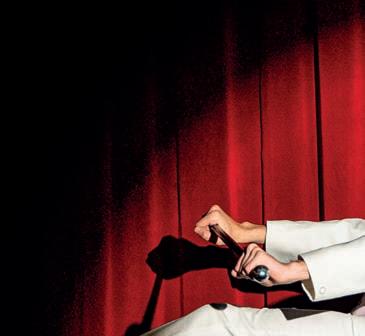
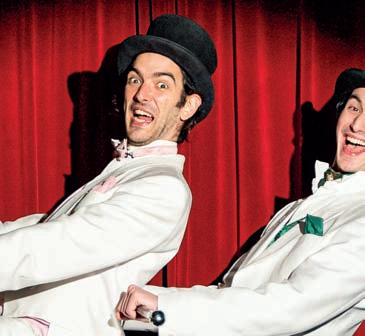
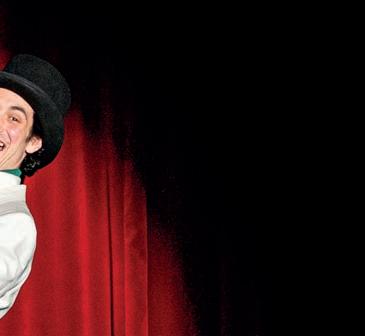



























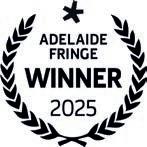

















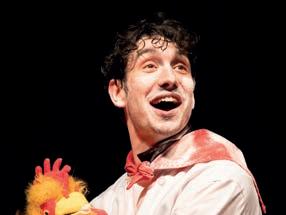


















Visit Innis & Gunn on The Mound to experience the best of Scottish food, drink and entertainment.
Open 11TH July to 24TH August








Where 2023’s Mass Effect had its performers darting around energetically, Himherandit’s follow-up sits its audience down and for around half an hour tells a tale of family, identity, loneliness and resilience. Champions is no less packed with emotion and has its own kind of energy with live art, dark audio, theatre and projections all teaming up to create a stark portrait of personal struggle.
(Brian Donaldson)
n Pleasance EICC, 30 July–16 August, 8.30pm.

IN ASSOCIATION WITH


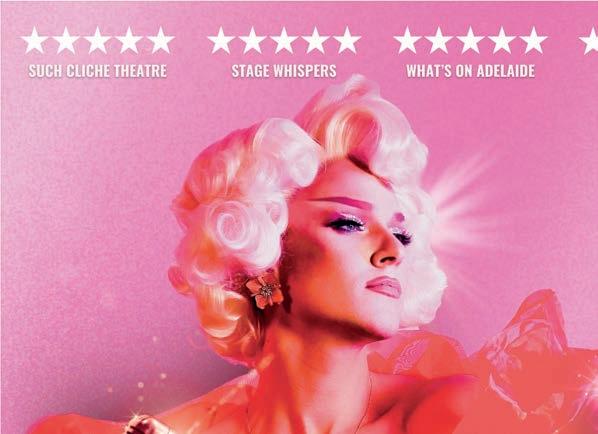









































































































































































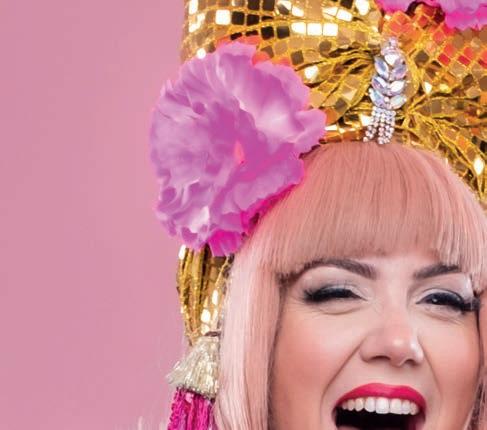



I’m






The mad-scientist Fringe divas of musical chaos have finally returned to Edinburgh. Just not together. 2025 is a year of Frisky sans Mannish and a time for creative regeneration. Dominic Corr hears that while they are thoroughly enjoying their new roles, the mantra on future collaborations is never say never






















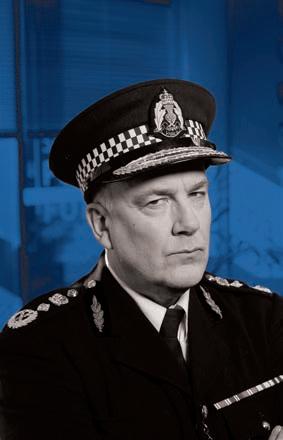



Laura Corcoran and Matthew Floyd Jones. Heard of them? Chances are that if we used their monikers of Frisky and Mannish, bells will start clanging. For those unaware of the musical comedy duo’s Edinburgh Fringe reputation, they gained critical infamy and audience praise from 2009 onwards for turning pop songs and power ballads into a blazing riot of commentary, snarky comebacks and some rather trippy genre mash-ups. They bucked the trend and served to entice both general audiences and aficionados through a glitter-induced explosion of Disneyfied charm and diva rebellion. So why change things up?
It’s been six years since Corcoran and Floyd Jones have been to the Fringe together, but they’ve still been here working independently. Fans of the hit Kathy And Stella Solve Murder! will be familiar with the pro ciency of Floyd Jones’ scoring and musical direction, while Corcoran’s directorial work and MC abilities have been lashed with dollops of bedlam and wit. So, was it a bitter rivalry which separated these punky geniuses, sending tabloids frothing? Or, in the way that Floyd Jones describes the Edinburgh Fringe juggernaut as ‘regenerative,’ are they merely following suit?
It’s a notion that Floyd Jones and Fringe partner for 2025, Jess Robinson, return to in chatting about their show. ‘I think what’s great with what Laura is doing, and what we’re doing, is that both of those things are new projects with new people,’ states Floyd Jones. ‘After a certain number of years, you do want to do something else, just for the variety of it, and it keeps you fresh.’ It’s a renewed opportunity too for the multi-talented icon, impressionist, voice actor and performer Robinson, who’s working with Floyd Jones on YourSong Robinson describes the show as ‘a love letter to Elton John and the fabulous female voices living in my head. I’m going to reinterpret and reimagine all of Elton’s greatest hits through the voices of women like Kate Bush, Barbra Streisand and Shakira.’
And if audiences want to skip the 20 or so feet across George Square Gardens following Robinson’s show, they can then dip into something more familiar, Corcoran tapping into the next cycle of their character’s lifestyle: to exorcise (and celebrate) their demons once more with Frisky’s Reshuffle This will be a performance which Corcoran describes as ‘Frisky unleashed! For those who saw Frisky Mannish, we were very scripted and very structured. We were very tight and slick, and that was intentional. In this situation, I’m a recovering perfectionist.’
For Floyd Jones, it was necessary to break from the character; for Corcoran, the initial cut came with pangs of loss. ‘I grieved the end of it. I was not ready to say goodbye.’ Corcoran phrases it touchingly, an insight into the pair’s camaraderie, discussing how Floyd Jones was the ‘actor’ while Corcoran was the ‘entertainer. Frisky has always been much more a part of me carved out and put somewhere. Frisky is the frustrated party girl in me.’ Floyd Jones expands on how Mannish had ‘nothing to do with me. In a way, Mannish is who he needs to be to counteract Frisky; when I see old videos, I think that’s not me at all. And I think that’s why I’ve loved transitioning into being the role I am now.’
So, is this the year of Frisky vs Mannish? Absolutely not. But, while the pair retain their professional responses of ‘never say never,’ there’s a sign that, as the ringe attempts to regenerate, so have they. orcoran re ects on how she’s gone from ‘Frisky the red to Frisky the pink.’
Perhaps surprisingly, Floyd Jones had more to add on the idea of the pair’s future. ‘Maybe there will be some kind of new variation of Frisky Mannish which suits people in their 40s. Because that’s the other thing: it felt like such a young person’s act. At the time when we met one another, it was organic to put on glittery things and be campy, weird and punky, and it had this energy that I don’t know if we still possess. If we ever did a show again, it wouldn’t be the same. It would have a new maturity to it. So, I wonder, if maybe, before I die one more.’
Frisky’s Reshuffle, Assembly George Square Gardens, 30 July–24 August, 9.55pm; Jess Robinson: Your Song, Assembly George Square Gardens, 30 July–24 August, 6.05pm.

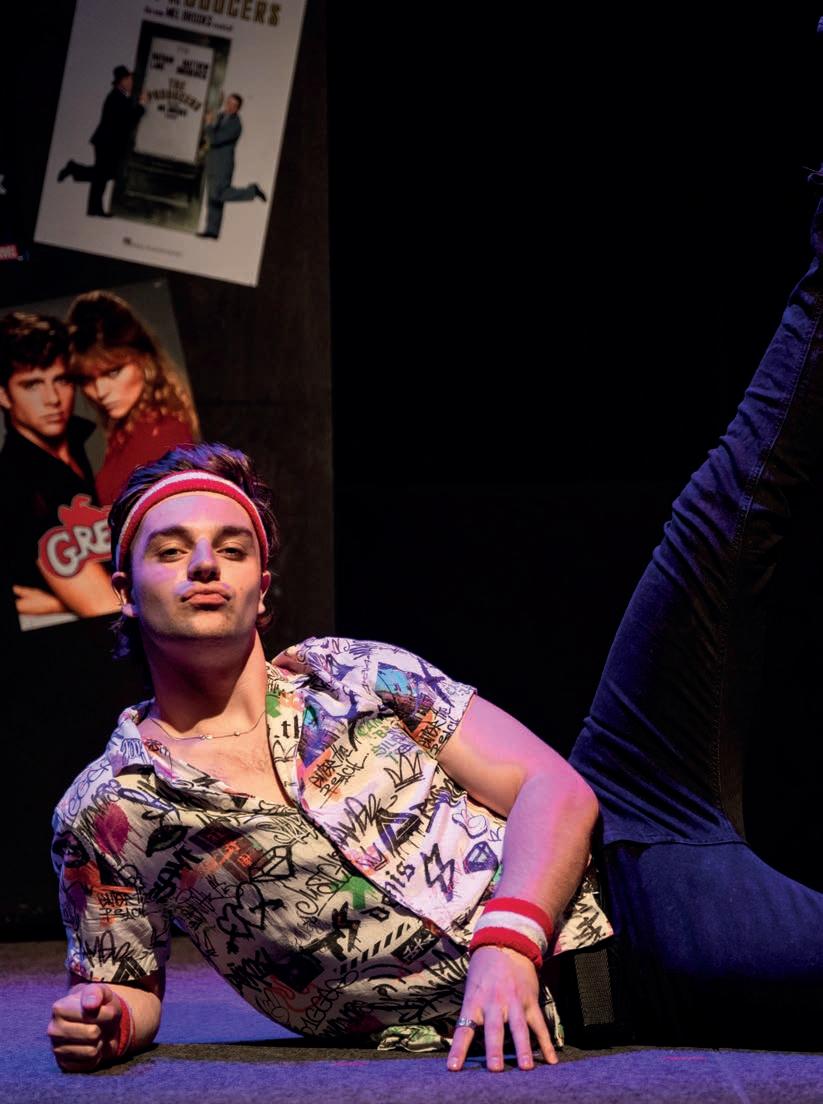




Adults Only Magic Show

The Fringe is full of magic already, of course, but no harm in an extra bit of glitter chucked and/or sprinkled onto proceedings by these actual conjuring folk. As you can probably guess from the title, the Adults Only Magic Show (Assembly Hall, 30 July–24 August, 9.25pm) is on the riskier, raunchier, raucous end of the magic circle (not that circles have ends, for they are round, silly) with the gang aiming to turn the genre on its head.
With Magic Man, Tom Bolton (Gilded Balloon Appleton Tower, 18–24 August, 7pm) unleashes a theatrical whirlwind taking a journey back into the wonder of childhood. Expect Rubik’s Cubes and even a spot of levitation. Not standing on anyone’s ceremony, Andrew Frost (Pleasance Dome, 30 July–25 August, 4.30pm) has named his show The Greatest Card Magician In The World Presumably he’s talking about himself. Derren Brown and David Blaine are fans. So you probably should be, too.
Diving into some of the biggest duds in musical-theatre history may sound like a shaky proposition for a hit Fringe hour. But Australian performer Arthur Hull begs to differ as he educates Jo Laidlaw about some diamonds in the rough
he best songs from the worst musicals ever written is an unusual premise for a show. ‘This is a love letter to musicals,’ says creator/performer Arthur Hull. ‘I’ve spent my life watching those “hits of Broadway” shows, where a performer comes out in a waistcoat and sings all the songs everyone has heard before. I thought “what about the shows that never quite achieved the same financial, critical or commercial success?”’
This is a fruitful jumping-off point: it takes blood, sweat and tears (and millions in cash) to bring a show as far as the West End or Broadway, with plenty of hurdles to clear along the way. It follows that even the biggest flop must have at least one bop; the big number that got investors and creatives buying into the vision in the first place. Take the famous stinker Spider-Man: Turn Off The Dark, says Hull. Bono and The Edge wrote the music, Julie ‘Lion King’ Taymor directed, and who doesn’t love Spider-Man? Yet it
closed after a record-breaking 182 previews, losing $60m. ‘But there is this one song called “If The World Should End” that is so hauntingly beautiful. I think of it as everyone working on the show begging their audience: don’t judge us by this collective flop. Applaud our vision and talent.’
The Spotify-playlist musical that theatre geeks didn’t know they needed, Flop is a formidable solo debut for triple-threat Hull, who narrates, sings and accompanies himself (‘I couldn’t afford a band!’).
Fresh from an award-winning run at Adelaide Fringe, this is a peek behind the curtain at an industry that can be both brutal and beautiful, often within the same two-hour matinee. After all, for every DearEvan Hansen, there’s a Diana:TheMusical. If Arthur Hull has his way, they’ll both find a place in your heart.
Arthur Hull’s Flop: The Best Songs From The Worst Musicals Ever Written, Gilded Balloon Appleton Tower, 30 July–24 August, 8.45pm.
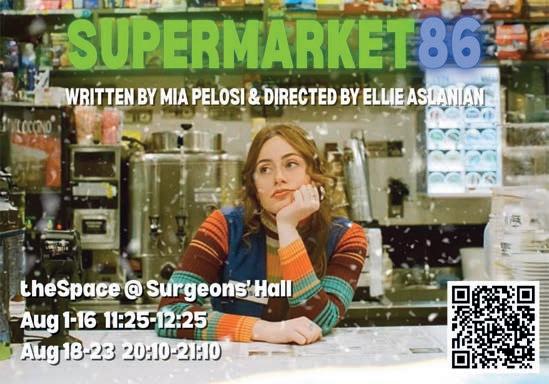







































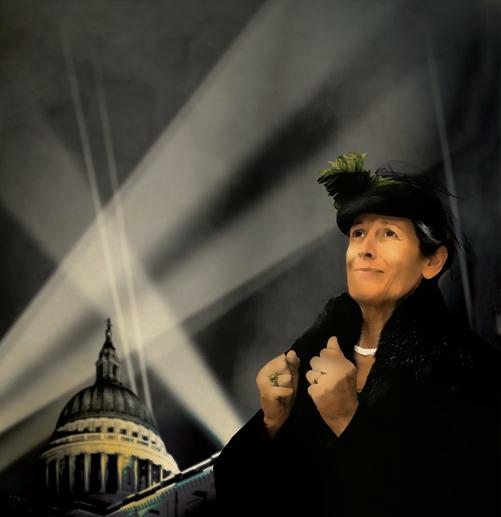







































When a comedian tells a tale onstage, it can be hard to discern where the line falls between truth and lies. And does it really matter if it’s funny? Isy Santini rounds up four comics exploring the subject of lying from different perspectives to find out if honesty really is the best policy



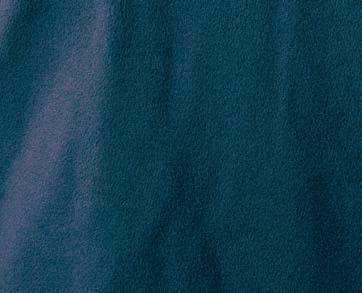

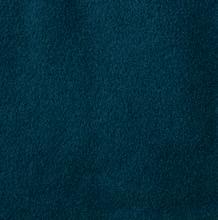






Who among us hasn’t twisted the truth or exaggerated a little bit when telling a funny story? It’s a very human thing to do, but when being funny is your job, the line between truth and fiction can get very murky indeed. At this year’s Fringe, four comedians are gearing up to dive a little deeper into the topic of lying in their respective shows.
Most lies are harmless little fibs. London-based comic Adele Cliff takes a generous view of these everyday lies. ‘Life’s hard and sometimes the truth doesn’t help,’ she says, but when it comes to stand-up, lying isn’t always so straightforward. ‘All acting is deception,’ says Lou Wall, whose show Breaking The Fifth Wall has already stormed the Australian festival circuit. ‘As a stand-up, there’s a level of performance, no matter whether you’re playing yourself or not.’ Comedy also involves a good deal of wrongfooting and messing with expectations, something that can further blur the truth.























































































































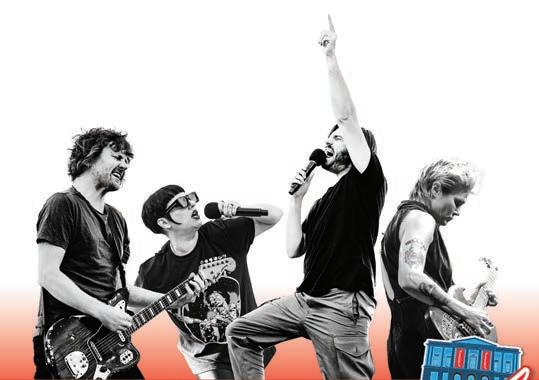










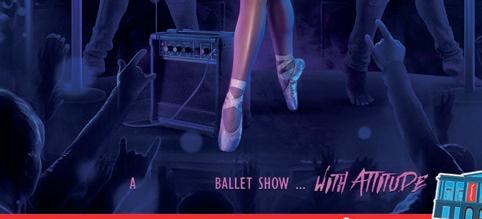




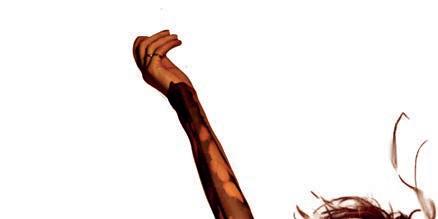








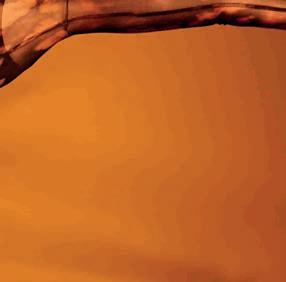


As therapist-turned-comedian Josh Elton points out, though, there’s a big autobiographical aspect to most stand-up that can clash with these performative elements. ‘I’m telling the truth of my life through a medium that is built on deception, taking you one way and going another,’ he says. ‘The very premise of standup is people acting like they’re thinking this stuff up off the top of their heads. The moment things stop seeming conversational and the artifice bobs up, it stops being fun.’
With a medium so rooted in deception, it’s no wonder audiences don’t always believe comedians. Elton tells the true story of the time his car was lifted by a bollard and ended up on the news, but it wasn’t until he started providing pictorial evidence in his shows that audiences started laughing. ‘I realised that I’m actually being a bit up myself in this assumption that they should somehow know what is and isn’t a lie when I’m lying to them throughout the whole thing.’
Meanwhile, Wall’s show was inspired by the comments section of a Facebook marketplace exchange they’d had, where people were furiously arguing with each other over whether the exchange was real or fake, despite none of them knowing Wall personally. Lying has always been part of comedy, but this sudden interest in it is new. Wall thinks it comes as a result of the recent US election


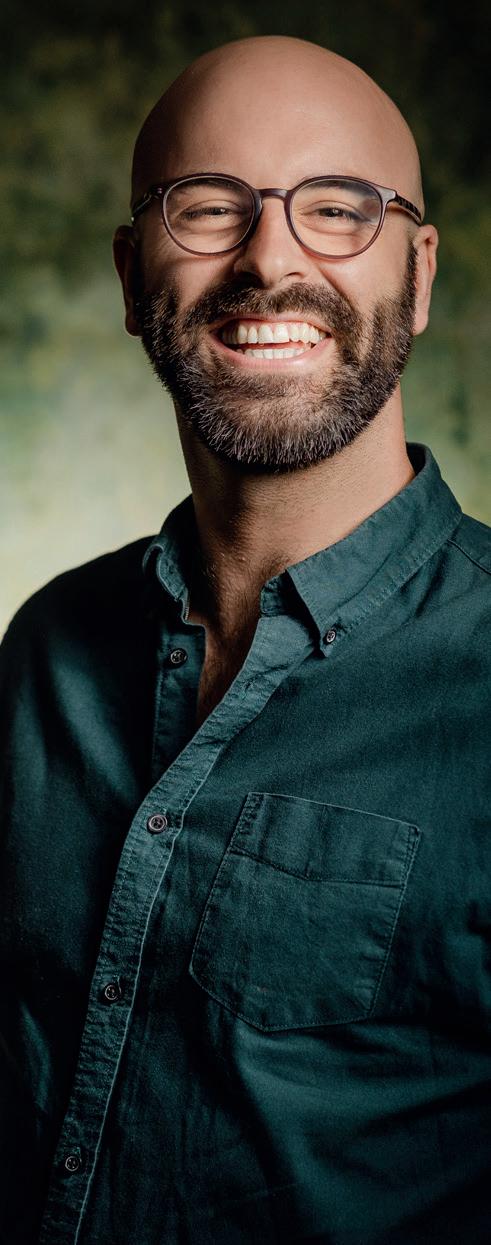
and the slew of misinformation that accompanied it. ‘Anything that permeates the internet permeates western culture,’ they explain. Permeating the internet too is the proliferation of AI-generated images. ‘It’s really put a spanner in the works of content creation, and obviously a lot of comedians are at the forefront of content creation. It’s everything they do.’
Rohan Sharma, whose show Mad Dog takes a surreal look at truth and identity, admits to being influenced by the internet. ‘I feel like my media consumption is so intense and overwhelming that it leaves me with a lot of questions about what is real and what isn’t, and maybe that’s reflected in the tone of the show.’
The issue of truth has also hit the comedy world much closer to home in recent years with Hasan Minhaj being accused of making up instances of racism in his shows. He defended himself by claiming that while his stories were exaggerated, they were emotionally true. ‘I think it’s just a way of getting out of cancellation in some aspects,’ Wall weighs in.
But it’s not just the state of the world influencing comedy. More and more nowadays, comedians are influencing the world as they branch out into podcasting, news shows and even politics. ‘You look at someone like Joe Rogan, who started as a stand-up,’ notes Wall. ‘Now he’s a podcaster who spreads a lot of misinformation
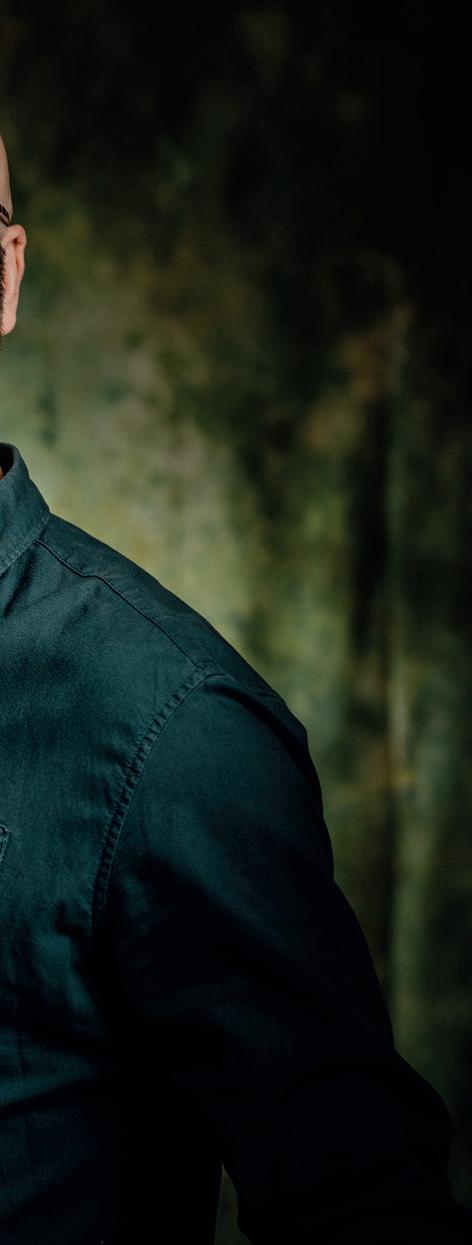






and influences huge swathes of people.’ There is also a growing number of comedians who position themselves as political symbols, shaping their careers around ideas of anti-wokeness. ‘There’s a zeitgeist of misinformation, and comedians play a role in that.’
So how important is honesty in comedy? While Sharma likes to wrongfoot his audience, he’s sceptical about so-called emotional truth. ‘Truth becomes important when comedians are seen as more than just entertainers, they’re seen as people who represent things.’ In his own experience as a comedian of colour, he’s felt pressured to include stereotypical jokes and tell stories about overcoming racism. When the audience are already expecting a certain narrative, honesty becomes both trickier and all the more important to maintain. ‘My life has not been that difficult, and I think I’ve got to a place where I don’t ever want to make up something earnestly about my racial heritage to get a cheap laugh.’
Elton agrees that there’s a line when it comes to lying. ‘As comics we have a broad code of things we wouldn’t lie about. In the show I talk about saving a man who was trying to kill himself. I wouldn’t lie about that.’




For Cliff, where that line falls has everything to do with intention. ‘You can be lying in a story and be completely honest as long as you’re not lying about anything important,’ she argues. ‘If I leave a comedy show and I’ve really loved it, I’m not remembering every detail; I’m just remembering that I had a really good time. If what people get from it is honest, then the show is honest even if you are lying.’
Adele Cliff: Adele, Adele, Adele . . . Cliff It Isn’t The Consequences Of My Own Actions, Just The Tonic Mash House, 31 July–24 August, 5.05pm.
Lou Wall: Breaking The Fifth Wall, Monkey Barrel, 28 July–24 August, 10pm.
Josh Elton: Away With The Fairies, Hoots Apex, 31 July–25 August, 8pm.
Rohan Sharma: Mad Dog, Pleasance Courtyard, 30 July–24 August, 7.10pm.


- 23 AUG




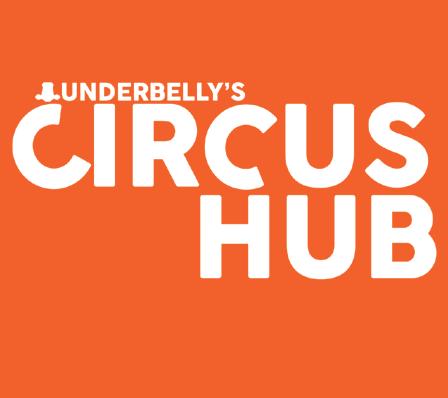




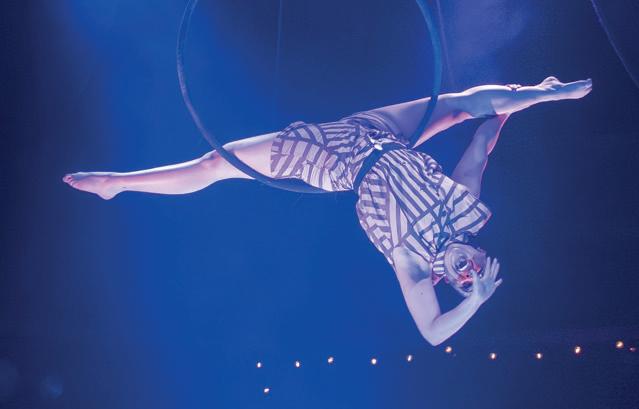


















Juggling a career in immigration law with stand-up comedy is no picnic, according to London-based Sikisa. She chats to Eddie Harrison about becoming bitter, breaking down stereotypes around asylum seekers and immigrants, and why she’d love to be branded lazy








C‘ome and see me and my amazing self!’ is how Sikisa modestly pitches her new stand-up show. Yet ‘amazing’ is probably the right word for what she does. Returning to her old stomping ground at Monkey Barrel, Sikisa has mastered the kind of innovative career path pioneered by Jennifer Beals in Flashdance. But rather than juggling jobs as a welder and a dancer, Sikisa works hard for her money as an immigration lawyer by day, and a comedian by night.

‘I think I’m unique, the only immigration lawyer and comedian,’ she says. ‘I try and keep my two main jobs separate, but there are times when clients recognise me, and I have to say “yes, that was me on TV, and yes, I was talking about dicks; let’s all just move on.” There can be real humour in my job, things that my clients come out with, and I’ll be “did that just come out of your mouth? We’re here to talk about an immigration matter and you’re trying to set me up with your son?”’





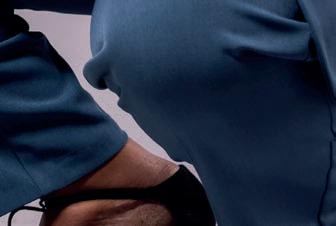







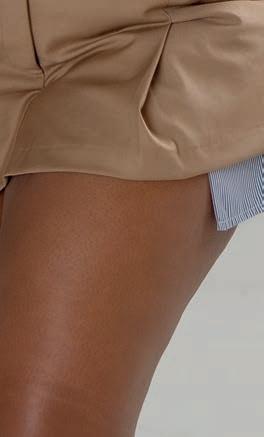
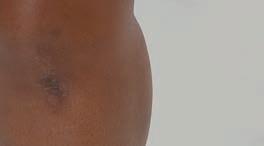


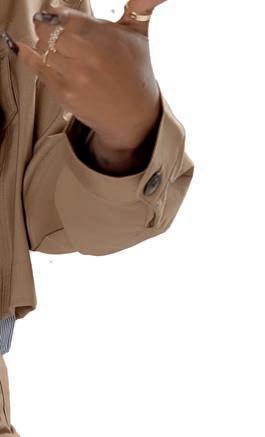
Sikisa’s new performance is called Serving Justice, and she feels she’s changed since her previous trips to the Fringe. ‘Yeah, I’ve become slightly bitter about my life. I feel like I work really hard, and like most millennials I’ve been told that if you work really hard you’ll be able to get your flat, your family, your relationship, whatever you desire but I’ve worked hard on several jobs for 20 years now and I’m still kinda stuck in the same place I was before.’

people are dumb, I do want to give audiences a better
Insisting that she doesn’t like coming across as bitter, Sikisa still wants us to know that she’s properly fed up. ‘I have quite an intense job, one that’s never going to be out of the news, and while I don’t like to talk about educating people because it sounds like I’m saying people are dumb, I do want to give audiences a better understanding of what asylum seekers and immigrants go through. There’s a lot of stereotypes still going around because of what people see on the news, so I want to explain why these people do what they do and relate it to where I am with my own life. So my show is very much based on my own anxieties.’

ideal for me as it’s very much like a club experience;
Sikisa will be heading north soon, ready to savour the soothing calm and healing atmosphere that awaits all comics at the Fringe. ‘I stay in this lovely flat in Princes Street; it’s on the eighth floor, so my thighs are sexy by the end of the run. But it’s not always great coming home at three in the morning. I really love being part of other shows as well, like Stamptown or Comedians’ DJ Battles The Monkey Barrel venue is ideal for me as it’s very much like a club experience; I’m a storyteller but also a club comedienne. Monkey Barrel are the coolest people and also they have a good financial structure for performers: I’m sure they won’t mind me saying that.’
So, Sikisa loves her venue and insists she is fine to be put at the mercy of reviewers. But before signing off, she wants to set one record straight. ‘I know I’m known as the hardest-working comedian, but the truth is, I really don’t want to be. There’s too many people who don’t have the support they need to stay in this country, so I just can’t give that part-time job up. I’d rather not be known for having several jobs; I’d much rather be known as the laziest comic on the circuit!’
Sikisa: Serving Justice, Monkey Barrel Tron, 30 July–24 August, 5.50pm.


Finalists battle it out to take the crown in the cliamactic stage of the UK’s most prestigious comedy newcomer competition! Following months of regional showcases around the UK and Ireland, see comedy’s rising stars give their best performances in a bid to win So You Think You’re Funny? 2025. ‘Showcasing the standup stars of the future.’ (Comedy.co.uk)
Previous winners and finalists from the competition include Aisling Bea, Tommy Tiernan, Maisie Adam, Peter Kay, Lee Mack, Fern Brady, Rob Beckett, Romesh Ranganathan, Sara Pascoe, Daniel Sloss, and more.

21 Aug | 7.30pm | £16 tickets.gildedballoon.co.uk



















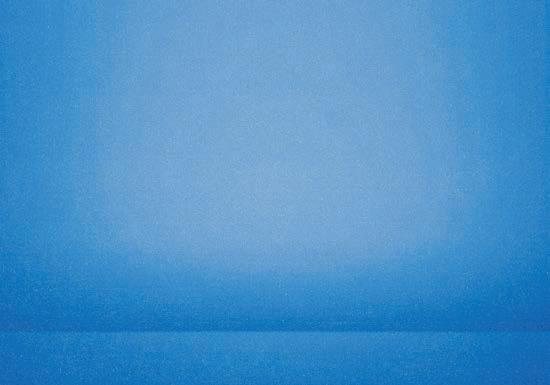







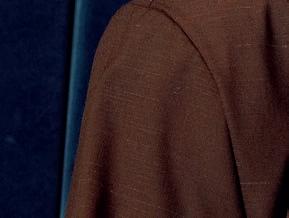












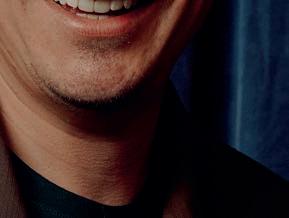

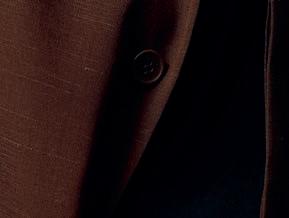
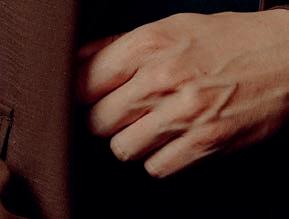















years, Jay Richardson

Performing standup hasn’t always come easy for Tom Rosenthal. As he returns to the Fringe for the first time in six years, Jay Richardson finds the Friday Night Dinner and Plebs star reflecting on authenticity, spiritual awakening and his apparent immunity to humiliation


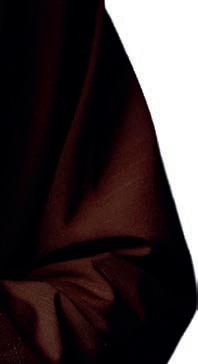






ADDespite reluctantly dropping a ten-minute routine about the logical paradoxes of one of his favourite albums Whatever People Say Am, That’s What I’m Not), philosophy graduate Tom Rosenthal contends that with their chart-topping debut, Arctic Monkeys lyricist Alex Turner was ‘already at odds with fame and the perceptions of his audience.’ The neurotic 37-year-old can relate. With his new show, Whatever People Say Am, That’s What Am , he’s returning to the Fringe for the first time since 2019 with stand-up ‘about things people have called me.’ Friday Night Dinner’s ‘Pissface’ has had mainstream creative success young in life and he’s feeling the tension between ‘honouring a fanbase and being creatively authentic,’ while worrying that this sounds ‘so highfalutin, I can’t imagine it would encourage a single person to watch it.’
Still, he’s enjoying being a new father and recently emulating Rowan Atkinson and Rik Mayall in the title role of Nikolai Gogol’s TheGovernmentInspector, betraying the ‘rank hubris’ of a performer that ‘sees those names and says “yes, I deserve to be on that list.”’ Rosenthal first arrived at the Fringe as a King’s College London student, part of a 12-strong cast playing to ‘one man who sat with an unlit cigar in his mouth the entire show.’ As an underworld creature in OrpheusAndEurydice, ‘I covered myself in body paint and contorted myself on the Royal Mile, hissing at American tourists.’ For a play about mental illness in a drugs rehab centre, he sat listening to Radiohead to try to make himself cry, before coming on stage to scream at the audience in a Polish accent.
Since then, he’s vomited on DrunkHistory, drunk his own urine on BearGrylls:Mission Survive and smuggled tobacco inside his rectum for the prison reality series BangedUp . ‘I always assumed that comedians have a low shame reflex,’ he says. ‘But maybe I’m a bit further along that distribution than others. Sitcoms I’ve been in, particularly Plebs, used shame as a currency.’ Accustomed to ‘brilliantly talented writers and directors crowbarring me into the most shameful situations for maximum comic effect,’ he reckons the best comics are ‘extra immune’ to humiliation. ‘My mum says DrunkHistory is my finest work!’ Rosenthal’s covid-disrupted last tour found him falling out of love with live comedy. From bitter personal experience, Manhood argued against circumcising babies, ‘the only area in my life thus far I’d describe as traumatic. Making jokes about painful memories to fierce real-time judgement, I was totally drained, putting myself under more pressure than was reasonable.’ Relentlessly muttering and pacing beforehand, stand-up has ‘always seemed more of a stress to me than my peers,’ he admits.
Happily though, an unexpected ‘spiritual awakening’ as he connected with his sport broadcaster father Jim’s Jewish roots in BBC’s interfaith series Pilgrimage, has led to him bouncing back ‘in a more holistic, relaxed and joyful way.’ He now prays before shows, surrendering to a higher power, to ‘allow the audience to experience it through me, and for me to experience it through them. And yes,’ he admits, ‘I can imagine myself reading that when I was a 21-year-old philosophy student and thinking it total bullshit.’
Tom Rosenthal: Whatever People Say I Am, That’s What I Am, Assembly Roxy, 30 July–24 August, 6.15pm.

Who says that sketch is dead? Some people, admittedly, but maybe they should get their peepers on this triptych of broken-comedy gigs. Definitely ploughing a unique field are The Burton Brothers (Assembly George Square, 30 July–24 August, 4.20pm) whose show is firmly rooted in 1925 but still casting an eye into the present era’s chaos. For your info, they are actually brothers. And they are indeed called Burton. But they’re definitely not people from the distant past.
The Leeds Tealights (Just The Tonic Caves, 31 July–24 August, 4.50pm) have been a fixture at the Fringe for donkey’s years now and they have a whole heap of top routines packed away in their collective back pocket. They’ll be turning them out for this year’s show, effectively a greatest-hits affair. One for the longterm admirers in particular. What can you say about Sheeps (Pleasance Courtyard, 8 & 9 August, 11pm) that hasn’t been said before? Quite a lot, probably. The esteemed and innovative trio return with a Christmas show, for heaven’s sake.






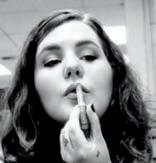






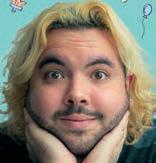

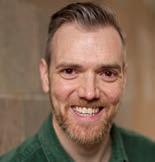































SIt’s been an age since Catie Wilkins last took to a Fringe stage to do stand-up, what with being a mother, hosting podcasts and writing YA novels. Marissa Burgess listens in as the returning comic reflects on flashers, hitting pause on her stand-up career, and why writing is like eating your greens

ince her last solo Fringe run, Catie Wilkins has been busy having children, among other things. But that parenting experience has provided her with novel ideas on cleaning up some of society’s ills. ‘We might be able to solve the problem of flashers if we respond to them the way that mums have to react to their five-year-old sons,’ she ponders. ‘There’s a phase that boys go through where they’re just obsessed with getting it out; and you have to be like “excuse me, I see you’ve got your winky out. That’s NOT for now.” I’m not sure it’s a realistic solution, but I do think we should give it a go.’
Wilkins’ last solo stand-up Fringe show was in 2012, and when she wasn’t bringing up new humans, she was cocreating the Drunk Women Solving Crime podcast and writing numerous young adult novels. ‘I paused stand-up rather than quitting. I was still sort of making notes and thinking “that’s funny, I’ve got an idea about that.” But I was writing funny parenting articles for online magazines, so I’d have an idea that could have turned into stand-up but I’d turn it into an article instead. We did live shows for the podcast, so I was keeping my hand in with the live work.’



Not that Wilkins could ever get away from stand-up completely, even if she wanted to, as she’s married to comedian Richard Herring. ‘I think what’s really helpful about it is we understand the statistics of trying to get to do stuff; everything is feast or famine. Neither of us ever asks random questions like “hey, why don’t you just go on Live At The Apollo?” We don’t have to explain how stuff works.’
One of the few confusing times that Wilkins found herself in that kind of ‘normal’ company who have a habit of asking nonsensical questions came when she was attending National Childbirth Trust (NCT) classes. ‘When I did NCT, everybody was an office worker; it was really weird to suddenly hang around with a different kind of person. They hated being at home on their own all day with a baby. I loved that because I was already doing it. I hated getting up at three, five or six . . . whereas they were already up at six. I had different challenges to them and loads of comedians were having kids at a similar time to me, so I set up this Facebook group called Comedy NCT.’

Now she’s back doing stand-up again, does Wilkins have a preference between writing novels or being on stage? ‘I think with writing novels you send it off for feedback and it takes months for anyone to get back to you. But with standup, it’s immediate. Writing is like delayed gratification, and stand-up is like, I don’t know . . . a doughnut. So writing is like your vegetables!’
Catie Wilkins: We’ll See, The Stand 2, 31 July–10 August, 4.45pm.


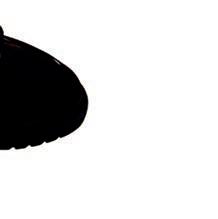






















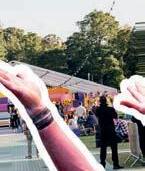




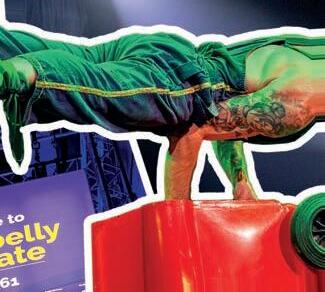












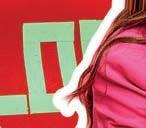






































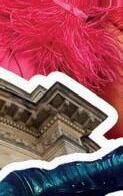






















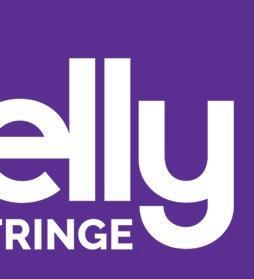











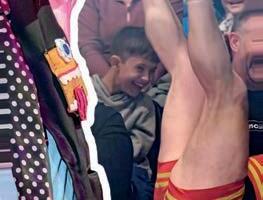































































Three years ago, Tess Letham developed the character of Harmony Banks to explore the complicated world of female celebrity. As Lucy Ribchester discovers, the dance-theatre creator has resurrected Banks for a solo show that looks askance at the media’s obsession with women in crisis
It’s a familiar story: a woman undergoes a public breakdown, is hounded by the media and scrutinised in public debate. She becomes a cautionary tale, one more example in a culture that spans both time and type of celebrity, from Golden Age Hollywood stars to musicians, actresses and reality TV personalities. Whoever she is, whenever she lives, a woman’s crisis is something the media likes to feed on.
Growing up in the 90s, this pattern was something dance-theatre creator Tess Letham became acutely aware of, as she watched women like Paris Hilton and Whitney Houston (and later Britney Spears and Amy Winehouse), fragmenting in the spotlight’s glare. ‘They were essentially ripped apart by the media,’ Letham says. ‘I’ve been doing a lot of research on different female celebrities. Things have potentially improved in the world for women but I still think in celebrity culture there’s so much constant pressure and constant attack on females, and this idea that they all have to be perfect, and if they step out of line at all there’s uproar.’
It was this ugly cultural touchstone that provided the inspiration for Letham’s latest show, a solo piece entitled What Ever Happened To Harmony Banks? Letham originally created the character of Banks (‘a commercialised love and wellbeing kind of guru’) for her 2022 show Remedy For Memory, which explored celebrity womanhood. But after the run ended, she felt there was unfinished business with Banks. ‘There was this need or desire to take that character further. I really wanted to build a longer timeline for her, where she’s moved on from the commercial wellbeing industry.’
Letham began watching documentaries and biopics delving into the stories of female celebrity breakdowns, and it occurred to her that while the issue had been covered in film and other forms, exploring it through dance-theatre could bring something new to the discussion. ‘In dance, you can represent things in physical ways that people can experience, rather than be told,’ she says. The show will be a mixture of text and movement, but dance with its focus on the body can, says Letham, communicate something words can’t. ‘I think there’s this power in dance and physicality that you can really share in a very visceral way. Looking at celebrity culture, particularly focusing on women’s bodies, there’s a lot within it that I think can be expressed through dance.’
Letham’s past work has featured both light and shade, surrealism and tragi-comedy, a ‘yin and yang,’ she says, which she uses to ‘amplify the audience’s experience, rather than going in super dark all the time.’ She also uses her audience as a guide to help work evolve, and in that sense the Fringe is the perfect stage. ‘It feels like a very playful platform to showcase work. No two shows will be the same. So it’s always a bit of a wild ride. I’m looking forward to having this character to allow me to go much further than I would by myself.’
What Ever Happened To Harmony Banks?, Assembly Dance Base, 5–10 August, 6.40pm.




Amid an increasingly busy field, concocting an original show of circus and acrobatics is becoming an ever-trickier feat to pull off. This trio of shows and performers are doing their bit. Taking place in one of the traditional big-hitting venues for circus, TheGenesis (Assembly Hall, 31 July–25 August, 12.30pm) has plenty of expectations being heaped upon it. All the way from sunny Denmark come the Copenhagen Collective, who promise to hurl the audience (as well as one another) into another dimension.
Not at an Assembly venue, confusingly, The Nose Dive Assembly (Underbelly Circus Hub, 2–23 August, 4.10pm) is hosted by a mistress of ceremonies who is somewhat frustrated at her own lack of airborne action. This show has a Wheel Of Death, which sounds ominous. From Chicago gang Full Out Formula comes I Think It Could Work (Zoo Southside, 1–17 August, 5.30pm), an improvised and dazzling clash of colour and acrobatics.

RED BRIDGE ARTS presents for ages3+
a playful tale about wanting
fr i endship instead. space - and finding




by ANDY MANLEY, IAN CAMERON & SHONA REPPE















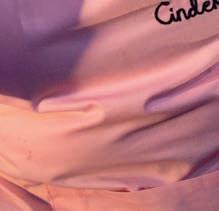


Little Seeds Music are hoping to cast their spell on audiences young and old with new musical, Cinderella Ice Cream Seller. Show creator David Gibb reveals to Suzy Pope how they manage to avoid onstage melting moments and why he decided to relocate the iconic fairytale to a world of scoops and cones


Cinderella Ice Cream Seller has the tropes of the classic fairytale: a glass slipper, a prince, a ball and two ‘ugly’ characters, meddling their way into its story. But the prince isn’t looking for a wife, the ugly sisters are aunties with mean personalities, and the glass slipper is filled with ice cream. ‘I wanted to take a story that everyone knew,’ says David Gibb, writer, composer and performer of Cinderella Ice Cream Seller. Cinderella is one of the big fairytales. Every kid and every adult knows it; the story beats are almost woven into the fabric of our beings. But we wanted to update it a bit, give Cinderella some agency.’
During the two-person musical, Gibb and Lauren Harthorpe literally don 12 or 13 different hats between them as they portray an array of characters to tell the tale of Cinderella, and how she became a multi-millionaire ice-cream mogul. Live piano and guitar accompany the songs as two ice-cream parlour employees lilt, stomp and belt through the story. ‘I was really interested in the idea of ice cream, which has the same universality as the Cinderella story. There’s a story behind ice cream: the treat when you’re a kid, the break-up tub of Ben Jerry’s, or the 99 with a flake from the van in summer. Everyone knows Cinderella and everyone has a relationship with ice cream,’ Gibb says. The storytelling is elevated with an array of props, principally ice-cream scoops, tubs and sprinkles. ‘The fake ice cream is actually one of the most fascinating elements for the kids,’ Gibb says. ‘They love to come down and see it up close at the end of the show. Obviously we couldn’t have real ice cream melting away under the tungsten lights.’
This take on the classic Cinderella story is Little Seeds Music’s Edinburgh Fringe debut. As a touring theatre company, they’ve taken shows across the country to great acclaim, with an ethos of making musical theatre fit for families without compromising on musical quality. After years of touring shows nationally like LunaLovesLibraryDay and Tales From The Lighthouse, Cinderella Ice Cream Seller just felt like the right show for Edinburgh,’ Gibb says. ‘It’s quirky and fun, and big and heartfelt. The very idea that Cinderella is actually an ice-cream making multi-millionaire is, when you think about it, ridiculous. We felt like it really chimes with the spirit of the Fringe.’
The soundtrack, with original songs written by Gibbs, doesn’t sound like a typical family musical. There’s a sense of sunshine to the acoustic guitar-backed numbers and Gibbs’ Bon Jovi-esque voice adds a rock quality to the big tunes. So, while it’s pegged to the children’s section of the Fringe guide, CinderellaIceCreamSeller could easily land in musicals because there’s just as much for adults to enjoy. After all, who doesn’t love ice cream?
Cinderella Ice Cream Seller, Underbelly Bristo Square, 30 July–17 August, 11.40am.
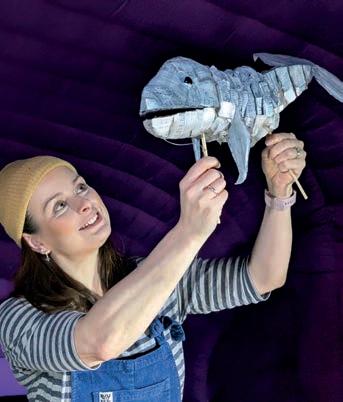
Few sights delight the little ones (and others not so little) more than a puppet show done brilliantly. This year’s Fringe is not short of them. Highly acclaimed Theatre Of Widdershins deliver a magical retelling of the classic tale of two sisters whose quiet life in the woods is interrupted by two individuals: a sad but perfectly friendly bear and a rather rude man whose happiness is less easily determined. Snow White Rose Red Bear Brown (Scottish Storytelling Centre, 31 July–17 August, noon) is the title.
After a successful run last August with Wood Owl And The Box Of Wonders, Hoglets are back for The Tale Of The Loneliest Whale (Underbelly Bristo Square, 31 July–10 August, 11.25am), a deep-sea adventure filled to bursting with curious creatures, original songs and, brace yourself, audience interaction. DragonBabies (LifeCare Centre, 1–16 August, 11.30am) comes from local earlyyears company Dragon Song Productions and features highly tactile puppets and cute props in a bag.


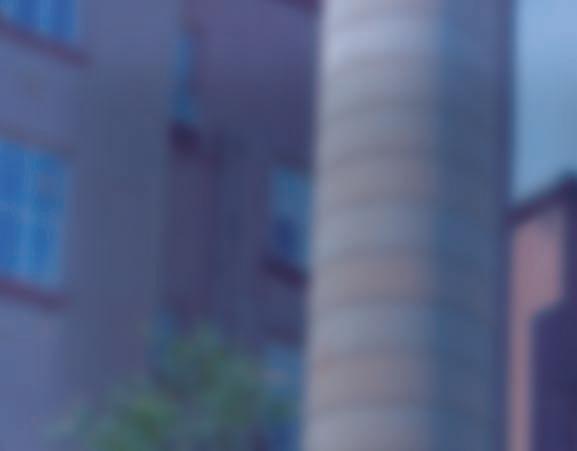



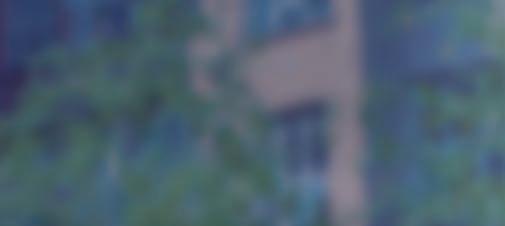

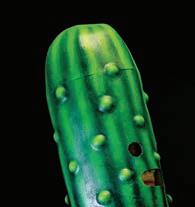






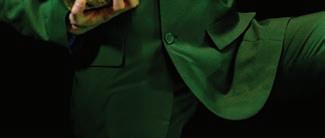

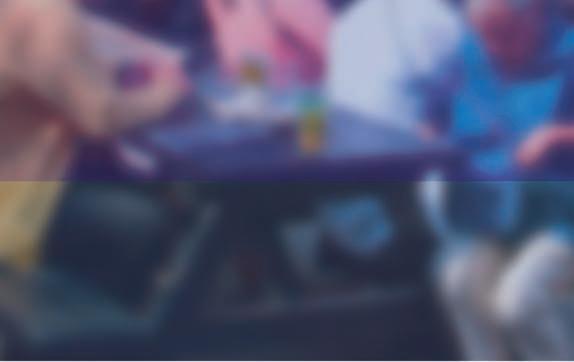





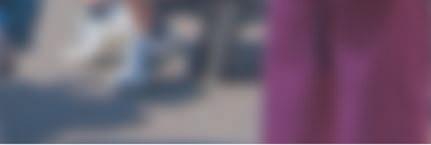

FJonathan Donahue insists that while Mercury Rev may be straddling rock, jazz and blues on their new music, the band are still punk at heart. Fiona Shepherd hears from a leader who insists he’s jockeying for position as numero uno with patience
or more than a decade, the International Festival has carried the torch for popular music during an Edinburgh August. But this year the Fringe looks set to have its poppermost year in some time with the advent of Big Nights, a diverse programme of live music curated by promoters 432 Presents at La Belle Angele. The line-up captures the variety and eccentricity of the Fringe, from a two-night stand with Pete Doherty to Jurassic 5/Ozomatli rapper Chali 2na, Scottish neo-trad trio Project Smok to blues singer Fantastic Negrito, plus a couple of curveballs in ‘Safety Dance’ hitmakers Men Without Hats and the 2024 Eurovision runner-up, Croatia’s Baby Lasagna.
Chief among its treasures, however, is an appearance by esteemed US outfit Mercury Rev who arrive in the city with a new line-up, fresh sound and Born Horses, their first album of original music in nine years. Singer/guitarist Jonathan Donahue and multi-instrumentalist Grasshopper are the long-serving core of the band, formed in Buffalo and now based in Kingston, New York, while Jesse Chandler and newest recruit Marion Genser add what Donahue refers to as ‘atmospheric keyboards and that cosmic microwave background.’
Donahue is partial to an allusion or two, and likens their contribution to ‘welcoming a new friend into a close circle. At first there is a new energy and then that energy settles into something that hopefully is in harmony.’ Born Horses took shape by serendipity. In striking contrast to his trademark fragile falsetto delivery, Donahue speak-sings much of the album, based on spoken-word recordings he made without a thought to musical accompaniment. ‘I wasn’t thinking I was writing lyrics, I was just passing the time,’ he recalls. ‘Later, through an accident of dragging the wrong music file, the lyrics landed on top of the piece of music I was working on, and I was quite surprised at the impression it left on me. I followed it like following a bird through a forest for a moment.’
Gradually, over a number of years, the band finessed a ravishing and surprising ambient backdrop for Donahue’s poetic ruminations, featuring long spacious takes of noir-ish trumpet, sonorous organ, plangent piano, and soft, shimmering percussion. It moves the band into somewhat jazzier territory than the chamber indie sound of old, and from more conventional songwriting territory into meticulous composition. Donahue is happy to acknowledge the influence of trumpet maestros Miles Davis and Don Cherry, and experimental composers Pauline Oliveros and Terry Riley, but stresses ‘we’re not jazz or blues musicians; we’re not classical. We are probably very punk at heart. To us, rock’n’roll didn’t stop at Chuck Berry, punk rock didn’t stop and start at the Ramones, and jazz doesn’t start in the 1960s. So all of these elements are close to our hearts.’
There is a quiet radicalism at play in Born Horses which marks a new chapter in Mercury Rev’s slow-burn story. ‘As we get older, patience is a member of the band; it might even be the bandleader,’ reckons Donahue. ‘You’re like a bat sending out this sonar. You’re waiting for this ping to come back to you. You notice you are probably on the right track when you start to feel that uncertainty deep inside, that uneasy feeling of “is this going to be career suicide?” But it’s that uncertainty that gets you out of bed later in life.’
Mercury Rev, La Belle Angele, 29 August.

























































SUPPORT FROM CLOTH &
FRIDAY 8 AUGUST 2025
PLUS MUCH MORE OVER 10 DAYS INCLUDING:
EZRA COLLECTIVE • AIR • THE BOOMTOWN RATS
INDIE DISCO: STUART BRAITHWAITE & STUART MURDOCH JIM MOIR • STUART MURDOCH: NOBODY’S EMPIRE
ALAN DAVIES • LOST MAP PRESENTS PICTISH TRAIL PLUS PALS
IF THE STARS HAD A SOUND • IRVINE WELSH • TIM POPE
SINCE YESTERDAY: THE UNTOLD STORY OF SCOTLAND’S GIRL BANDS • DINNY GREET & REDOLENT
SECRET LIVES: THE UNTOLD STORY OF BRITISH HIP HOP
HEN HOOSE PRESENTS MALKA & CARLA J EASTON

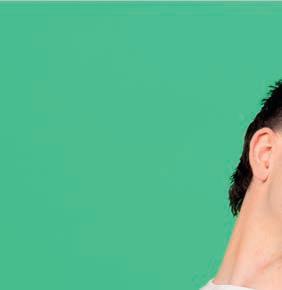
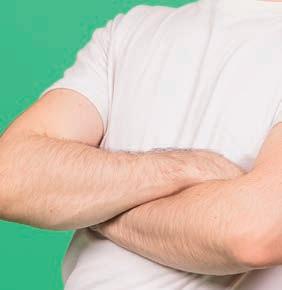








MIt all started with the Big Bang, but it’s turned into a right Hot Mess, according to a new musical with an entertaining take on the sorry state of our planet, as Robyn Bell discovers
aking its debut at the Fringe, Hot Mess is a bold pop musical that reimagines the climate crisis as an epic love story, an original romcom about love, hope and break-ups.
After drifting aimlessly around the cosmos for eons, Earth finally finds its match Humanity. The early days are golden: sparks fly, wheat is harvested, technology flourishes. But this cosmic power couple’s fiery romance soon spirals into a Hot Mess.
West End performers Danielle Steers and Tobias Turley play Earth and Humanity respectively. The pair take audiences to the heart of a storybook romance that erupts into a full-blown planetary soap opera, rocketing through over 200,000 years of history as Earth and Humanity struggle to make things work. The musical turns the climate emergency into a darkly comical show which doesn’t ask how we got here, but whether or not the relationship is worth saving.
‘We are so thrilled that our musical Hot Mess will be making its world premiere at the Edinburgh Fringe this summer,’ say writers Jack Godfrey and Ellie Coote over email. ‘The climate crisis is such an overwhelming issue, and talking about it can often feel really paralysing. We wanted to create a musical that reminds us of the urgency of this issue, but in a way that is also entertaining, relatable, and sometimes ridiculous.’
Hot Mess, Pleasance Courtyard, 30 July–25 August, 3.10pm.

Relive The Birth Of The Cool for a month as Jay Phelps becomes Miles (Summerhall, 31 July–25 August, 6pm). This is the story of how the jazz world changed forever in the late 50s even as its most powerful talent was struggling with his own demons. The timing couldn’t be worse/better with the music world still in mourning for Brian Wilson. But those who want to offload their grief can do so with the exceptional Beached Boys (Le Monde, 5–17 August, 1pm).
There was much excitement at Glasto that the lad Chalamet was set to show up to do his Zimmerman thing in a tent. That didn’t come to pass. And he also won’t be in Edinburgh for BobDylanUnderCover (theSpaceTriplex, 1–23 August, 1.40pm) but rest assured that Kiah Spurle and The Night Owl Band have more than got this covered.












TRIPTYCH REDUX
LEWIS MAJOR ZOO SOUTHSIDE, MAIN HOUSE
21:30, 1 AUGUST - 24 AUGUST




















SKINNYMICHELLE PEARSON UNDERBELLY BRISTO SQ, FRESIAN 18:50, 30 JULY - 10 AUGUST












































THESONICRATS,PLEASANCETWO 10:30,30JULY-25AUGUST






TEN THOUSAND HOURS GRAVITY & OTHER MYTHS ASSEMBLY HALL
18:00, 30 JULY - 24 AUGUST













THE LISTIES: MAKE SOME NOISE THE LISTIES ASSEMBLY GEORGE SQUARE: STUDIO ONE 11:30, 30 JULY - 25 AUGUST









































FLICK

































MAD NUN PRODUCTIONS


































LADY MACBETH PLAYED WING DEFENCE CRASH THEATRE CO
ASSEMBLY GEORGE SQUARE: STUDIO ONE 16:15, 30 JULY - 25 AUGUST









21:30,1AUGUST-24AUGUST














ORPHEUS & EURYDICE
SKINNY
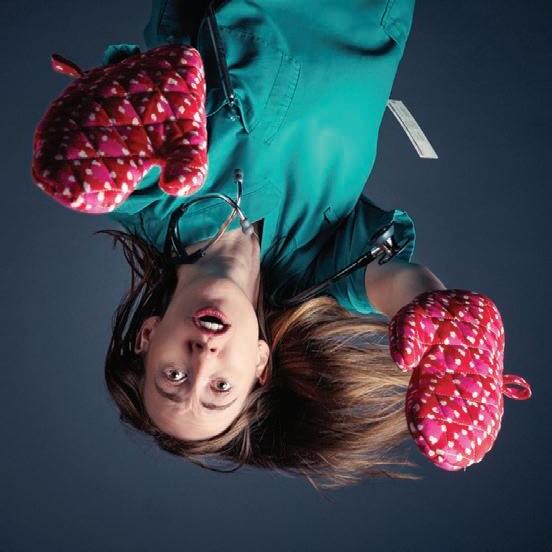



MICHELLE PEARSON





EDINBURGH INTERNATIONAL FESTIVAL & OPERA AUSTRALIA PRESENT OPERA





SUMMERHALL RED LECTURE THEATRE 16:45, 31 JULY - 25 AUGUST YOU’RE AN INSTRUMENT! THE PLEASANCESONICRATS








QUEENSLAND’S PRODUCTION IN ASSOCIATION WITH CIRCA
UNDERBELLY BRISTO SQ, FRESIAN 18:50, 30 JULY - 10 AUGUST






EDINBURGH PLAYHOUSE 20:00, 13 & 15 AUGUST / 15:00, 16 AUGUST









TWO 10:30, 30 JULY - 25 AUGUST










Loss of memory is a universal experience, making it a fruitful area for theatre-makers. In preparing for their Fringe productions, a trio of creators have explored the ways in which people with dementia and their carers can stay productive and positive. Jo Laidlaw finds that this can mean everything from putting on some Shakespeare, letting go of ego or having more orgasms
M‘y grandmother’s care home had a corridor that looked like a street in a mid-century Irish village. In some places, entire care homes look like streetscapes. I discovered a book by Oliver James about SPECAL method, which encourages carers to stay inside any happy memory that the person they’re with wants to explore, regardless of reality. So you keep saying yes; you don’t say hello or goodbye: it’s like a giant lifelong improv.’
It’s clear Dan Colley’s research on memory loss and dementia struck several chords with the writer and director. His show, LostLear, is about Joy, a woman with dementia who lives in a treasured memory of rehearsing for a production of KingLear. When her estranged son returns and is cast as Cordelia, he finds a way to connect with her, without losing himself along the way. Themes of reconciliation interweave with ideas of memory, attempting to answer one of art’s eternal questions: who are we? And, if our memories disappear, who really are we then?
This parallel between theatrical world-building and memory is also explored in Theatre Re’s TheNatureOf Forgetting. ‘Most of our shows start with a question; in this case it’s “what’s left when memory is gone,”’ explains director Guillaume Pigé. Their show uses a stage within the stage as a set to construct and deconstruct memories. ‘Every time you remember something, you reconstruct it,’ Pigé states. ‘The more you remember something, the more it moves away from the actual event. And we forget more than we remember. We have to, because imagine remembering every single thing? What a burden.’
Colley and Pigé both point to the research and community involvement behind their shows: Lost Lear held workshops for people with dementia (Dementia Arts will lead a post-show discussion on 27 July), while Pigé worked with leading neuroscientist Professor Kate Jeffery and collaborated with memory groups around the country. ‘We learned that memories do not disappear, they just become inaccessible, which means that people with memory loss are still the same,’ explains Pigé. ‘They are who they were; they just can’t access their memories in the same way.’
Mind matters: Lost Lear and (below) Jello Brain; (previous page) The Nature Of Forgetting

>> In contrast, Jello Brain takes a more personal approach. Natalie Grove’s one-person play focuses on her relationship with her mother who was diagnosed with early-onset Alzheimer’s when she was 55 and Grove 25. Becoming a carer in what’s supposed to be the most carefree decade was tough. ‘I feel it’s one of those illnesses where people don’t want to talk about it, because there’s no cure; even our closest friends weren’t as supportive as I needed them to be, because there’s no rallying round to get the person better,’ says Grove.
Yet their story is uplifting. ‘There’s a whole spectrum of emotion and colour. There are beautiful, sublime moments. There is joy.’ There’s humour too, particularly around Grove’s quest to find someone to take care of her ‘I saw all these men in the medical community and had all these ridiculous fantasies, like when my neurologist started talking about how orgasms are good for brain health ’ Her show

also highlights the support her mother has found in her memory-care home. ‘They make it so much fun, they’re always doing ridiculous activities and handing out ice cream. The people just sing and dance; it’s like its own microcosm. Ego is completely stripped away.’ Ultimately, these dramas all aim to teach us something about being human. ‘People think dementia means your life is over,’ Grove says. ‘But these people are really living. I hope my show says that you can still send and receive love and connection, even if it’s not in the way that other people do. Your life still has value.’
Lost Lear, Traverse Theatre, 27 July, 2–24 August, times vary; The Nature Of Forgetting, Pleasance Courtyard, 9–23 August, 1.15pm; Jello Brain, Greenside George Street, 1–23 August, times vary.















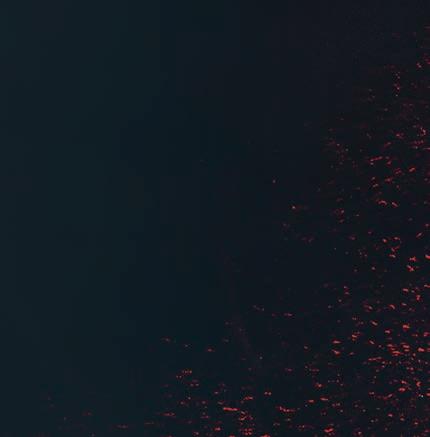







































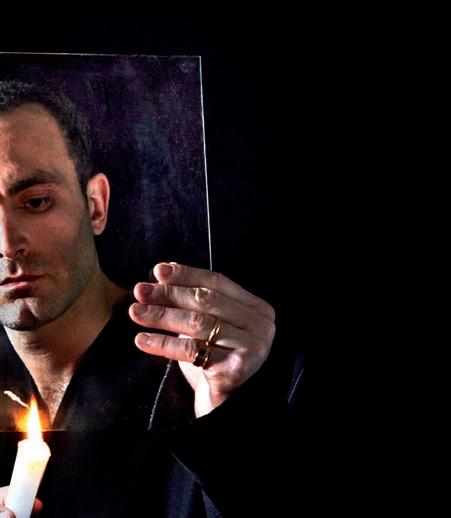



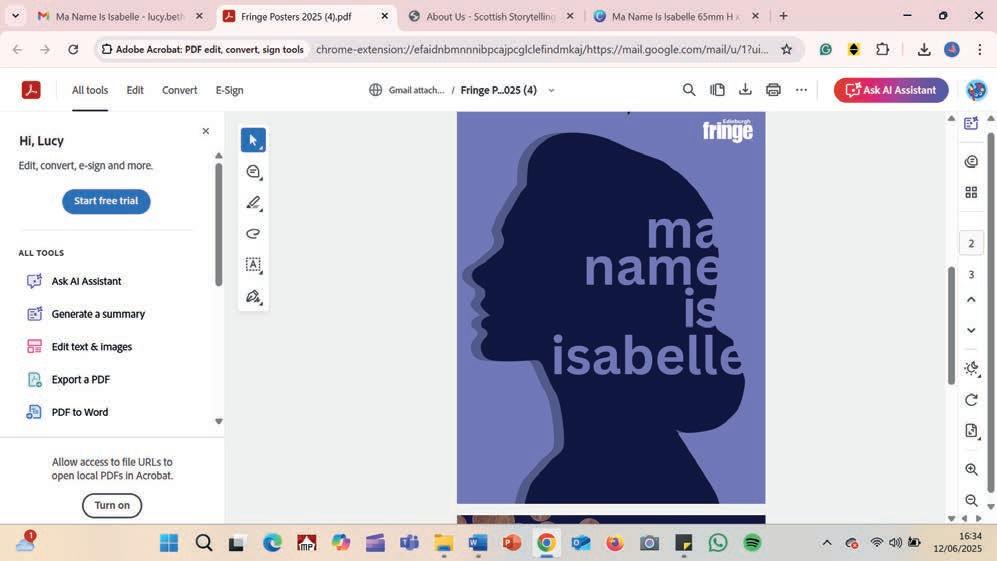
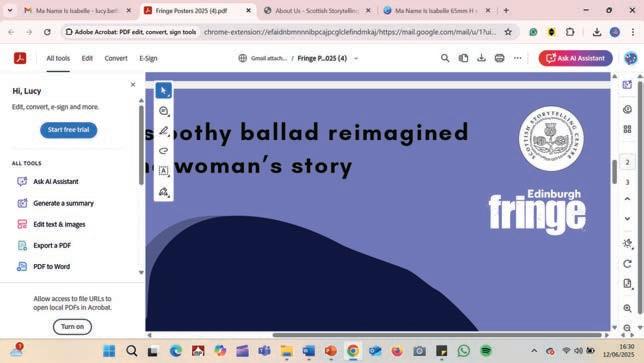











Would Olympic glory help you be accepted in a new homeland? This question and many more are thrown into the mix of Jennifer Irons’ new play, Bad Immigrant. She tells Gareth K Vile about the absurd rules controlling who is allowed into countries and why roller skating is a fitting metaphor for being a migrant




Jennifer Irons’ previous Fringe foray, Yukon Ho! , was a bracing yet playful exploration of Canada, her country of origin. For Bad Immigrant, she casts her eye towards the UK, her country of relocation, discovering a potent metaphor for the experience of migration.
In the aftermath of Brexit and drawing on the artist’s experience of developing a new set of skills during and beyond lockdown, it promises Irons’ distinctive combination of imaginative dramaturgy and humour to ask serious questions about identity and belonging. ‘Yep, it’s a roller disco about immigration,’ she admits. ‘Nobody wants to listen to some middle-aged white lady lecture you about immigration, so the important part is that it is entertaining. And skating is great!’
Irons’ approach to performance sits in the sweet spot between comic reflections on profound issues and the more anarchic strategies of live art. Having been (inadvertently) the choreographer for Boris Johnson during his time as Mayor Of London, Irons found herself considering her status as a migrant from Canada while discovering the joys of skating.
‘I am an immigrant in England and I have been here for 25 years. The last show I made was looking back at the place I came from, an exploration of my own heritage and identity. Then Brexit happened and all of a sudden the question becomes: what does it mean to be an immigrant here? The show is like a two-year documentary with film, about me learning to skate and asking questions about belonging and trying to be good enough. Skating is like a metaphor for being a migrant: you are always moving, you get a bit more comfortable, then you have to learn the new language. And there are different groups, different ways of understanding. If you ask any immigrant, they’ll tell you there is a whole set of rules that you inherently know; that you are a guest.’
With this metaphor in mind, Irons started to investigate not what makes a good immigrant (‘that would be boring,’ she laughs), but ‘questions around gatekeeping, who is allowed in, who makes up the rules and what the rules actually are. And every answer I would find was further absurdity piled on top of absurdity.’ Channelling her memories of childhood hero Elizabeth Manley, a surprise silver medallist for Canada at the 1988 Calgary Olympics, Irons ponders what it might take for an individual to be accepted by their new country, and whether the quest to become an Olympian superstar might make the process easier.
The immediate relevance of the theme, however, is belied by Irons’ mastery of an absurdist theatricality and an intelligent, warmly humorous reflectivity. In Bad Immigrant, she not only confronts a tough issue (one that has become bitter and spiteful in contemporary politics) but searches for a way to create a comfortable and entertaining place for the conversation to slide elegantly away from its dangers and retain an impressive balance and elegance.
Bad Immigrant, Assembly George Square Studios, 18–24 August, 3.35pm.

Each year, the summer of sport always touches the Fringe a little and here’s a trio of shows grappling with wrestling and slugging it out with boxing. Chokeslam (Underbelly Bristo Square, 30 July–25 August, 8.45pm) is led by actor, comedian and playwright Tegan Verheul with her returning autobiographical show that half nelsons the heck out of heartbreak, friendship and the healing power of intense action in the ring.
There’s not an actual ring in play for Mythos: Ragnarök (Underbelly Circus Hub, 1–23 August, 8.40pm) but a heavily metaphorical one as a battle royale occurs that is part muscle, part myth. A grittier, more down-to-earth and face-on-thecanvas style theatre affair is Cornermen (Space On The Mile, 3–23 August, 12.15pm) in which a trio of debt-ridden lads take a rising pugilist under their wing and try to mould him to be their cash cow. Guessing they lose this one, if not through a knockout blow but certainly on points.




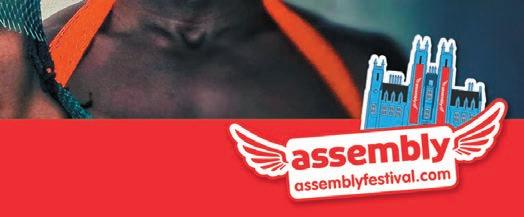











Experimental theatre trio In Bed With My Brother will be crossing their collective fingers that this new show is more highly rated than the act it’s based on: The Shaggs were declared the world’s worst band of the 1960s. The company admit to Eve Connor that this has been the most difficult thing they’ve ever made
We can neither confirm nor deny our involvement in “anarchic” or “unclassifiable activities,”’ say theatre provocateurs Nora Alexander, Dora Lynn and Kat Cory. Yet both these descriptors have been applied to the shows they’ve written, created and performed under the moniker In Bed With My Brother. In keeping with the trio’s eyebrow-raising name, their performances are brash and experimental, full of nudity, expletives and audience participation.
No strangers to the Fringe, their 2016 Edinburgh debut, We Are Ian, dived into the early 90s Manchester rave scene and garnered a nomination for the TotalTheatre Emerging Company Award. 2019’s follow-up, Tricky Second Album , disproved its name and nabbed them a Total Theatre Award for innovation, experimentation and playing with form. Now they’re back and promising ‘a bit of a change of direction.’
‘In a world of pure chaos and destruction,’ they say over email, ‘we reckon rigorous rehearsal, a well-written narrative and nuanced dramaturgy is true rebellion.’ Should we expect a more mellow theatre experience then for the upcoming Philosophy Of The World Hardly.
Drawing its title from the 1969 album of the same name, Philosophy Of The World concerns the American rock band The Shaggs, composed of sisters Dot, Betty and Helen Wiggins. In a period alive with works of musical genius, The Shaggs stood out for all the wrong reasons: their rhythmically, vocally and lyrically challenged music earned them the title of the worst band in the world. The sisters were evidently not natural musicians, nor did they want to be. Their
career was orchestrated and financed by their father, Austin, who was intent on fulfilling a childhood palm reading that predicted his future daughters would form an influential band. And he succeeded, in a way: The Shaggs later achieved cult status as outsider musicians, lauded by the likes of Frank Zappa and Kurt Cobain.
In Bed With My Brother were perhaps drawn to the story of The Shaggs due to the band’s similar resistance to classification. Were they ahead of their time or simply awful? They were an all-female band who completely transgressed any sort of musical rules. They were also unwilling musicians, controlled by a domineering father. Though Philosophy Of The World is described as a ‘feminist reclamation’ of The Shaggs, capturing this tension at the heart of the band has proved challenging. ‘To be real, this has been by far the hardest show we’ve ever made,’ admit the trio.
The company may be attempting to capitalise on the current musicbiopic boom with their latest piece of theatre (they apologise for the absence of Timothée Chalamet, so audiences will have to make do with Alexander, Lynn and Cory in the lead roles). But more importantly, they have crafted a story about fate, one in which they ask ‘who is in control of us and our destiny?’ Though they undoubtedly hope to secure a successful festival hat-trick, they can, at the very least, guarantee Philosophy Of The World will ‘resonate very loudly through a 5.1 surround-sound system and subwoofers.’
Philosophy Of The World, Summerhall, 31 July–25 August, 10.45pm.









“A hit show from one of the finest creative minds in the country” Cork Independent






One of the true rising stars of the Scottish comedy game, is this the August when things really start to motor for the lad? In Crisps And A Lie Down, he tells of being manipulated by a dog. Not just any dog. His step-dog.
n Monkey Barrel CabVol, 28 July–24 August, 5.15pm.
The consequences of Britain leaving the European Union have been felt by many different people, and in this new musical the focus is on young migrants who are living in a country that they feel doesn’t want them anymore.
n Underbelly Bristo Square, 30 July–24 August, 1.25pm.

Subtitled ‘Songs From The End Of The World’, this is LA-based Scout Durwood’s one-woman world premiere which crams in original tunes, pop classics, Broadway ballads, storytelling, clowning and burlesque. ‘Katy Perry meets Sartre’ no less.
n Underbelly Bristo Square, 30 July–24 August, 9.20pm.


YOU’RE AN INSTRUMENT!
Via the twin bodies of House Of Oz and The Sonicrats lands this musical science experiment for the kids in which humans are turned into instruments. Not literally, of course, but very nearly . . . n Pleasance Courtyard, 30 July–25 August, 10.30am.
Abuse survivor Fenia Gianni writes, produces, co-directs and co-stars in this ‘rave tragicomedy’ which unravels the complex mind of someone who has gone through hell and emerged (but only just) on the other side.
n Just The Tonic Caves, 31 July–24 August, 1.35pm.


The Shetland-based choreographer brings us A Journey Of Flight, a thoughtprovoking work inspired by the migration of birds. It also touches on human nostalgia and those feelings we may experience on leaving a place and perhaps returning.
n Assembly Dance Base, 12–17 August, 2.30pm.

Author of Black Friend: Essays, Ziwe Fumodoh rolls into town to play a few late nights in a nice big room. Having made her name as a fearless celebrity interviewer, opinions will be rolling out of her.
n Pleasance Courtyard, 20–23 August, 10.30pm.








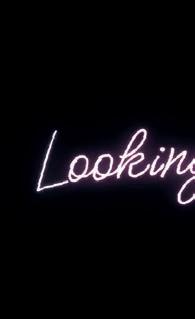
















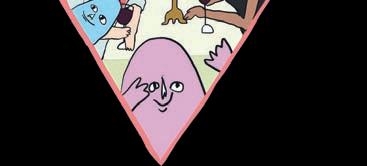
















VISIT THE EL JIMADOR VAN IN GEORGE SQUARE GARDENS
















































































‘It’s not just about playing notes; it’s about having something to say.’ Putting her music where her mouth is, Munich-based pianist Hanni Liang believes that the concert space is an open arena for reflection, questions and encounters. To that end, her 75-minute appearance at The Hub will be a truly immersive experience which the audience can help shape by revealing their thoughts about their own dreams through words, pictures or sharing aloud.
(Brian Donaldson)
IN ASSOCIATION WITH


n The Hub, 7 August, 8pm.
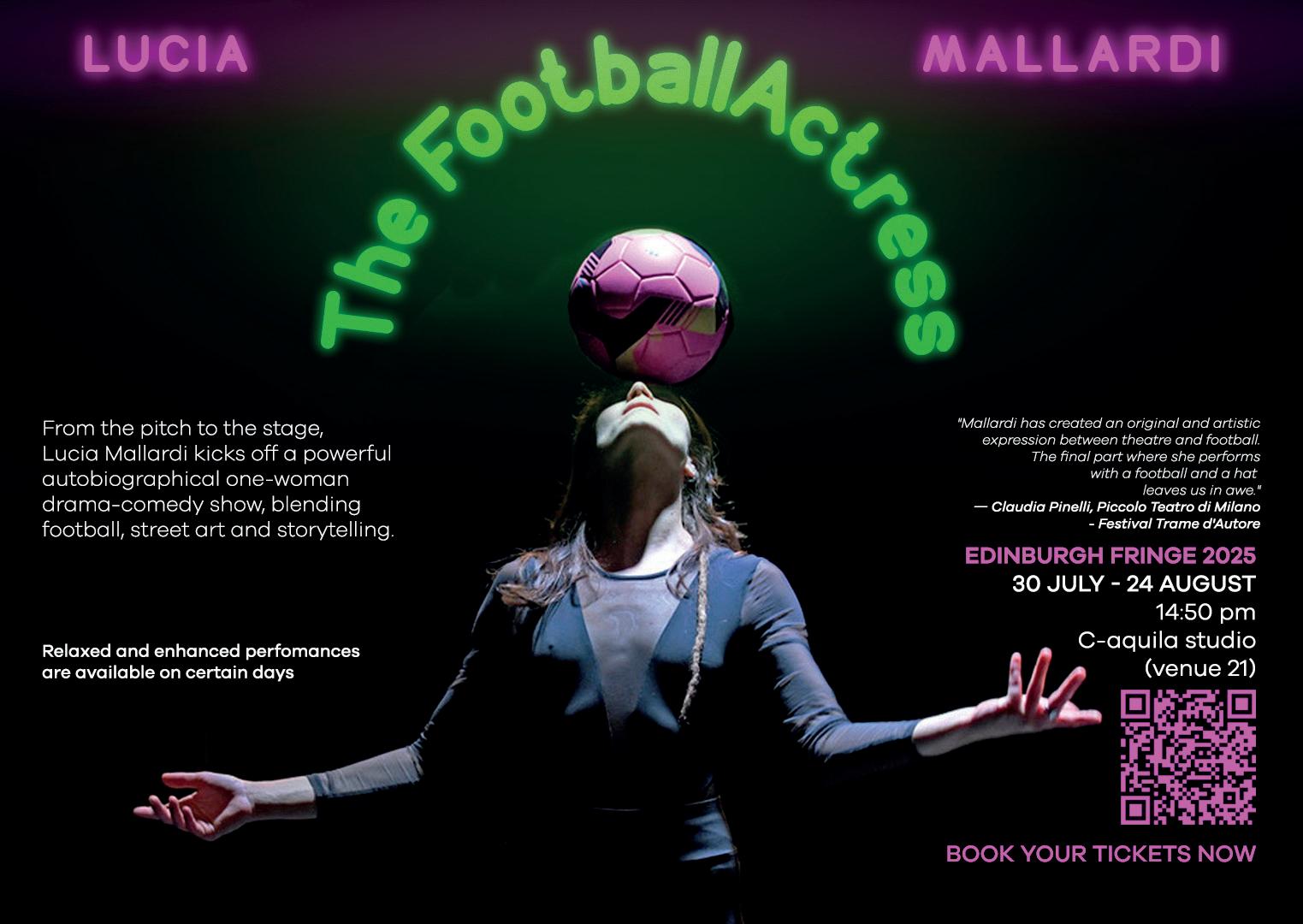


With acting heavyweight Brian Cox on board, Make It Happen is primed to be one of festival season’s big hitters. Exploring Scotland’s key role in the 2008 global financial crisis, playwright James Graham tells Mark Fisher what drew him to this sorry fiscal tale and why he’s bringing Adam Smith back from the grave to set the record straight










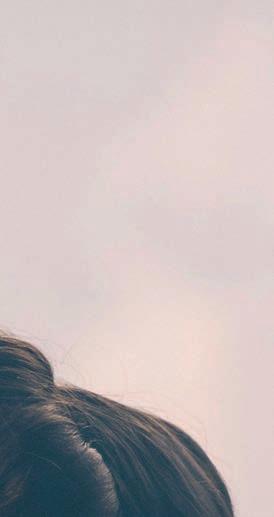

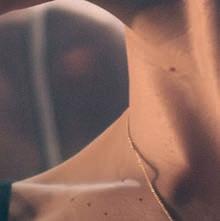


‘CONSISTENTLY PUNCHES



ABOVE ITS WEIGHT’








When you have a reputation for writing plays on topical themes, everyone has a story for you. Just ask James Graham. He is the prolific playwright whose work has ranged from the rise of the England men’s football team under Gareth Southgate (Dear England ) to the Saturday-night fight in Nottingham that ended in a man’s death (Punch), and the army major accused of cheating on Who Wants To Be Millionaire? (Quiz ). On television, he has portrayed murders in a Nottinghamshire mining village (Sherwood ), the role Dominic Cummings played in the Leave campaign (Brexit: An Uncivil War), and the rise of Lib Dem leader Nick Clegg (Coalition).
There are others besides. It means that whenever something makes it big in the news, people always think of him. ‘I’ve been inundated with Sycamore Gap ideas,’ he smiles. ‘Animated features, ballets, computer games the happy marriage is when you find a banging story with an engine that drives, twists, turns and pushes, that somehow allows you to interrogate whatever the anxiety of the day is.’
Safe to say not every story captures his imagination. But one, in particular, did. It came from Andrew Panton, artistic director of Dundee Rep, who wondered what Graham would make of the 2008 crisis that led to the government bail-out of the Royal Bank Of Scotland (RBS). ‘If you get excitement about piecing together the jigsaw puzzle of post-war Britain, it feels like such a moment for us,’ says Graham. ‘And it’s a
moment we’re not completely out of.’ Could it be that in Fred Goodwin, the Paisley-born chief executive who steered the bank from massive expansion to the brink of disaster, he would find a ready-made tragic hero? ‘The danger about doing plays about real people is it suggests that one person can change the course of history,’ says the playwright. ‘But Fred Goodwin is one example of a man who did seriously impact the country.’
Not long ago, a drama about acquisitions, stock markets and derivatives would have sounded like boxoffice poison. That was before the West End success of Enron, Lucy Prebble’s play about the collapse of the American energy giant, and The Lehman Trilogy, Ben Power’s drama about the roots of the sub-prime mortgage crisis. Their popularity reassured Graham that banking was no riskier a subject than, say, the England football team. DearEngland was terrifying because I couldn’t think of many examples where football had been put on stage and it not being the cringiest thing on earth,’ says Graham, whose MakeItHappen is a co-production between Dundee Rep, Edinburgh International Festival and National Theatre Of Scotland. ‘At least it gives me some calm that there is precedent for theatre having interrogated finance and the economy.’
Fred Goodwin’s life has a classic rise-and-fall arc. Born in 1958, he was brought up in a Ferguslie Park council house, became the first in his family to go to university, and emerged as a high-flying chartered accountant and then a banker. It was his willingness to make ruthless cuts in his role as deputy chief executive of the Clydesdale Bank that earned him the nickname

‘Fred The Shred’. He joined RBS in 1998 and, having become chief executive in 2001, set about a series of acquisitions. It started with a £23.6bn takeover of NatWest (and with it, the loss of 18,000 jobs) and culminated in a £55bn bid for ABN Amro.
Under his watch, RBS became the fifth largest bank in the world, but only at a cost. The £350m bill for the RBS HQ at Gogarburn pales in comparison to the bank’s global spending spree. The expense left the organisation especially exposed to 2008’s financial crash. In February 2009, it posted a loss of £24bn, the biggest in British corporate history. By then, the government had stepped in with a rescue package, and Goodwin was out. Although the playwright is angry about the financial crash, he has no intention of demonising Goodwin, who is played by actor Sandy Grierson. ‘The play questions whether he was just symptomatic of a broader culture,’ states Graham. ‘If it wasn’t him, would it have been someone else? Was he too unfairly made the face of a much more widespread failure of regulation of the banking sector?’ Graham has usually met his real-life protagonists, but so far not Goodwin. ‘I would happily invite him into the rehearsal room or to meet me. I suspect, for all the obvious reasons, he will be feeling some scepticism and wariness about having this chapter in his life put on stage. But the play is about sincerely trying to understand what he was up to. I’m trying to be empathetic towards him. It’s a more interesting experience for the audience not to just paint him as a pantomime villain.’
He sees his role as filling the gaps that public institutions have left exposed. ‘Infamously, not a single individual was prosecuted for the biggest financial crash since the Great Depression and it was entirely man-made,’ says Graham. ‘The absence of parliamentary inquiries, court cases and law suits is where drama comes in. We can re-interrogate these things and try to understand people’s motivations and the flaws in the system.’
There was also another element of the story. On board from the start was actor Brian Cox, whose role as Logan Roy in Succession showed another side of the capitalist machine. Cox was insistent that a drama set among the bankers of Edinburgh had to acknowledge Adam Smith, the figurehead of Scottish Enlightenment economics. He thought it was too much of a coincidence that the author of TheWealthOfNations, a man regarded as the father of capitalism, once walked the same streets as Goodwin, whose actions came to symbolise the excesses of a flawed financial system. ‘It unlocked it for me stylistically and tonally, having something a bit more gothic and operatic with echoes of the past,’ says Graham.
It also means not leaping to conclusions about a frequently misunderstood economist. It is a mistake to characterise Smith (played by Cox in Panton’s production) as the kind of free-market messiah championed by the right. He is more complex than that. Although he was in favour of the rights of the individual, he was also a moralist who respected the role of government in keeping tyranny at bay. ‘Different sides of the ideological spectrum have weaponised Adam Smith to sell a particular narrative,’ says Graham. ‘I’ve summoned Adam Smith into the 21st century to set the record straight in a bombastic and comedic way, which excited Brian and made it fun to write.’
For these reasons, Graham’s play could only be set in Scotland. ‘The mind-bending element of the financial crisis is that it was a Scottish story,’ he says. ‘How bizarre that at one time, the biggest banks in the world were in Edinburgh and we had a Scottish prime minister and a Scottish chancellor; but we can go even further back and it was a Scottish idea in the form of Adam Smith. Free markets, deregulation and capitalism were ideas born in the streets of Edinburgh and then shipped around the world. Capitalism was born in Edinburgh and nearly died in Edinburgh in 2008.’
Make It Happen, Festival Theatre, Edinburgh, 30 July–9 August, times vary.


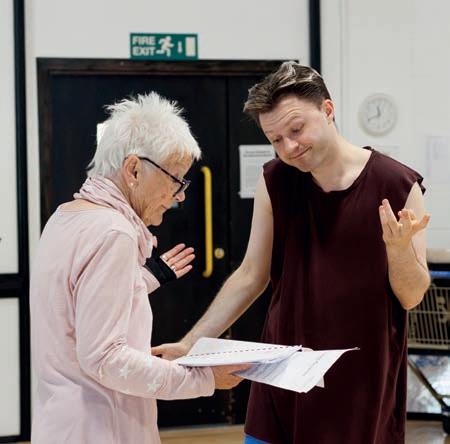
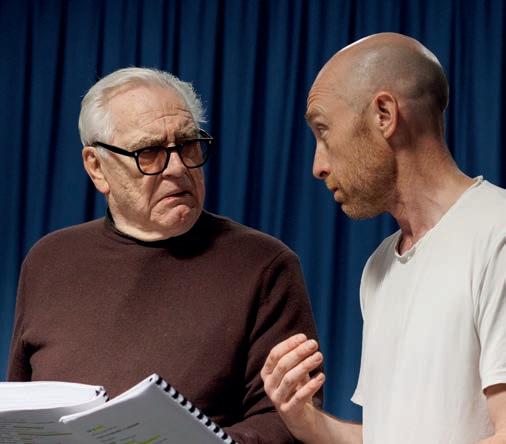
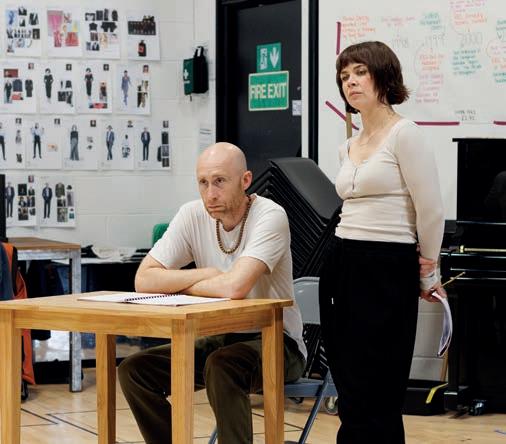
15 SHOWS
7 VENUES
EDINBURGH 2025

LONDON’S MOST VIBRANT PRODUCER OF NEW THEATRE, COMEDY AND CABARET IS BACK WITH THIS LUSH LOT.
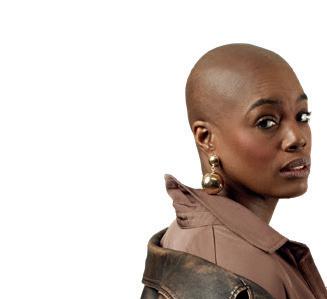















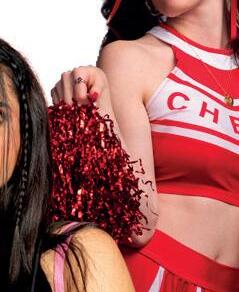



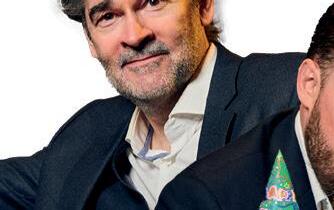
































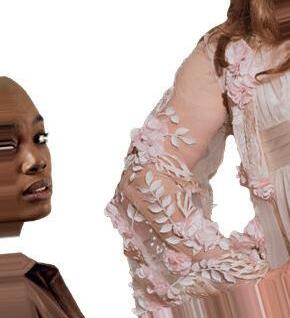





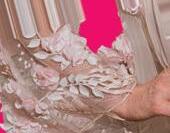












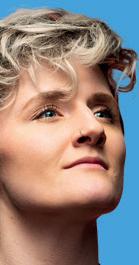






AdamRiches&JohnKearns•AgeIsAFeeling•BenTarget•CountDykula
Jonny Woo • Kiell Smith-Bynoe & Ed MacArthur • Lesbian Space Crime

ThanyiaMoore•ToussaintDouglass•UroojAshfaq
PattiHarrison•PrashastiSingh•ShamikChakrabarti•Sh!tTheatre
Plus, exciting new talent from our
View our full programme and access performances





It could be a question for a quiz show: what do Michael Jackson, Freddie Mercury and opera star Iestyn Davies have in common? Add in Austrian singer JJ and his Eurovision-winning ‘Wasted Love’ and even the slowest to the buzzer might get the answer.
Basically, they all sing high; higher than might be expected from a voice other than a woman’s. Generally known as countertenors, several of them are appearing at this year’s Edinburgh International Festival. While Iestyn Davies takes to the stage as Orpheus, a role originally for a castrato (yes, they actually used to castrate boys pre-puberty to keep their voices high), EIF concert performances also include rising star Hugh Cutting in a storytelling recital of his own curating, and as soloist in Bernstein’s ‘Chichester Psalms’.
In the glorious countertenor baroque playground of Handel and Bach, African-American Reginald Mobley sings with both the Monteverdi Choir and Dunedin
Consort. ‘Even as someone who travels a lot, I think hearing this voice is still extremely rare in many places,’ says Mobley. ‘Even more so is a rare, black pearl of a countertenor. The entire package is unusual; an extremely unique species.’
But what is it about the countertenor voice that draws people to it? ‘It’s something out of the expected norms,’ says Mobley. ‘Something otherworldly and ethereal to hear males singing in this way, the sort of sound that in classical music you would usually hear from a female mezzo.’
For Cutting, brought up in England (where people like Davies, Tim Mead and Michael Chance continue to trailblaze the way, with James Bowman and Alfred Deller, the godfather of the countertenor, going before them), ‘it now feels like it’s really going through a renaissance. With all of these singers, the voice is smooth and equal throughout the range, which is hard to build. These guys spurred us on.’

Carol Main looks at the phenomenon of countertenors and what draws audiences to the distinctive sound of men singing in the high vocal range more commonly associated with women

Technically, it’s quite complex. ‘Don’t ask me how the doughnuts are made,’ says Mobley. ‘As a solo instrument it’s still relatively young compared to soprano, alto, tenor or bass, and there’s not a codified way of teaching.’ As Cutting explains: ‘there’s a really interesting growth of types of countertenor, falsetto and also a man singing super-high. Falsetto is always part of vocal training but a tenor can also access the higher head voice through training. There’s a lot of variation as a result and it’s not all about being a diva singing high notes. It’s really important to develop the middle and low notes too.’
When his voice broke around the age of 12, Cutting, already a keen singer, found a way to keep his treble voice going as a young falsetto. Both singers now also work with their modal, or more natural baritone voice.
‘Everything from me is my voice,’ says Mobley. ‘Even in opera, as a tall, handsome man singing a female role. It’s neat and it’s all me.’ Opera singers have always crossed conventional gender definitions and current
countertenor interest, says Cutting, ‘may also be to do with fluidity in terms of gender and sex at the moment.’
Both singers are extremely excited by their Edinburgh repertoire. For Mobley, it’s a neglected Handel cantata and his old favourite, ‘Dixit Dominus’ with the Monteverdi Choir, which helped launch his career.
Apart from the Bernstein, Cutting is joined by pianist George Ireland for a deeply considered reflection on liberation through the voices of over a dozen different composers, some of it new. ‘A lot of new music is written for countertenors,’ Mobley notes. ‘This voice will be around for a long time.’
Best Of Monteverdi Choir, Usher Hall, 4 August, 7.30pm; Hugh Cutting & George Ireland, Queen’s Hall, 7 August, 11am; Dunedin Consort & John Butt, Queen’s Hall, 21 August, 11am; Bernstein & Stravinsky, Usher Hall, 21 August, 7.30pm.

production@leroyandrose.com
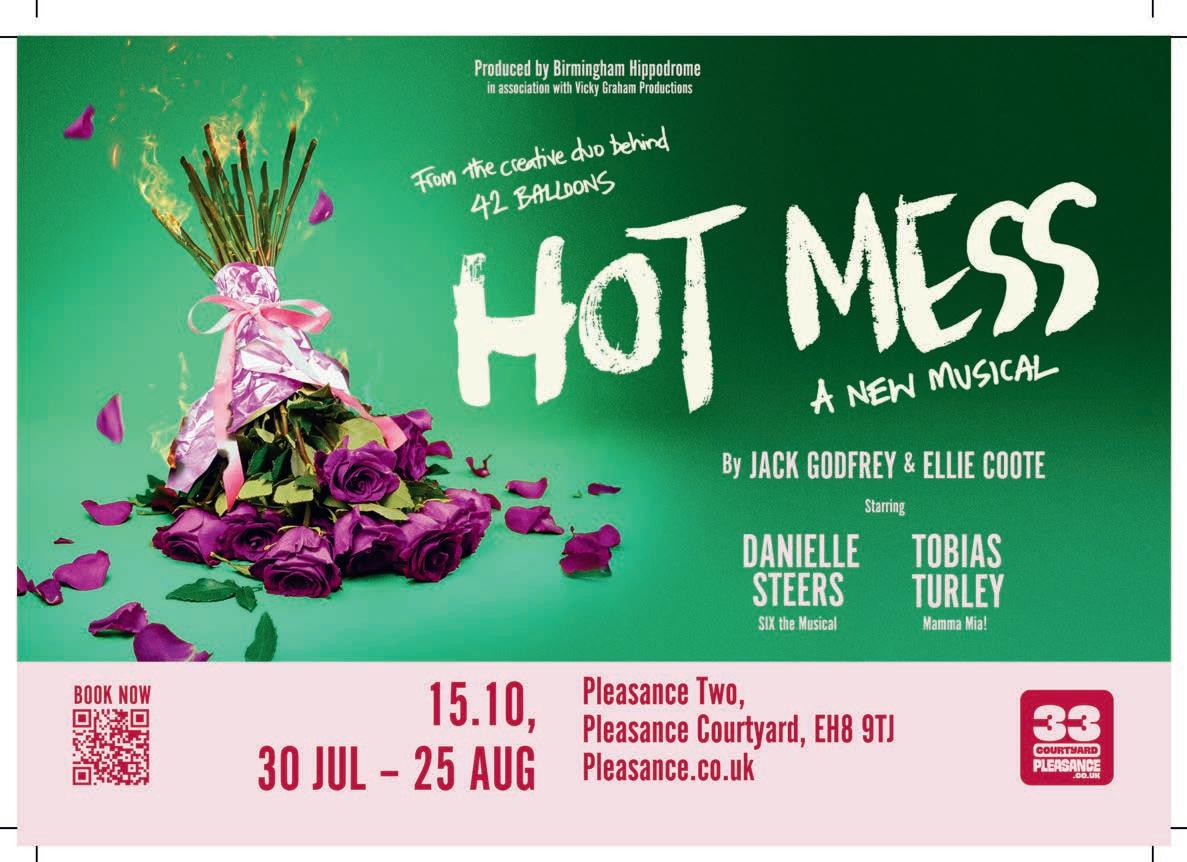
It’s Shakespeare but not as you know it. Canadian provocateur Cliff Cardinal transforms As You Like It in a confrontational retelling for his International Festival debut. Chris Abraham, who commissioned the work, tells Neil Cooper how this radical adaptation was born and why Cardinal’s anger makes him such a powerful performer
Billed as As You Like It: A Radical Retelling, on paper, at least, Cliff Cardinal’s Edinburgh International Festival debut sounds like a deliberate exercise in ripping up the theatrical rulebook when it comes to Shakespeare. Whether anyone actually does like what Cardinal brings to his performance remains to be seen, but they should probably leave all expectations at the door.
‘Cliff is a very unique, important Canadian artist,’ says Chris Abraham, artistic director of Toronto-based Crow’s Theatre, who commissioned Cardinal’s new work. ‘When we came out of the pandemic in Canada, it was really important for us, after a period of cultural reckoning that was a global cultural reckoning in the theatre, to think about the practices that we use in making theatre; our relationship to audiences and the habits, traditions and expectations of our audience.’
Cardinal’s commission chimed with reports of what appeared to be mass unmarked graves in church-run residential schools for indigenous children. As an indigenous artist who had already explored how First Nation communities can be marginalised in his solo work Huff, this was of obvious interest to Cardinal.
‘We began a discussion about how theatre might think about that moment,’ Abraham recalls, ‘and at the time I happened to be directing a production of As You Like It, which is a play I’ve done several times. So my conversation with Cliff led to this commission for a new play and this kind of radical adaptation of Shakespeare’s play.’ While As You LikeIt is regarded as one of Shakespeare’s frothiest kiss-chase comedies, Abraham points to the play’s darker
He brings trouble to the conversation, and that trouble is good “
side. As You LikeIt looks at transformation in the context of a group of people that move into the forest together in a moment of crisis and emerge radically changed. And that became Cliff’s departure point in terms of how he was going to examine the piece.’
Cardinal has long been an expectationconfounding provocateur, ever since his early work, Stitch (2011), first brought him to public attention. Cardinal brought Huff to the Fringe in 2018, a fearless and impassioned piece that formed part of Summerhall’s CanadaHub strand.
With As You Like It: A Radical Retelling, he’s already made waves not only on home turf in Canada, but in Sydney and London too.
‘I’ve known Cliff since he was a young playwright at the National Theatre School Of Canada,’ Abraham says of Cardinal’s credentials. ‘Cliff is a singular artist, and performs work that springs directly from his lived experience. He’s really a kind of inconvenient voice in the indigenous conversation in Canadian theatre, and he has been since he wrote Huff What’s powerful about him as an artist is that he’s honest and candid about his anger; and what makes him provocative, challenging and important is that he does not know how to lie or to diminish or disguise that anger. What I admire about him is that he brings trouble to the conversation, and that trouble is good.’
As You Like It: A Radical Retelling, Church Hill Theatre, 20–23 August, 8pm.

Electronica arist Kaitlyn Aurelia Smith gave up the good life to follow her musical passion. With a new album in the pipeline, she talks to Fiona Shepherd about synths, synaesthesia and solo shows
How much does electronica composer Kaitlyn Aurelia Smith love synthesisers? And, in particular, Buchla synthesisers? Well, so much that she once changed her one wedding list request from a cow to a Buchla Music Easel. That’s one audacious way to crowdfund your music.
‘It’s true,’ she says. ‘I had given up pursuing music as a career and wanted to start a farm and continue learning the art of making cheese. Funnily enough, I don’t eat dairy anymore so it was a good thing I didn’t end up doing that. Instead, I bought my first synthesiser. That was almost 15 years ago and I’m not married anymore, but it was a nice confirmation that there was something I was supposed to do with synthesisers.’
Smith was classically trained at Boston’s prestigious Berklee College Of Music, where she was labelled ‘weird’ by her teachers before being invited back as a guest tutor. She still uses orchestral instruments and takes classical and corporate commissions, including work for superbrands such as Apple, Google, Disney and Amazon, as well as scoring for film and the fashion world from her Los Angeles base.
But since giving up the homestead dream for a synth odyssey, she has made her name as an electronica composer by releasing a number of solo concept albums with accompanying audio-visual live shows, each honed from around a year of private practice. Her forthcoming appearance as part of the International Festival’s Up Late series will be an unmasking of sorts as she debuts a new show themed round her latest album, Gush
‘It’s the first album where my main intention was that I don’t want to hide anymore,’ says Smith. ‘There is a safety in creating a theme for an album but the intention for this one is to share who I

am naturally in the world and what it feels like to be an artist and to be objectified. There is a lot of play with helmets and constantly hiding my face and a lot of intimacy and vulnerability in the lyrics, so I want the show to be more about connecting with the audience and not having distractions with visuals.’
Having said that, a number of album tracks are accompanied by slightly freaky videos showcasing displays of physical strength and flexibility. Smith herself is a hand-balancing ace, as demonstrated in the neon orange publicity shots. She also has synaesthesia, but not the form which sees musical notes and chords as colours; for her, sounds create physical sensations.
‘An example is that someone can say something and the way that the word hits the roof of their mouth will make me feel like a bouncy ball just fell out of their mouth and I have to go catch it,’ she explains. Smith first tuned in to her synaesthesia as a home-schooled child on Orcas Island in Washington State when a family friend played piano and Smith would make such a strong involuntary connection between the piece of music and the physicality of the performance that she could reproduce the music just by recalling how the friend looked in the act of playing.
Now it is a visceral force to be harnessed and played with across her diverse creative canon. ‘I’m having this constant interaction with the world around me in response to sound, which gives me a really large capacity for presence. I can be in traffic, I can be in a city, I can be anywhere because everything is asking me to interact with it at all times.’
Up Late With Kaitlyn Aurelia Smith, The Hub, 16 August, 10pm; Gush is released by Nettwerk Records, 22 August.

















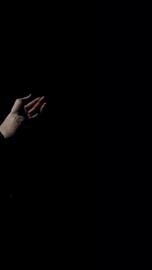

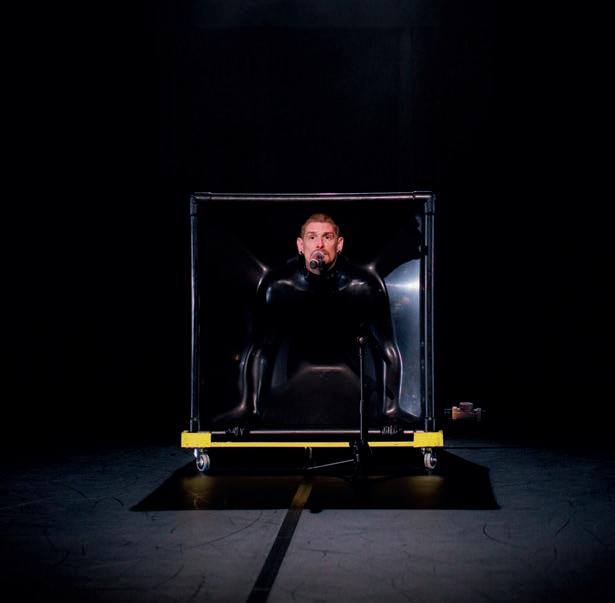
“


We’re a tiny pinprick in the universe; it all matters and nothing matters
Pride, shame, kink, ableism: there’s a lot packed into The Dan Daw Show. The disabled choreographer talks to Dom Czapski about the importance of bodily autonomy and using his next venture to challenge imposter syndrome

I‘wanted and needed this show to be about how I inspire myself,’ says Australian choreographer-performer Dan Daw of his self-titled hour, which bows out with a farewell run at the International Festival. At first glance, the premise feels combustible. Daw shares the stage with dancer-collaborator Christopher Owen (playing KrisX) to explore the overlap of ‘crip’ identity and BDSM kink. The resulting devised work is a clever play of negotiating boundaries between Daw as a submissive and Owen as his dominant (it even features a latex vacuum cube whose sealed membrane turns Daw’s body into living sculpture under the stage lights).
Yet what could read as provocation soon reveals itself as an essay in consent and tenderness. The movement material was harvested from hour-long improvisation warm-ups in which Owen tried out ways to dominate Daw. Sequences the pair found themselves repeating were then stitched into a tight score that nevertheless keeps space for real-time negotiation. In that sense, the show manages to straddle a fine line between its theatricality and a raw sense of vulnerability.
Daw sees a direct link between that on-stage contract and everyday disability politics. The starting point for the show was a reflection on ‘inspiration porn,’ a term coined by disability advocate Stella Young, meaning the feelgood stories that hail disabled people as heroic. The resulting work reframes autonomy as a pleasure practice. ‘There’s a lot of shame attached to being disabled and a lot of pride. The same is true of being kinky. I draw the parallel to show how I want my body to be cared for.’ Isn’t it a scary premise? Daw agrees: ‘I was a closeted kinkster, so making the show felt like coming out again.’

The work has paid off in unexpected ways. ‘I’m now going to parties with friends I didn’t know were kinky. All of a sudden, people started coming out of the woodwork.’ And Daw was struck by how many women after the show thanked him for reminding them ‘not to apologise for the choices they make.’ Care is not just a stage device; it structures Daw’s rehearsal room. Now that he heads Dan Daw Creative Projects, every studio day starts with a check-in. ‘Everyone takes turns saying how they are,’ he explains. If someone needs ten minutes to call a partner or sort a bank problem, they take it. The practice is Daw’s application of ‘crip time,’ an acknowledgement that linear schedules rarely suit non-linear bodies.
That ethos will carry into his next venture, Exxy, a large-scale work on impostor syndrome backed by a New Dimensions commission. Accepting the brief triggered the self-doubt that this show examines. ‘When I got presented with the opportunity, I was like “I don’t think I can.” It’s just that little devil on the shoulder saying “you’re not good enough.”’
Turning 41 has helped quiet that devil. ‘I’m less worried about what people think,’ he reflects. ‘In the grand scheme of things, we’re a tiny pinprick in the universe; it all matters and nothing matters.’
This zen-like outlook lands like a coda to The Dan Daw Show itself: the piece is deadly serious about bodily autonomy yet refuses to take shame, or other people’s expectations, too seriously. Before Daw moves on to Exxy, Edinburgh offers a last chance to see the work that distilled 20 years of dancing and disability pride into one unapologetic hour. It’s an audacious show: two performers taking meticulous care of each other so that both (and, by osmosis, the audience) can breathe a little freer.


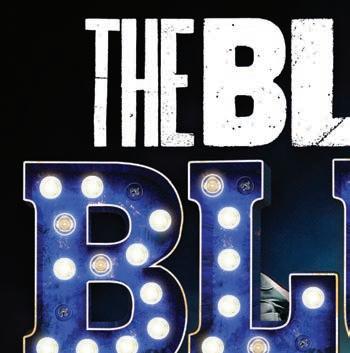













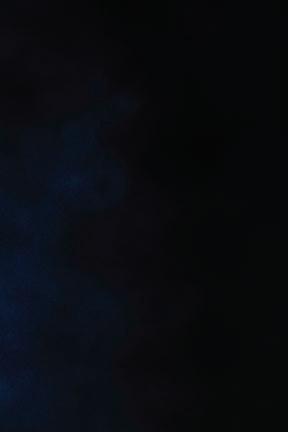

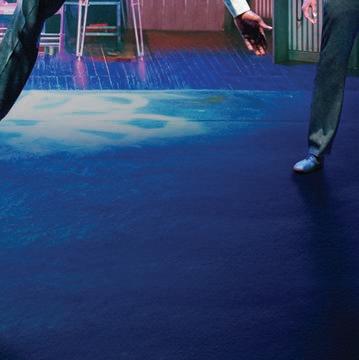



Teaming up Crystal Pite with Simon McBurney is exciting enough. But add NDT into the mix and you have something very special indeed. The fate of humanity and the planet which we’ve trashed are the subjects up for artistic discussion here.
n Festival Theatre, 22–24 August, times vary.
Telling artists that they can’t be political is like asking most of them to create art with one hand behind their back. Probably blindfolded. This set of short plays challenges any notion that silencing creative people is at all healthy.
n Church Hill Theatre, 14–17 August, 7.30pm.

He may not be mentioned in the headline, but there’s also a touch of Messiaen ahead in this barnstorming programme conducted by Karina Canellakis (pictured). A number of the EIF’s Rising Stars will also be joining this performance.
n Usher Hall, 12 August, 7.30pm.

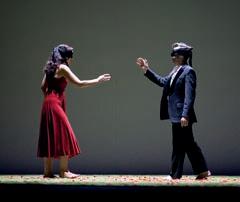
Circus and opera make a rare hook-up at the EIF as the extraordinary talents of Opera Queensland and Circa take a trip into the underworld. Will Orpheus be able to bring his beloved back from the dark side while also succeeding to keep a near impossible promise?
n Edinburgh Playhouse, 13, 15 August, 8pm; 16 August, 3pm.
Shostakovich’s Cello Concerto No 1 and Prokofiev’s Symphony No 5 are both challenging works, but the young American players of NYO2 are determined to be respectful but also fearless of such landmark music.
n Usher Hall, 3 August, 7.30pm.


William Kentridge and Handspring Puppet Company make a long-awaited return to the International stage with this fresh take on a 30-year-old production which considers that compromise is often the largest motivator behind how our world is shaped.
n Lyceum Theatre, 20–23 August, 7.30pm.

One of the clear highlights of last year’s International Festival were the Up Late events. Among those scheduled to appear well into the evening this time are Alabaster DePlume, Kathryn Joseph and Endea Owens (pictured).
n The Hub, 8 & 9, 15 & 16, 22–24 August, 10pm.


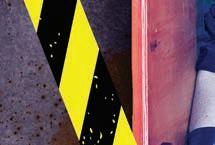





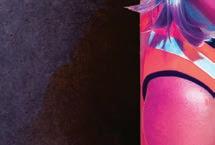


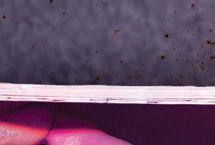


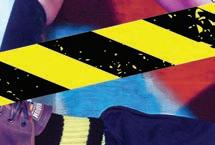













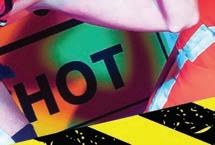



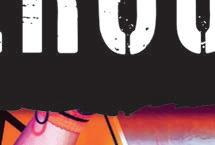




| 30 JUL - 24 AUG

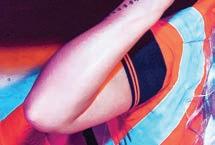




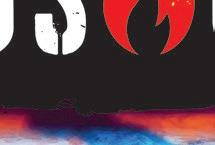






GEORGE SQUARE: PALAIS DU VARIÉTÉ
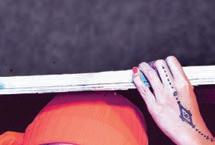


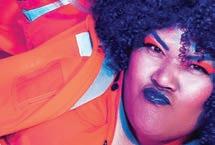


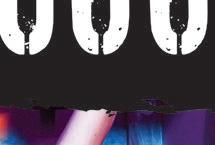

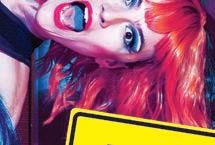

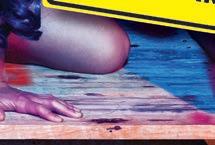



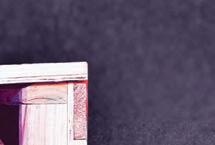



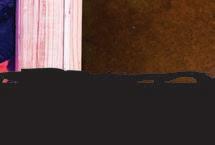






























FEATURING SONGS FROM BEYONCÉ JENNIFER LOPEZ JUSTIN TIMBERLAKE CHRISTINA AGUILERA BLACK EYED PEAS P!NK KATY PERRY KE$HA COLDPLAY PANIC! AT THE DISCO CASCADA AVRIL LAVIGNE BRITNEY SPEARS+ MORE!





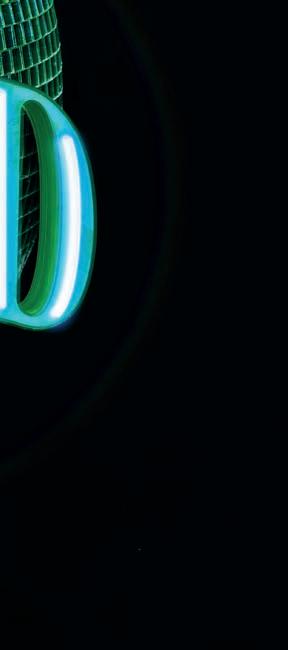























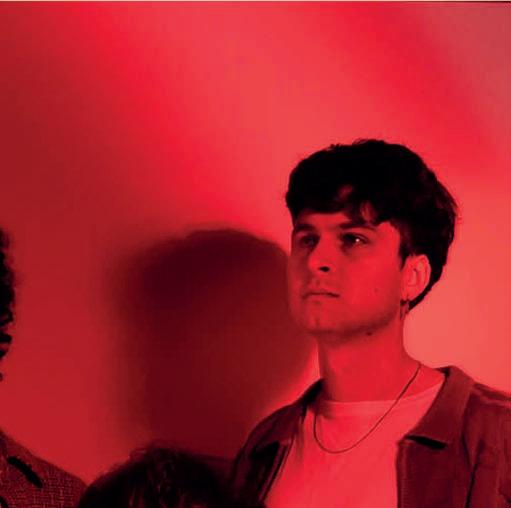
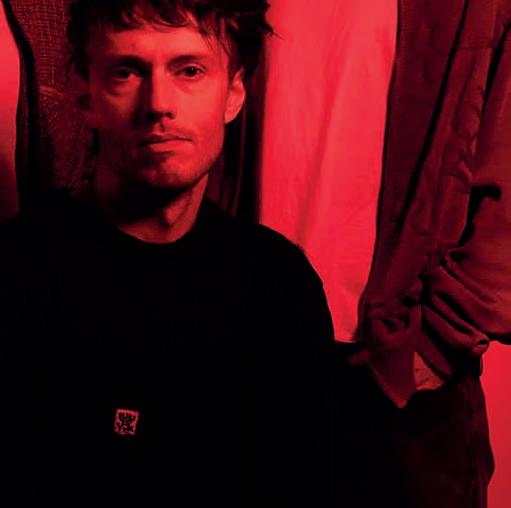
Their genres are fluid and their landscapes keep shifting. Glasgow-based alt-jazz foursome Azamiah embark on a headline tour this autumn and are among the forerunners to be the next breakthrough bunch from Britain’s underground jazz sect. Do your homework ahead of this gig by boning up on their recently released Two Lands EP, which platforms the band’s light, tight and smooth sound, and vocalist India Blue’s soulful tones. (Brian Donaldson) n St Bride’s Centre, 12 July, 9pm.


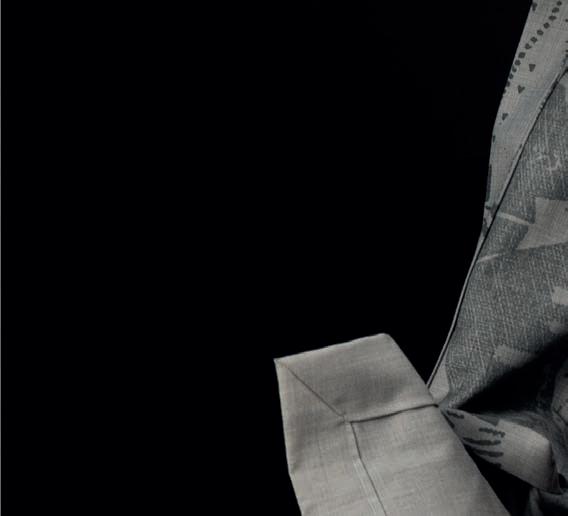
is hitting you “

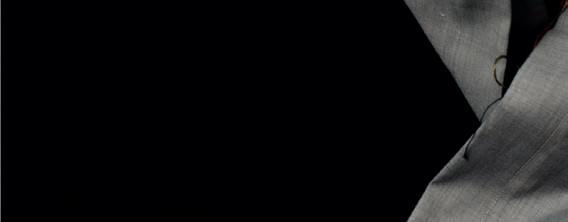



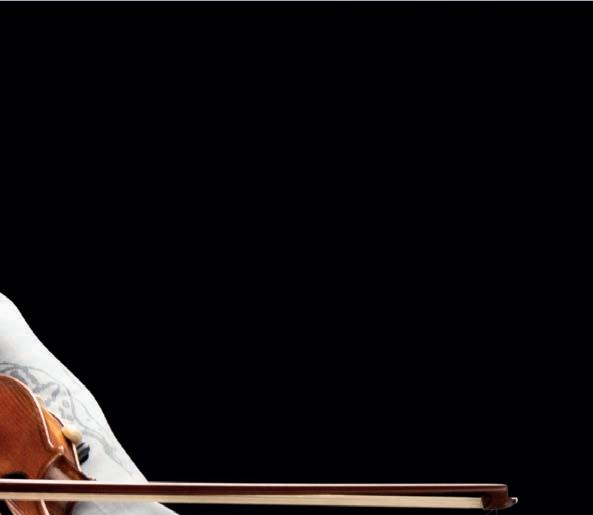


Palestinian-American violin master
Akram Abdulfattah is bringing his explosive fusion of musical influences to Edinburgh Jazz & Blues Festival. He tells Stewart Smith about the importance of international collaboration and bringing new life into the world in a region scarred by conflict
I‘’m not sure how I ended up doing this kind of music, but I really kept things going with my instincts and trying to reflect my personal life experience,’ says Akram Abdulfattah. ‘I always like to learn and explore and connect.’ Since debuting in the mid-2010s, the young Palestinian-American violinist has won acclaim for his virtuosic fusion of Arabic traditions, Indian classical, jazz, rock and electronics. ‘I understood that through multi-national and fusion work, I could achieve some kind of inner peace and a sense of confirmation that we are all human and can share a lot; on stage and off. That made me want to do it more and make it my path, in addition to my belief in the power of instrumental music and its effect on everyone, regardless of their identity.’
Raised in a musical household, Abdulfattah started out playing darbuka (goblet drum) and oud (11-string lute). ‘It goes back to my father’s love and passion for music, especially the oud. Later, that passion was passed on to the whole family. Two of my uncles, Foad and Mowaffak, went on to study music professionally. I remember we had an oud, a classical guitar and a small drum at our house in New Brunswick, before we moved to Galilee; so apparently, music was everywhere!’ After relocating to Galilee, Abdulfattah began studying at a small conservatory near his village, Kaukab Abu al-Hija. ‘That’s where I first fell in love with the darbuka. Then I got introduced to the Arabic violin at the conservatory. Since then, I’ve been navigating its mysteries; and it’s going very well.’
Abdulfattah plays a six-string violin, its wider range allowing him to realise his musical vision. ‘I think my aim was to explore deeper frequencies that I missed from playing the oud. I experimented with the viola, viola d’amore, and a five-string electric violin. Eventually, I was lucky enough to get my hands on a six-string violin, and it aligned perfectly with my vision. It offers the low range of a cello and the high range of a violin. And it’s acoustic, which made my dream come true, thanks to its maker, Eric Aceto.’
The scene in Galilee, Abdulfattah relates, is very diverse. Despite the lack of resources, he remains impressed at the ability of local artists to maintain a high level of artistry and creativity. ‘They’re always finding a way to stay productive in an unnatural conflicted environment,’ he says. While maintaining his Palestinian roots, Abdulfattah has expanded his sound through international collaboration and travel. ‘The first time I got the chance to work with international musicians was through a recording project with the Awan Quartet and amazing Swedish musicians in Ramallah in 2011. That was where I first met Per-Anders Skytt: we still work together to this day.’
The Swedish drummer will be joining Abdulfattah in Edinburgh, alongside Riley Stone-Lonergan on saxophone, Manne Skafvenstedt on keys and Mirko Scarcia on bass guitar. ‘I’m so lucky to share the stage with such amazing talented artists,’ says Abdulfattah. A significant part of the set will be drawn from 2024’s Abu Kenda album, which reflects his experiences as a new father while conflict was erupting around him (‘Abu Kenda’ means the father of Kenda). ‘It’s a cultural thing to call a father by his son or daughter’s name. This album was produced while Kenda was on her way to life and while the aggression was escalating. It had all the mixed feelings of being in a world where you bring life into it, and music to life; on the other hand, a big wave of death and evilness is hitting you.’
Akram Abdulfattah, St Bride’s Centre, 18 July, 9pm.





We pick out a quintet of the finest strummers and pluckers in Edinburgh
A Love Supreme, the John Coltrane Quartet’s 1965 masterpiece, is being honoured with a special anniversary concert. Rob Adams looks back at one of the most significant works in jazz history
t was just another recording session for three of the musicians involved. But A Love Supreme, the album that the John Coltrane Quartet committed to tape in that session just before Christmas 1964, has influenced musicians across the world and down through the generations. Edinburgh Jazz Blues Festival is staging a celebration to mark the 60th anniversary of its release, featuring four leading musicians from Scotland’s thriving young jazz scene: Fergus McCreadie, Ewan Hastie and Graham Costello with Harry Weir on the saxophone. Coltrane’s own quartet was a working band. At the time of recording the album, he was on the road for 45 weeks a year with pianist McCoy Tyner, bassist Jimmy Garrison and drummer Elvin Jones. When they went to record A Love Supreme, they had been booked for an evening session (7pm to midnight) and were given basic instructions. Coltrane told them the key and tempo, and while received wisdom says that the whole album was improvised, Coltrane apparently had its form mapped out in his head: he trusted his guys to support him. The studio lights were dimmed, possibly to give musicians the sensation that they were performing in a club, and they set to work.
Released the month after it was recorded, A Love Supreme changed their status. Although it took until 2021 to rack up a million sales in the US, it sold sufficiently well on release for the musicians to be recognised in the street. The album also touched rock musicians: The Byrds, Grateful Dead and Carlos Santana (who worked with Coltrane’s widow Alice) felt its power. It’s even been ‘covered’ by a string quartet. And while tenor saxophonists in particular have picked up the baton, its influence, like the pan-religious message Coltrane was imparting through his music, has been and continues to be universal. A Love Supreme, The Famous Spiegeltent, 14 July, 6pm.
As part of a Sunday afternoon blues special, Irish string player and singer Bradley makes her Festival debut giving us everything from ragtime to country. You may have seen her storming Jools’ midDecember Hootenanny with ‘Candyman’. n The Famous Spiegeltent, 13 July, 1pm.
Born during the 80s on a California Christmas Day, Lage has proven to be a gift to the music world. A prodigious talent who was the subject of a documentary aged eight, he performed at the Grammy Awards four years later. n Queen’s Hall, 16 July, 7.30pm.
Based in Luxembourg, Bartinger was also an early beginner, finally getting the jazz bug as a teenager. Alongside her quartet, she’ll play a variety of styles with heavy influences from Brazil and India. n Jazz Bar, 14 July, 6pm.
TIMMY ALLAN
Having earned his guitar-playing stripes early with everything from gospel to metal, Royal Conservatoire Of Scotland student Allan won last year’s BBC Radio Scotland’s Young Jazz Musician prize. n St Bride’s Centre, 19 July, 5.30pm.
Inspired by BB King and Bobby ‘Blue’ Bland, this Cincinnati six-string impresario moved to Nashville in the mid-90s and swiftly made a name for himself, eventually nabbing a Grammy nomination in 2008. n Oxgangs Neighbourhood Centre, 19 July, 7.30pm.




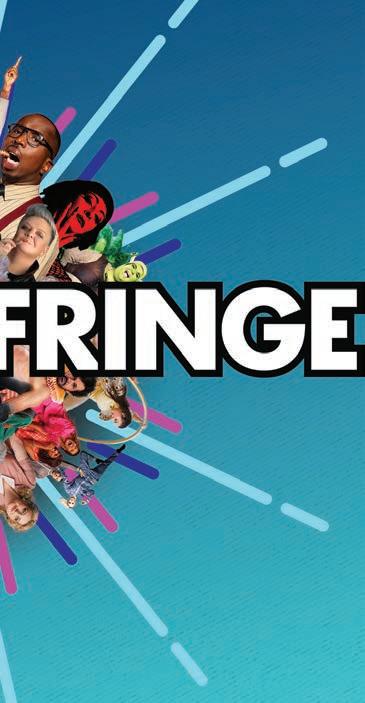



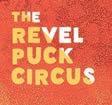






Royal Edinburgh Military Tattoo is celebrating 75 years of pageantry and spectacle, and for the milestone moment is doing something a little bit different. Scottish cultural thoughts and deeds will be hailed this August, with bands playing a series of classic pop tunes from the likes of Simple Minds, The Fratellis, Eurythmics and Lewis Capaldi, while adopted Scots Baccara also get an airing. (Brian Donaldson) n Edinburgh Castle, 1–23 August, times vary.


Fiona Shepherd heads for the coast to bring us some gig highlights from Fringe By
HThe Sea

amburg, Toulouse, Helsinki, North Berwick: Air’s European tour dates include an interesting diversion to East Lothian. That’s because Fringe By The Sea has secured the only Scottish date of the French duo’s summer tour, marking the 25th anniversary of their debut album, Moon Safari (Big Top, 2 August).
Watch out for floating toy monkeys as Nicolas Godin and Jean-Benoît Dunckel revisit the electro prog rapture of ‘Sexy Boy’, ‘Kelly Watch The Stars’ and other retro reveries on the first weekend of the festival. For those about to sway, we salute you.
It would be hard to see beyond this coup of a booking, were it not that the headline act on the second Saturday night is the Mercury Prize-winning Ezra Collective, also

Wplaying their only Scottish show this year. The London jazz ensemble are a surefire festival hit, so expect a pulsing Big Top on 9 August.
In a particularly strong music line-up, which also takes in alt.pop trio Racecar (The Dome, 6 August) from just along the coast in Dunbar, the other hot ticket is Hamish Hawk and Billy Nomates (Big Top, August). Edinburgh native Hawk is a proven draw with his eloquent indie anthems, while Bristol’s Billy Nomates comes packing an excellent new album, Metalhorse. Support comes from Glasgow sibling duo Cloth with a DJ set from Blur’s Dave Rowntree.
Fringe By The Sea, North Berwick, 1–10 August, fringebythesea.com
In a packed long weekend of world affairs, social issues and tech matters, Brian Donaldson wonders if the Festival Of Politics can convince people to put their phones down for five minutes
ith the world seemingly on the precipice, a festival that aims to be positive about the future might seem like a weird joke. But down Holyrood way, the Festival Of Politics is trying to spread happy cheer in among all the doomgloomery. First up, it’s hoping to save the children with a debate over whether smartphones for young people is really a good idea (21 August, 1pm). Mental health problems among young people appear to be soaring while their long-term physical health is also a cause for concern. But, hard as it might seem, it’s not too late to do something about it.
Similarly, the climate emergency feels like a lost cause, but a debate in partnership with the Royal Scottish Geographical Society (21 August, 4.45pm) aims to lift the spirits by proposing that individual responsibility might be the key to unlock a wider zeal for collective activism. Across a wide-ranging weekend, there are also debates about the depressing rise of misogyny and threats to proper journalism from within the corridors of power, analysis of whether robots might actually be the saviours of our economy rather than its slayers, and talks about how to combat rampant misinformation.
Festival Of Politics, Scottish Parliament, 20–22 August, festivalofpolitics.scot
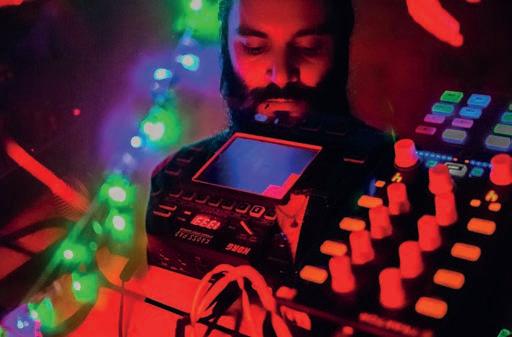



Refusing to stay silent (clockwise from below): Performance Desperately In Need Of An Audience, Lafi, Bruno Cruz, Che: (Not) A Ballet

A minifestival of Palestinian artists is heading to Portobello, staged in a spirit of solidarity with the war-torn nation and to celebrate its creative voices, says Aashna Sharma
As Palestinians are killed while queuing for food, as cemeteries overflow, as aid workers and journalists vanish beneath rubble the genocide in Gaza shows no sign of easing. How can we partake in art without acknowledging this reality? This August, Welcome To The Fringe, Palestine offers an answer. A small act of solidarity. A refusal to look away.
Organised by a collective of Scotland-based artists, producers and writers with deep connections to Palestine and the wider Middle East, this four-day mini-festival brings Palestinian artist voices to the heart of the Fringe, supported by Independent Arts Projects and Workers Theatre Co-operative. Many of the organisers, including Sara Shaarawi, Henry Bell, Catrin Evans, Leonor Estrada, Ben Harrison, David Greig and Farah Saleh, have spent years working closely with artists and communities in Palestine.
Running over four days at Portobello Town Hall, the programme for Welcome To The Fringe, Palestine features a series of uncensored theatre, music, poetry, dance, comedy, storytelling and food. Highlights include My Death Is Not a Song, a poetry performance by Mohammed Moussa, founder of the Gaza Poets Society, and HarvestTheMusical by Amira Al Shanti, celebrating the strength and spirit of the women of Gaza.
Fadi Murad’s Flux In This Forgotten Farm is billed as a performance ‘between fire and water,’ while And Here Am ’s coming-of-age story will take audiences on a journey from Jenin Refugee Camp to an Israeli prison.
There’s also a dance double-bill of Amir Sabra’s Within This Party and Che: (Not) Ballet by Nur Garabli. In Performance Desperately In Need Of An Audience, Mahmoud Al-Hourani
blends puppetry, silence and dark humour to explore survival. Welcome To Gaza, from the Hands Up Project, stitches together 19 short plays by children from Gaza and the West Bank. In Gaza Food And Stories, Diline Abushaban invites audiences into her kitchen, sharing traditional recipes and personal memories.
Rapper Lafi, from Jabalia camp in Gaza, also takes the stage with a set that blends lyricism, melody and Palestinian storytelling. The festival closes with an electrifying Arab A Dub DJ Set by Bruno Cruz, a dive into Palestinian underground music, pulsing with fresh beats.
‘This is a gesture of solidarity,’ says playwright and coorganiser Sara Shaarawi. ‘But it’s also a celebration. Palestinian artists don’t just resist they create. They hold joy, pain, absurdity and beauty all at once. They deserve to be seen and heard. Art and theatre have always played a role in humanising narratives and in resisting oppression, in communal processing and remembrance, and that is all reflected in the Welcome To The Fringe, Palestine programme. It’s more urgent than ever now to reach out and lift up our Palestinian friends and colleagues, at a time where they are facing so much censorship, harassment and violence.’
Each work in the programme offers a kind of archival pulse, preserving language, culture and imagination against the slow violence of suppression. For playwright David Greig, the festival offers a chance to connect beyond despair. ‘Art changes hearts. This project is a chance for us all to go beyond statistics, despair and political soundbites and, instead, to meet Palestinians where they are: heart, wit and soul.’
Welcome To The Fringe, Palestine, Portobello Town Hall, 12–15 August, fringepalestine.com
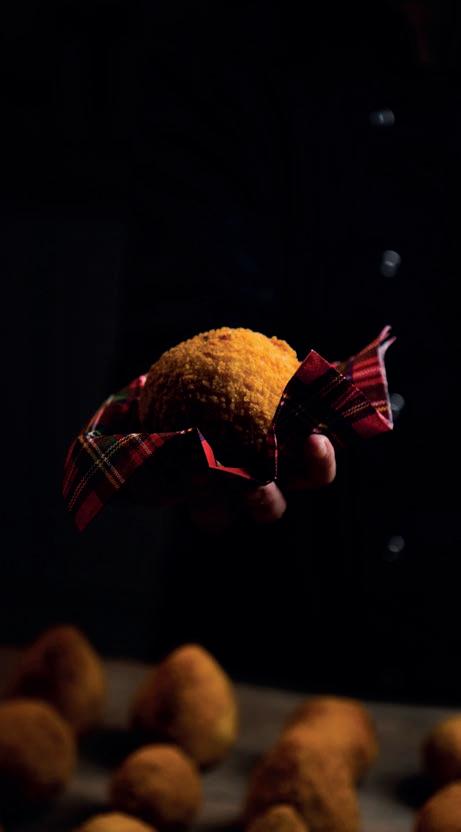
Cala Cala
Culture’s all well and good, but a person’s got to eat too. Jo Laidlaw fills her boots at the summer’s two big food festivals
Sometimes it feels like every street-food trader in Scotland descends on the capital come the summer. Edinburgh Folk & Food Festival (18–27 July) is a great way to pick out a few of your favourites ahead of the August mayhem. Based in George Square, this year’s renaming sees a roster of chilled folk performances added to the bill, but the focus on good food hasn’t changed. Sarah Rankin will host a series of conversations about Scottish food culture in the new Piccolo Kitchen, where local chefs Tomás Gormley, Barry Bryson and Daniela Forbes will also be shaking their pans with a range of demos and tastings. If you’re into cooking, Edinburgh Food Social’s handson technique workshops look fun too. Street-food vendors including The Tuskers, Choola, Lazeez Street Food and Cala Cala will be there for the full two weeks, with the Producers Market making a welcome return on the final weekend.
Foodies Festival at Inverleith Park (1–3 August) is a brilliant way to start the festival month off with a bang (bang chicken). The roster of celebrity chefs includes Gary Maclean and Hebridean Baker, Coinneach MacLeod, alongside a gaggle of MasterChef, Great British Bake Off and Great British Menu winners. Get up close and personal with dishes, ingredients, wine, beer and cocktails through a series of masterclasses and tastings, while the Kids Cookery School will keep the junior gourmets happy. Music headliners include Scouting For Girls and The Wanted 2.0, while Symphonic Ibiza will get the well-fed crowd on its feet.
Take a lucky dip into our round-up of alternative festival highlights also hitting the Scottish capital this August
Once again, the Edinburgh TV Festival (19–22 August) lays on some exciting events but only industry insiders will get to attend them (which remains a bit of a shame). Among the huge names showing up for some in-depth chats are Michael Sheen and Shonda Rhimes, while there are masterclasses on two of the break-out hits of 2025: Adolescence and Last One Laughing Back for a third year, Edinburgh Deaf Festival (8–11 August) features more than 70 events and activities, including Evie Waddell paying tribute to the eccentric icon that was Ivor Cutler, ‘deaffy’ drag queens Mary and Danielle, sets from comedians John Smith and Gavin Lilley, and a Scratch Night which invites bold experimentation and raw creativity.
And Just Festival (1–22 August) returns once again, with music from cellist Katie Bell and harpist Mary Reid, an exploration of Edinburgh’s Jewish heritage, a taster session of henna art, and a production of Insiders, a play about what it’s really like to be incarcerated. (Brian Donaldson)
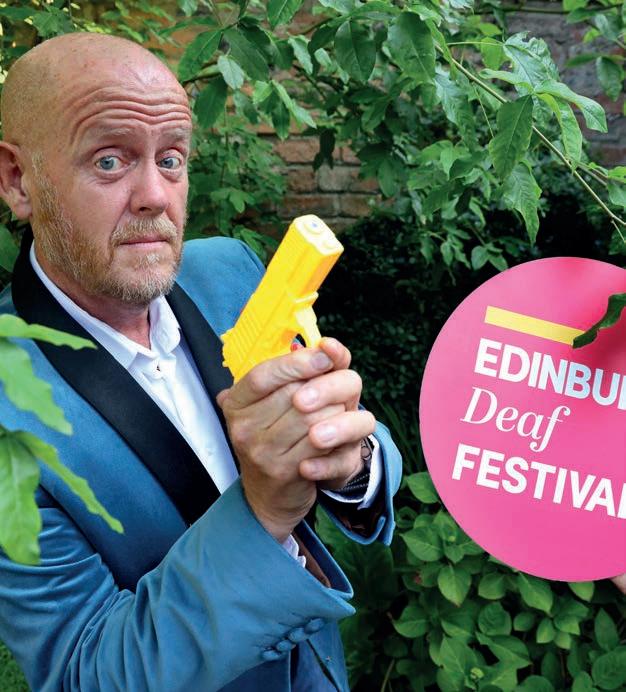

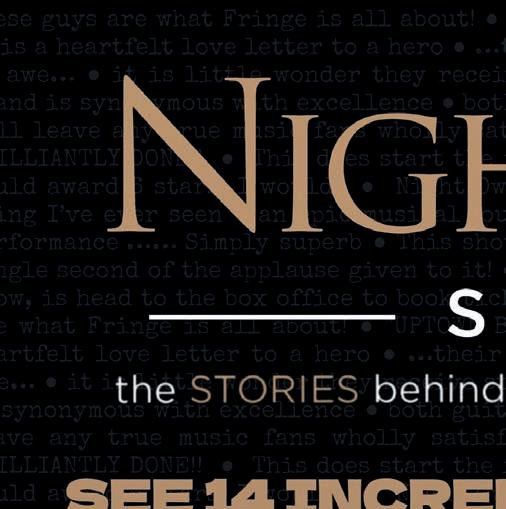


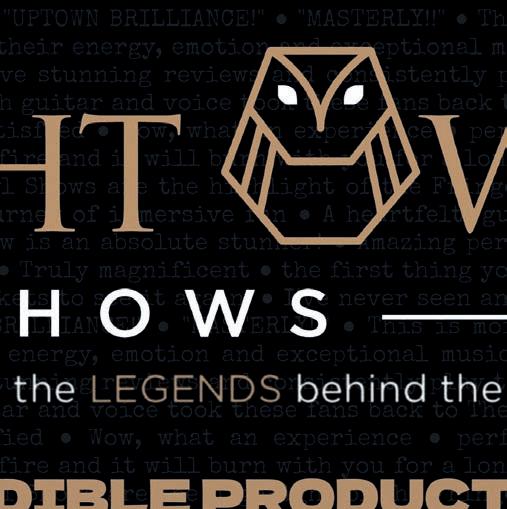

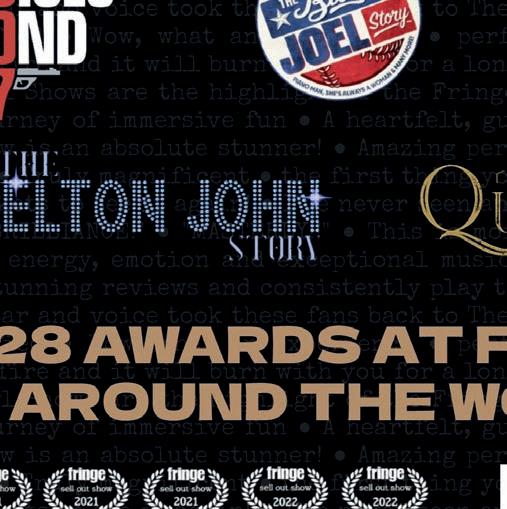


















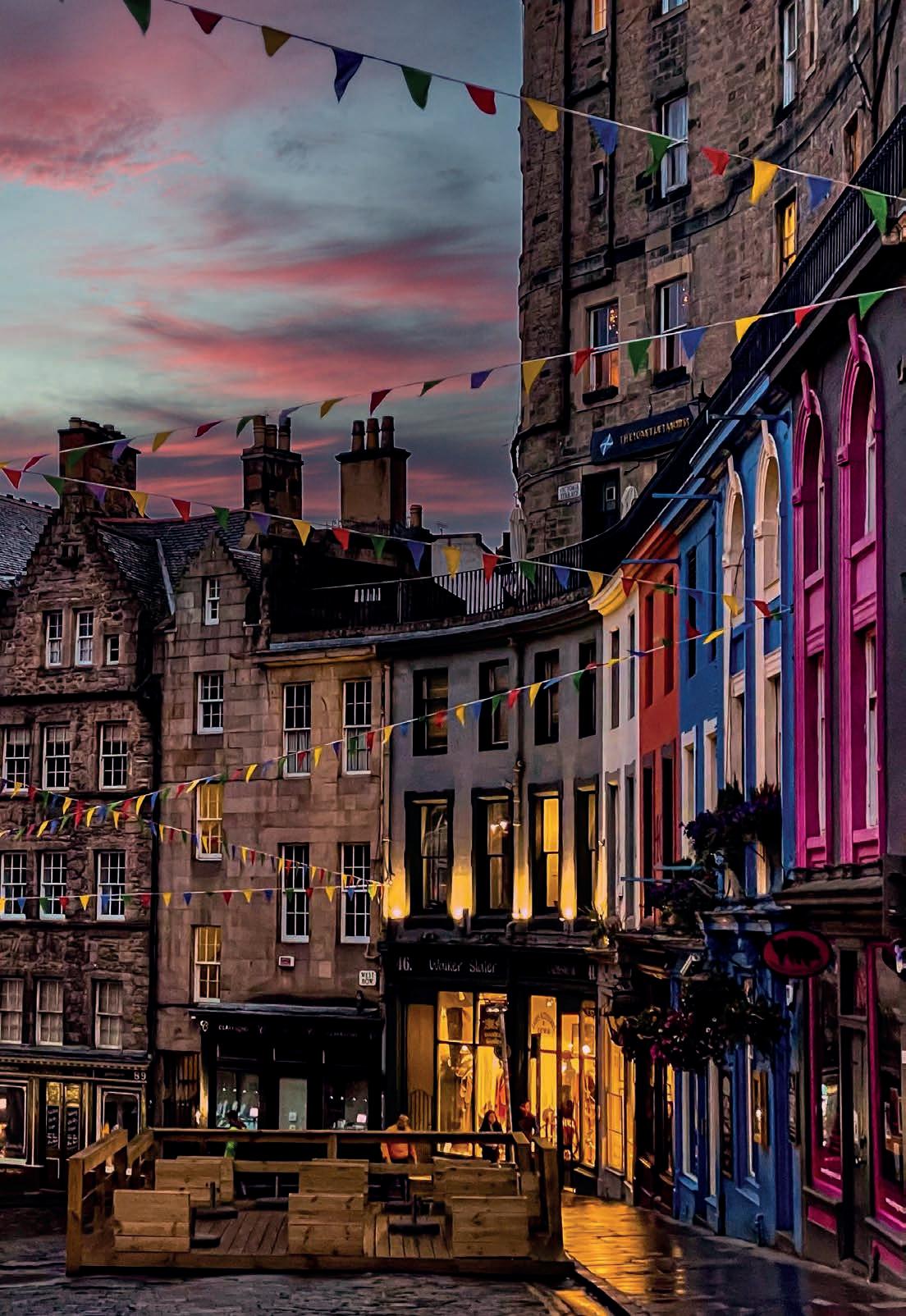
The best way to get to know a city is through its food and drink; that's worth chewing over in the wild explosion of colour and energy that is Edinburgh in August. Whether you’re looking for a quick drink or speedy refuel between shows, or want to take a bit of a breather over a meal worth savouring, our recommendations highlight the people and places that keep us well fed and watered all-year round. We’ve also asked our chums in the know, our Edinburgh hospitality heroes, to share their best-kept secrets. And it’s all arranged by area, so you’re never too far away from your next meal. So what are you waiting for? Let’s eat! IN ASSOCIATION WITH
Edinburgh’s city centre is a thing of wonder, a UNESCO World Heritage Site that’s packed with Georgian architecture. Although venues like Edinburgh Playhouse, Assembly Rooms (who have their own garden area on George Street for eating and drinking) and The Stand make their homes here, it’s a touch quieter than the Old Town, with seasonal terraces and traffic calming making pleasant places to hang out.
You’ll find some of Edinburgh’s best-preserved spots here: head for The Café Royal on West Register Street for a well-kept pint, excellent whisky choices and stunning stained glass and tiles. Hawksmoor’s steak offering may feel familiar, but its gorgeous interior in a former banking HQ is incredible. Indeed, bars in old banks is a bit of a theme in this part of town: try The Dome or push the boat out and head into The Spence at Gleneagles Townhouse for architecture with your aperitif.
If you’re after a quick burger between shows, Boozy Cow or Fat Patty’s (in Edinburgh Street Food) will see you right, or keep it simple with The Cambridge Bar’s classic-pub vibes. Chez Jules rules when it comes to a bargain, buzzy lunch, with nearby Mowgli serving up pretty curries. Or if you’re heading to the Playhouse, new spot Simply Greek on Union Street delivers warmth and charm.
The Abbotsford Bar & Restaurant
3–5 Rose Street, theabbotsford.com
No one could accuse The Abbotsford of being modern. One of Edinburgh’s best-preserved Edwardian pubs, its impressively hefty, Spanish mahogany island bar commands the space, giving strong old-school pub vibes. With a good spread of ales and lagers on cask and keg, it’s a decent place for a pint with a warm welcome.
Bramble
16a Queen Street, bramblebar.co.uk
When Bramble first appeared on Edinburgh’s dimly lit late–night drinks scene, it delivered a shot of sophistication. Still going strong many years later, craft cocktails are mixed with the finesse of an alchemist and the rarely changing menu is tried and tested. The signature Bramble cocktail is a must-have.
Good Brothers Wine Cellars
34 Northumberland Street, goodbrothers.co.uk
This wine bar/bottle shop sits on a sunny New Town corner, out of the way of much of the Festival madness. Pick an old favourite or let them guide you to fresh and exciting varietals by the glass or bottle, or pick something up to take home.
Lady Libertine
25 West Register Street, ladylibertine.co.uk
Darkly glamorous drinking den downstairs and bright café/lounge upstairs, Lady Lib works for almost every occasion without being bland or boring. The cocktails are excellent, staff are slick and there’s a straightforward food menu available until 10pm (late by Edinburgh standards).
Panda & Sons
79 Queen Street, pandaandsons.com
The OG Edinburgh speakeasy-style cocktail bar has secured a place on many a ‘best bars’ list since opening in 2013. Masquerading as a barber’s shop, descend the stairs to find a fun, secret cocktail bar where drinks are created with precision. Their technical skills are lauded by mixology geeks, but even the most casual cocktail drinker will find something delicious.
St Vincent Bar
11 St Vincent Street
Dwarfed by the looming tower of St Stephen’s Church over the road, the Vinnie’s dark-wood interior and button-back banquettes are oldschool Edinburgh pub personified. There’s a cute outdoor patio and did we mention they love pups? Their Dog Wall (which takes up half the ceiling) is covered in framed portraits of their four-legged regulars.
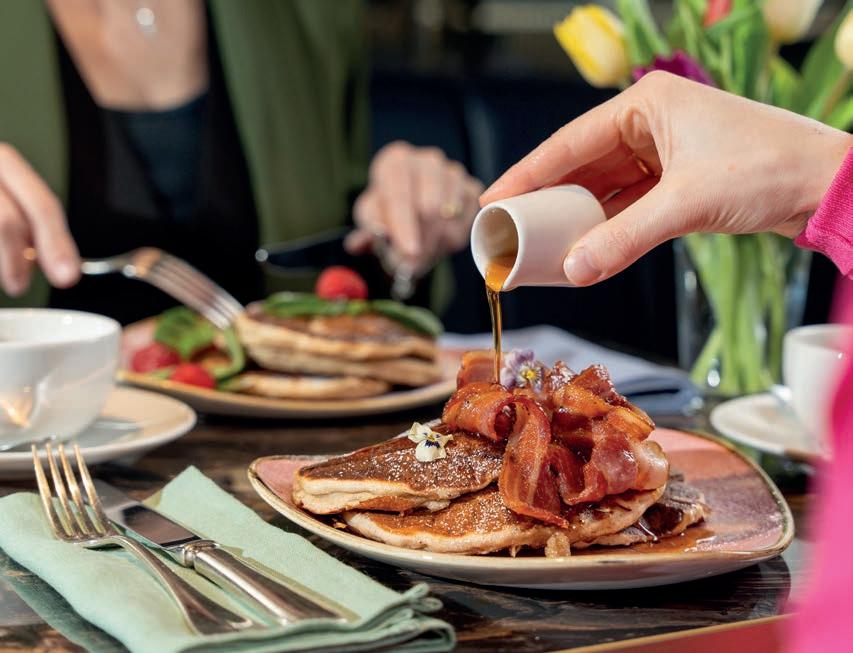
Uno Mas 4 Picardy Place, unomasbar.co.uk
Low ceilings, low lighting and late nights are the order of the day at this underground bar. Don’t let the 1970s sauna pine-clad roof put you off; a haunt for the city’s bartenders, closing at Uno Mas isn’t until 3am and the cocktails are always on point. There’s an extensive whisky list as well as Pilot beers on draught.
Bonnie & Wild
Level 4, St James Quarter, bonnieandwildmarket.com
Some of Scotland’s best-known food vendors and chefs have a second home at Bonnie Wild food hall, among them Gary Maclean’s Creel Caught, local heroes East Pizzas, burger kings El Perro Negro and Sri Lankan specialists Kochchi. The idea is simple; sit with your pals but order what you want, with no bill-splitting awks.
Edinburgh Street Food
Leith Street, edinburgh-street-food.com
Got a group with dietary requirements? No problem. Edinburgh Street Food’s ten traders include Antojitos’ Mexican fare for vegans, feather-light pizza from Razzo, or The Peruvian for a bit of spice. App ordering keeps it convivial, there are tons of tables both inside and out, and it’s quick: everything you want for a fast Fringe feed.
Hakataya 120–122 Rose Street South Lane,
hakatayauk.com
Tucked down one of the laneways off Rose Street, Hakataya is reminiscent of a Japanese izakaya. Unfussy yet stylish inside, it offers casual classics like donburi rice bowls alongside a decent selection of ramen. Their signature misobased pork ramen is subtle and warming, and there’s something to suit most tastes.
Maki & Ramen
37 Leith Street, makiramen.com
They have numerous sites around the city, all embracing the joys of no-frills ramen. Those that like their noodles super-spicy can try rust-red hell ramen, while black tonkotsu ramen is garlicky enough to ward off vampires. There’s also a branch across the road in St James Quarter’s basement level.
The Nook
National Galleries Of Scotland: Portrait, 1 Queen Street, heritageportfolio.co.uk/cafes/cafeportrait
The Nook is a bistro-style spot within the recently refurbished Café Portrait. It’s a sit-down-and-dine place where a menu of Scottishstyle dishes, like smoked haddock hash, and signature cocktails are inspired by the famous Scots and artworks within the galleries. Lunch plus a wander makes for a lovely escape for an hour or two.
The Scottish Café And Restaurant
National Galleries Of Scotland: National, The Mound, contini.com Conveniently placed at the garden entrance of the National Gallery, this is a cut above your usual gallery caff. Sourcing is impeccable, with fruit and veg from the Contini kitchen garden and quality produce
MY (OTHER) FAVOURITE PLACE
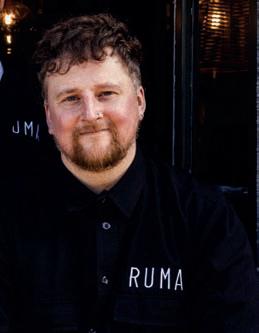
STEVIE AITKEN
COOWNER, RUMA
When I’m asked for dinner recommendations near Ruma, I don’t tend to send people very far: just through the lane to Kahani on Antigua Street. That’s also where you’re likely to find me, tucking into the best South Indian food in the city, alongside a bottle from Marchmont’s Cork & Cask (the beauty of BYOB). Then it’s off to hide out in The Last Word Saloon in Stockbridge, for a dram or a Loire Valley: it’s a goat’s cheese-washed, zesty little cocktail and it’s my top drink in Edinburgh. I’ll finish off the evening with a pilgrimage to Kay’s Bar (Jamaica Street) for arguably the best Guinness in town. Don’t forget a late-night Storries pie on the way home down Leith Walk. n Ruma, 39–41 Broughton Street, ruma.bar

Stockbridge is having a bit of a moment, with a flurry of new openings (see panel page 164) bringing a new lease of life to an area that was always solid, but maybe not terribly exciting. For drinks, you’re spoiled for choice. St Bernard’s Bar has an interior that looks like an explosion in a Victorian knick-knack emporium, with cute as a button staff and well-judged cocktails. Smith&Gertrude is a classy neighbourhood wine bar, where tasting flights and loaded cheese plates are the order of the day, or head to TheStockbridgeTap, a haven for dogs and craft beer fans with a focus on indie and interesting brews. TheCiderHouse is worth a look: they’re tapping into a UK-wide movement to reclaim the often-maligned drink, and you’ll find a selection of deliciously crisp local craft ciders, with Smoke & Soul in the kitchen. Round the night off with a whisky at The Last Word Saloon and pat yourself on the back for some excellent life choices.
When hunger strikes, there’s a pile of interesting places to explore. Skua is almost too cool for school, a dimly lit basement bar/ restaurant that’s much frequented by Edinburgh’s hospo workers and consequently serves food until pretty late (dropping by for a nightcap is equally welcome, but then you’d miss the fried chicken which would be a life-blighting mistake). Cata is a new place from well-kent face Iggy Campos. A contemporary space showcasing Spanish wine and tapas, it’s one for a chilled night of nibbling and putting the world to rights. Purslane is the spot if you want to linger over dinner; Paul Gunning’s multi-course tasting menus change seasonally, but are always an ode to Scottish produce and fine French technique. Radicibus takes Scotland’s abundance of wild game, foraged plants and seafood and turns it into Italian fine dining, with niche Italian wines that have been carefully selected to enhance each plate. Finally, MootzGeneral Store has been driving the ’grammers wild with their seriously massive schiacciata sandwiches: approach with care, or split with a chum.
from across Scotland always on the menu. Afternoon tea comes highly recommended.
Urban Angel
121 Hanover Street, urban-angel.co.uk
Seasonal, local, brunchy-lunchy, good coffee: it sounds so simple but this atmospheric basement café always adds up to so much more than the sum of its parts. It’s positively cavernous inside so don’t be put off by a queue, although competition for the outdoor tables is fierce.
Cafe St. Honoré
34 North West Thistle Street Lane, cafesthonore.com
This long-loved venue feels like a chic Parisian bistro with white tablecloths and plenty of candles. The vibes may be French, but chef Neil Forbes ensures only the best of Scotland’s larder appears on his menus. The la carte changes daily and the set menu is excellent value.
Contini George Street
103 George Street, contini.com
Carina and Victor Contini’s grand George Street restaurant is a picture-perfect example of Italian roots melding with Scotland’s larder to produce restrained food that bursts with flavour. Dishes like chicken Milanese feel homey and comforting, there’s outdoor seating for a spritz and their excellent breakfast starts early enough to be useful.
Hibiki
45 North Castle Street, hibiki-japanese.co.uk
Sleek and sophisticated, this one is an impress-your-date option. It’s a general Japanese bistro, so you’ll find teriyaki chicken and a standard sushi selection, but the tantanmen ramen, with its powerful hit of chilli, and tonkotsu topped with tender pork, make it a destination for noodle lovers too.
Ka Pao
Level 4, St James Quarter, ka-pao.com
The original Glasgow branch of Ka Pao is steeped in Michelin accolades and awards, and their second outpost at St James Quarter doesn’t disappoint. All the small plates have a South East Asian twist. Fried chicken and crisp pork belly are solid contenders for best dish, but hispi cabbage with cashew nut butter is a surprise candidate.
Kahani
10 Antigua Street, kahanirestaurant.co.uk
A lively, colourful Indian restaurant with plenty of space for bigger tables and corkage-free BYOB. There’s a range of slightly more unusual street food-style dishes, with plenty of veg and vegan
choices. It's right next door to Edinburgh Playhouse and has a proper old-school pre-theatre menu to get you fed and watered in time for curtain-up.
Paz Taqueria
64 Thistle Street, paztacos.com
The cocktail list is short and punchy, just like the Spicy Margarita. The menu splits between antojitos (sharing dishes) and intriguing pairs of tacos: think battered cod with charcoal, and squid ink crema and fresh coriander. Try sopes de choripapa: thick chewy corn patties with creamy refried beans, crisp potatoes and a generous flurry of goat’s cheese.
SUSHISAMBA
1 St James Square, sushisamba.com
High on the 10th floor of the W Hotel, SUSHISAMBA offers a fusion of Japanese, Brazilian and Peruvian cuisine; in the wrong hands this could go horribly wrong but they know what they’re doing here. Inside is rather beautiful, with an iconic tree sculpture growing out of the bar and panoramic views of the city’s skyline. In association with



TheNook_93_134mm_EdinburghFestivalGuide_FINAL_OUTLINED.indd 1 11/06/2025 12:32





The Old Town is at the heart of the Fringe action; visitors often don’t want to leave its cobbled streets and mysterious closes. There’s plenty of good eating and drinking here; don’t disregard the hot spots like George Square Gardens and Bristo Square where you’ll find some of the most interesting street food vendors in Scotland patiently plying their trade.
Cannonball Restaurant & Bar is practically inside the Castle Esplanade, and the Contini family know a thing or two about Scottish ingredients and Scottish sourcing. TheWitchery needs no introduction and while it arguably isn’t quite at the leading edge these days, both rooms are beautiful and make pushing the boat out feel worthwhile, while Angels With Bagpipes does a good job of treading the fine line between Scottish and tourist-focused.
You’ll find a decent selection of old-fashioned bars to while away an hour or so, including TheWaverley and Halfway House, both decent watering holes. Mary’s MilkBar is worth every minute you’ll spend queuing for a cone while nearby Oink does a simple pulled pork sandwich which is ideal for munching on the go. Maison Bleue in Victoria Street offers French and North African food in a quirky old building: get a window seat for the people-watching potential.
The Bow Bar
80 West Bow, thebowbar.co.uk
Hip joints come and go, but The Bow Bar endures. You’ll find nothing trend-led here: just a well-kept cellar, a huge array of whiskies and some Jarvis Pickle pies (unless the ‘nae pies left’ sign is showing). It’s a place you’ll want to linger, if only to escape the hordes of TikTokkers on Victoria Street.
Brewhemia
1a Market Street, brewhemia.co.uk
One of the biggest bars in town, Brewhemia works for everything from a quick drink to a full-on private party. There’s lots of Fringe-adjacent entertainment and live music, with flexible menus, and their varied spaces mean you’ll pretty much always be able to find a spot for a pint, even on the busiest of nights.
The Burrow 19 Blackfriars Street, theburrowbar.com
A spicy Marg for a tenner only a stone’s throw from the Royal Mile makes The Burrow worth at least one drink. The rest of its wellconsidered cocktail menu, the Art Deco styling and blues-y soundtrack make it worth a second. The intimate atmosphere means it feels like a fantastic secret (and the loos are stunning).
The Devil’s Advocate
9 Advocate’s Close, devilsadvocateedinburgh.co.uk
Atmospherically set in an old Victorian pump house, The Devil’s Advocate has local Pilot beer on draught, an impressive collection of 300 whiskies, a menu that changes with the seasons, cocktails, an outdoor mezzanine and all-round
lovely service. A bar for every occasion that somehow never feels bland or dull.
Jolly Judge 7 Lawnmarket, jollyjudge.co.uk
Despite its location, this timber–beamed hideaway avoids feeling like a tourist trap. Those who do venture down James Court close to the dinky subterranean pub will find a litany of real ales, craft beers and an impressive selection of whiskies. Teeming with ephemera and independently owned, it feels like a normal boozer in the heart of the action.
Nor’ Loft 6 Market Street, marketstreethotel.co.uk/norloft
This rooftop champagne lounge is worlds away from busy Waverley station below. Open throughout the day, Nor’ Loft serves light bites and sharing platters to go with the city’s longest champagne list. Grab a seat on the terrace, a blini platter with cured trout, smoked salmon and Katy Rodgers crème fraiche, and soak in those views.
Salt Horse 57–61 Blackfriars Street, salthorse.beer
This staff favourite is a friendly craft beer bar in the heart of the city with 14 draught lines and 210 different cans and bottles. Well-informed staff guide you through the choices, there’s a small, well-curated wine and spirits list, a burger-based bar menu and the cutest secret beer garden too.
Bariuma
41 Cockburn Street, bariuma.biz/en
This is the only European branch of a ramen chain which started in Hiroshima. Above ground, it’s a noodle connoisseur’s shop with


Starting your day with sustenance is key to surviving a full-on festival season. From a pastry on-the-go to a massive sit-down brunch, spots like Dishoom will keep you going. It’sa great shout for curry, but it’s the bacon and egg naan that keeps the faithful booking in for breakfast. Unlimited spicy chai puts the pep in your step too. Frederick Street’s Greenwoods serves brunch all day; if you’re looking for clues that they started out in Amsterdam, you’ll find them in fluffy pancakes and their Dutchman: eggs, gouda, smoked ham and mustard on toast. Scran Bistro has pretty much taken over the arcade that runs between North Bridge and Cockburn Street, with stacks and full breakfasts that hit the spot, and plenty of sunny seating.
ThePantry in Stockbridge is a reliable favourite, with brunch options like Thai-spiced pork mince toast and eggs benny served all day; look out for their new branch in Bruntsfield. Leith’s Roseleaf is a bona-fide bar, but their brunches have won them legions of fans over the years and they have great vegan options. If you don’t want to spend the price of a show ticket on breakfast, head to SnaxCafé (Buccleuch Street and West Register Street). This traditional greasy spoon does the best value breakfast rolls in town (£4.30 for a doubler!). Miller’sSandwichBar by Summerhall is also the daddy.
For bread and bakes, keep an eye out for the seven branches of Twelve Triangles as you walk around, all stocked with freshly made sourdough and pastries. Söderberg is another solid choice for Scandi-style baking on-the-go, with seven bakery shops and cafés all selling rocket-fuel coffee and their excellent cardamom buns. TheBeardedBaker (and sister shop SeventyOneSteps) do the best bagels: generously filled, dense and chewy. When it comes to cult bakers, LannanBakery in Stockbridge has sent the crowds into an Instagram frenzy over the past year or so. Expect queues at any time; just know that Darcie Maher’s lamination skills are worth every bit of the hype.
dashi and dry noodles to buy. Downstairs, steaming bowls of ramen come topped with melt-inthe-mouth pork. One of the most authentically 21st-century Japanese dining experiences in town.
Cappuccino Edinburgh
25 Jeffrey Street, instagram.com/ cappuccinoedinburgh
Open daily from 8am, this capacious coffee shop has lots of nooks and corners for working and reading. Guest roasts keep things interesting and there are plenty of pastries to takeaway. With lovely staff, it makes for a solid breakfast or lunch pit-stop.
Edinburgh Larder
155 Blackfriars Street, edinburghlarder.co.uk
If it’s not local, in season or the very best Scottish produce, then it’s not on Edinburgh Larder’s menu. Breakfast is served all day, with hazelnut and blueberry waffles and hash browns with cold-smoked sea trout on the menu. Soup, salads and sandwiches are added to the mix at noon. They’ve recently opened a second branch in Morningside.
Fruitmarket Café
45 Market Street, fruitmarket.co.uk/café
Breakfast runs until noon at this stylish gallery café, so it’s ideal for a pre-train fortifying snack. Lunch options go beyond the run of the mill, with interesting toasties, good veggie and vegan choices, and creative soups. It’s a peaceful spot to draw breath and hard to resist the excellent bookshop on the way out.
Ikigai Ramen
29–30 South Bridge, ikigairamenuk.co.uk
With restaurants on South Bridge and West Crosscauseway, it’s always worth trying to get a walk-in table at Ikigai (no bookings). The specialty is steaming bowls of ramen in slow-cooked rich dashi and the tantanmen has a brilliant spicy kick, perfect with a cold Asahi beer. If that feels too filling for a four-show day, try their small plates or gyoza.
Le Bistrot
West Parliament Square, lebistrot.co.uk
A slice of Paris on the corner of George IV Bridge and High Street. Le Bistrot, part of L’Institut Français, is, as you’d expect, unapologetically French. Open all day for pastries, coffee and dining, it’s also a great spot for a glass of wine from a strong and predominantly French (bien sûr) wine list: viognier, sancerre, fleurie, champagne.
The Milkman Coffee
7 & 52 Cockburn Street, themilkman.coffee
If you like moody arty interiors, specialty coffee and pastries, you’ll love The Milkman. Their atmospheric cafés at either end

of historic Cockburn Street have stripped-back walls, knowledgeable baristas and great people-watching potential if you manage to bag a seat. The carefully sourced coffees change frequently.
Room & Rumours Coffee
25 East Market Street, instagram.com/roomrumourscoffee
This pocket-sized coffee shop does a mean line in squidgy cinnamon rolls, but it’s the doughnuts that delight. Oh, them doughnuts: feather-light, fresh and chock-full of delicious fillings like lemon and lavender or orange crème brûlée, plus seasonal specials to make you smile. Open from 8am.
The Black Grape 240 Canongate, theblackgrape.co.uk
With oysters, sausage rolls and a strong small-plates game, The Black Grape is a lovely spot for a glass of wine and a bite to eat. Hot fried snacks are a favourite: try the Arbroath smokie arancini, or the nduja scotch egg. The cocktails are on the sweeter side, and the wine list nicely varied.
Divino Wine Bar & Restaurant 5 Merchant Street, divinoedinburgh.com
This basement wine bar and restaurant serves cuisine from the length and breadth of Italy. Think mussels and prawns with paccheri pasta in lobster bisque, and steak served rare as you like. The winelined private dining room is perfect for groups, and the wine list is really something special.
Eve 18–20 Cowgate, eveedinburgh.com
Enjoy all-day all-Italian dining on the ground floor of the swanky Virgin Hotel. Head chef Giulio Morroni serves up hearty helpings of his nonna’s comfort-food
favourites, including saffron risotto, eight-hour slow-cooked pork bolognese with tagliatelle, and Roman carbonara for two to share. Leave room for the Sicilian cannoli with sweet ricotta, cherry and chocolate.
Piggs
276 Canongate, piggswinebar.co.uk
An intimate Spanish tapas and wine bar, with sandwiches and snacks available during the day. If you fancy tapas, the triple-cooked patatas bravas are a must, and the ham croquettes and albondigas (meatballs) are excellent. Or make it easy on yourself: order a sharing platter of Spanish charcuterie and cheeses to nibble on with a glass of tempranillo.
The Outsider
15–16 George IV Bridge, theoutsiderrestaurant.com
Becoming an Edinburgh institution isn’t easy; The Outsider managed it with aplomb thanks to its cracking lunch deal, contemporary space, witty wine list and a menu that feels modern, without mistaking trends for flavour. When a flat iron steak and glass of wine is what you need, this is where you want to be.
Wedgwood The Restaurant
267 Canongate, wedgwoodtherestaurant.co.uk
Smart seasonal dining with a focus on Scottish produce. Locally foraged ingredients are a cornerstone of Paul Wedgwood’s precision cooking: expect to see seaweeds, sea vegetables and nettles enlivening dishes of local game, meat and fish. Wedgwood is à la carte in the evenings with a goodvalue set lunch and the service is both precise and warm.
White Horse Oyster & Seafood Bar
266 Canongate, whitehorseoysterbar.co.uk
A compelling option in the centre of the Old Town that works for drinks and fresh oysters, a combo meal of small plates or refined treats. The
décor is simple and sleek; dishes likewise, with buttermilk cod, hake ceviche or crab scotch egg. Go all out with a seafood platter if you’re celebrating (and feeling flush).
MY (OTHER) FAVOURITE PLACE

For coffee, it’s got to be our sister restaurant, Margot, in Bruntsfield (obviously!). If you have time, you can sit-in and enjoy a gorgeous breakfast, or take away before a peaceful stroll over The Meadows. On a sunny day, I love a couple of drinks in George Square Gardens or The Pleasance before heading to Konj, which is right beside the Lyceum Theatre. Fara does the most fabulous Persian food, the service is always great: it’s just amazing. LittleCapo does lovely pasta and is always buzzing, while Ante and Spry are sister-venues in the same building: one does coffee, one does wine, both are great. Finally, escape the crowds for a nightcap and head to Nauticus, a brilliant bar in the heart of Leith.
n LeftField, 12 Barclay Terrace, leftfieldedinburgh.co.uk






*Valid on 1-day tours booked between 1st July and 30th September for travel within the






This is a very special year for The List as we prepare for our 40th birthday celebrations. We’ll be getting the party started in style by marking 30 years of our much-loved Festival Party with another action-packed takeover of Edinburgh’s iconic SUMMERHALL. We want you to join the fun too so we’re offering you the chance to win a pair of tickets to this exclusive shindig.
On WEDNESDAY 30 JULY (9PM TO 3AM) sneak a peek at more than 30 hand-picked preview performances including comedy, cabaret, drag and more while enjoying drinks by sponsors Hendrick’sGin, Monkey Shoulder Whisky and Innis & Gunn, together with support from CanadaHouse, AdelaideFringe, Humanitix and LNER. Head out on Silent Adventures, get your face painted by Fantoosh, grab your pals and sing out your guilty pleasures in our infamous karaoke room, and dance yourself silly into the wee hours with DJ Trendy Wendy.







The urban bustle of Tollcross stretches out into the green spaces of Bruntsfield Links and onto Morningside; even a short stroll through this part of town will throw up contrasts as student-dominated areas sit cheek-by-jowl with some of the city’s most well-heeled streets.
The Cameo Picturehouse anchors Tollcross, and its retro-feeling house bar is a good stop-off point for a pint before a Film Festival screening. Home is just across the road and is a friendly spot for a drink or two. Brougham Street is probably the best place in the city for vegan food (see panel on page 161). It’s also home to Thailander, where you’ll feast on vibrant Thai cooking, perhaps followed up by a drink at The Ventoux or nearby Brauhaus, a good spot for a calm pint of craft beer.
Heading up towards Bruntsfield you’ll find a second branch of Old Town favourites Piggs, which is practically next door to Decanter Winery And Dinery, an unstuffy neighbourhood spot for a glass of wine and a little nibble or two to keep you going. Matto Pizza has a branch at Morningside Road, as well as one in Newington, while old faithful Montpeliers has been keeping Southsiders in food and drink for over two decades.

The Belfry 1–3 Barclay Place, thebelfryedinburgh.co.uk
A bar for locals and whisky enthusiasts alike, at around 100 bottles its whisky collection isn’t the largest, but it’s well-curated. With one-of-a-kind bottlings, committedly sought out from auction sites, they aim to offer drams that you might not find elsewhere, with an emphasis on independent bottlers.
Bennets Bar
8 Leven Street, kilderkingroup.co.uk
This well-preserved Victorian bar is full of stunning details, like gleaming brass water taps, beautifully ornate stained glass, a soaring oak bar and (delightfully) the original ‘jug bar’, a hidden service corner built for patrons who didn’t want to be seen at the pub. Decent cocktails and takeaway pints (it’s handy for Bruntsfield Links) add a modern touch.
The Blackbird
37–39 Leven Street, theblackbirdedinburgh.co.uk
The variety of cocktails is probably The Blackbird’s main pull: boozy milkshake-like concoctions and deliciously balanced fruity sours. The pop-up kitchen (Flash Ollie currently have the reins) focuses on huge sandwiches and spice bags. It’s all elevated by one of the best beer gardens in town.
Canny Man’s 237 Morningside Road, cannymans.co.uk
Heading up to Morningside, the Canny Man’s has been passed down the Kerr family for generations. Unassuming from the outside, inside the walls are covered in decades of ephemera, with a dark-wood bar,
Café Grande 182–184 Bruntsfield Place, cafegrande.cafe
Yes, cafés are two-a-penny in Bruntsfield and even the chains are encroaching, but Café Grande offers the comforts of a well-lived-in venue of 40 years standing. Open every day 9am–9pm, you’ll find classic breakfasts, light lunches of crepes or sandwiches, an la carte selection of fishcakes or terrine starters, burger or stuffed pepper mains, and a range of classic puds. And coffee and cakes whenever, natch.
Don’t Tell Mama 64 Home Street, donttellmama.uk
Inspired by Greek coffee culture, Don’t Tell Mama in Tollcross offers rich, rocket-fuel cups of joe. There’s a standard brunch menu of eggs benny and avocado toast, plus a full Greek breakfast mopped up with fresh pitta. It’s also a super-stylish spot to sit in. On Fridays, it opens late for cocktails and cultural events.
Hendersons
tartan touches and an impressive whisky collection to explore. A proper Edinburgh institution.
Cloisters Bar
26 Brougham Street, cloistersbar.com
Housed in an old parsonage, Cloisters features craft ales from small producers and lesser-known or innovative breweries. With an emphasis on those that are organic and Scottish, the selection on the pub’s 20 taps (ten of them casks) constantly rotates. Dog friendly and chilled.
The Wildcat 11–13 Tarvit Street, thewildcatbar.com
Low-lit and intimate, this tuckedaway cocktail bar still feels like a local secret. They’ll do you all the classics with finesse, but the menu is all about their inventive signatures: a yuzu-flavoured gin number, and rum with apricot, pineapple and absinthe. Keeping it accessible, there’s usually something on the blackboard around the £5 mark.
Alaburrito
350 Morningside Road, alaburrito.co.uk
A colourful nook at the foot of Morningside Road which sees a busy kitchen catering for the takeaway and delivery market as well as three long, family-style tables if you want to sit in. The menu follows familiar lines with burritos, tacos and quesadillas featuring slow-cooked pulled beef or pork, haggis and veggie haggis. The same outfit run an outside catering operation.
7–13 Barclay Place, hendersonsrestaurant.com
100% veggie with excellent vegan choices, this family-run spot may have changed location and passed through the generations, but Hendersons has consistently turned out fabulous vegetarian fine dining since 1962. It feels light and airy inside thanks to charming Scandichic decor. Wildflower-speckled dishes of salt-baked celeriac and foraged mushroom risotto don’t just look the part; they prove natural plant-based trumps faux-meat menus any day.
Mara’s Picklery 21c Strathearn Road, maraspicklery.com
Mara’s Picklery squeezes a few tables into a small shop space in Marchmont. It serves up lunchtime

COOWNER, THE GREEN ROOM
For me, the top-notch restaurant in Edinburgh this year has been Condita in the Southside. It’s the least well-known of the Michelinstarred restaurants in town, has only 12 seats and is perfect in my book. For something more affordable, but still very high quality, try Under The Table for lunch: Paul, the owner, will take great care of you. For budget, the best spot is ChezJules It’s fun and busy, with a great atmosphere. For drinks, head to StVincentBar, where you’ll find a great mix of people from all walks of life. I used to own VictoriaBar on Leith Walk; it’s still great and they have a strong selection of non-alcoholic drinks. Lastly, and crucially, the best Margarita in town comes from Chancho in Leith.
n The Green Room, 19–25 William Street, thegreenroomedinburgh. co.uk

sourdough toasties or larger dinner plates (weekends only) featuring their own preserved, fermented and pickled ingredients, plus various homemade sodas and shrubs. Be warned though, a visit here will make you want your own kombucha scoby.
Pablo Eggsgobao
36 Comiston Road, eggsgobao.com
Quirky name, quirky food, and the bao bun/ breakfast fusion you didn’t know you needed. Refined? Nope. Delicious? Oh yeah. Try the breakfast bao: crispy hash browns, square sausage, omelette and melted cheese with sriracha. Takeaway or delivery only and there’s a second branch on Inverleith Row.
Toast
37 Warrender Park Road, instagram.com/toastwinecafe
An outpost of the classy café, bakery and wine shop on The Shore, this Marchmont venue makes the most of its corner location with perching benches behind floor-toceiling windows and outside tables on the wide pavement. A tasteful daytime menu goes above and beyond soup andsandwiches, while racks of interesting wine and pretty pastries tell of the quality on offer.
A Wee Taste
36 Leven Street, aweetaste.co.uk
Showcasing some of Edinburgh’s local produce on towering charcuterie boards, A Wee Taste is a dinky spot to while away an evening over a bottle of wine. Their ever-changing list has some intriguing numbers from Hungary and Germany, the sharing platters taste as good as they look, and there are also a few tapas options to add to your board.

Fin & Grape
19 Colinton Road, finandgrape.com
A Southside neighbourhood restaurant with a focus on fresh Scottish seafood and delectable wines. The classy interior whispers wine-bar vibes and each dish, from fresh oysters on ice to market fish of the day, is presented perfectly. The bar menu tilts to Mediterranean ‘tinned fish’ choices along with nibbles and sides.
Harajuku Kitchen
10 Gillespie Place, harajukukitchen.co.uk
A funky interior and some of the sharpest staff in the city keep this place feeling on-trend despite its pedigree. A hybrid of endearing neighbourhood bistro and morethan-sushi Japanese specialist, it’s a place for exploring new flavours and eating well: the sushi is great, but go beyond to try their gyoza, curries and donburi or chirashi rice bowls.
LeftField
12 Barclay Terrace, leftfieldedinburgh.co.uk
LeftField lets the quality of Scotland’s seafood speak for itself. Fluffy half-lobsters, steamed Shetland mussels and flaky sea trout are accompanied by French flavours or sometimes just a simple, generous squeeze of lemon. A recent refurb has freshened up the interior, but the same focus on flavour and colour remains on the plate. If you’ve got time and the budget, the seafood platter is a must-try.
Pomelo
27 Sciennes Road, pomelocafe.co.uk
It could be mistaken for a funky wine bar but there's an infectious youthful earnestness in the contemporary pan-Asian food served here, which has helped build a cult following of noodle fanatics. Deep braises and umami flavours are prominent in their rich, tingling and filling dishes, including signature hand-ripped noodles.
Tuk Tuk
1 Leven Street, tuktukindianstreetfood.com
Low corkage fees on BYOB and fast-cooked, street food-style eats mean Tuk Tuk is one of the best value restaurants in Edinburgh. In an industrial chic interior, small curry dishes are made for sharing and the pau bhaji will carry you away from a rainy Edinburgh day (there’s a second branch on Drummond Street too).
Yamato 11 Lochrin Terrace, yamatoedinburgh.co.uk
Delivers a masterclass in relaxed yet serene Japanese fine-dining, with top-notch sashimi, nigiri and maki rolls alongside izakaya-style small plates and the chance to sample high-grade tuna, wagyu beef and saké. Not cheap, but the preparation, presentation, décor and service are all delightful.

Even the smallest café or restaurant in Edinburgh will have some plantbased options these days, but if you want to prioritise fully vegan places, then scoot along to Brougham Street in Tollcross. There, Sora Lella focuses on hearty Roman-style home-cooking; the non-stop pasta deal on Thursdays will keep you going for days (also check out newer sister restaurant Sora Diana on Causewayside). BlackRabbit combines café with deli, so you can pick up ingredients for dinner alongside your breakfast pastry, while SenVietVegan has all the glories of Vietnamese comfort food in plant-based form.
Up towards Bruntsfield, you’ll find Hendersons, a family business that pioneered vegetarian hospitality in Edinburgh back in the day. This latest offshoot offers vibrant veg-based food in a contemporary setting, which can all be easily veganised. CurranGeal is a super-cute café-deli (the name means ‘white carrot’ in Gaelic). As well as a handy grocery range, they do soup, coffee and cake to eat-in or takeaway. Nearby Seeds For The Soul specialises in brunch, including Biscoff pancakes (yes please); brunch runs until 3pm, so there’s no need to rush. They’re also open into the evening from Thursday to Saturday when burgers and bowls take centre stage. Head back towards Summerhall for Considerit’s chocolate, doughnuts and ice-cream, all gorgeous and fully vegan.
In the Old Town, DavidBann has been flying the flag for plant-based cooking for decades, in a cosy spot that’s special enough for a longer meal. Popular with Edinburgh’s student community, SoulVegan over by The Pleasance is a cute wee Malaysian restaurant with a skilled chef devoted to turning the classics into plant-based options (get the crispy mushrooms). In the city centre, you’ll find Novapizza. They’ve been slinging vegan pizza and pasta for a decade now, and they’re also great for gluten-free. For the days when only a two-handed burger will do, head for HolyCow: portions are huge but do try to leave room for their stunning baking. And if you’re in Leith, FacePlant does exactly what it says on the tin: oozy grilled cheeze sandwiches and mac and cheeze that you want to, well, plant your face into.
The Black Grape













































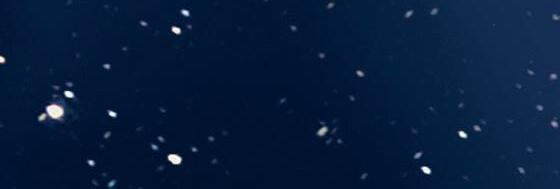













Get your early bird tickets before 30 August November to February




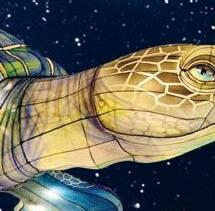
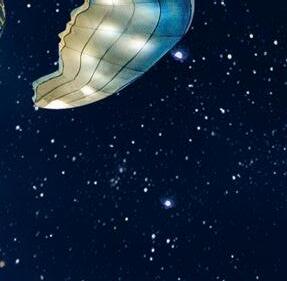












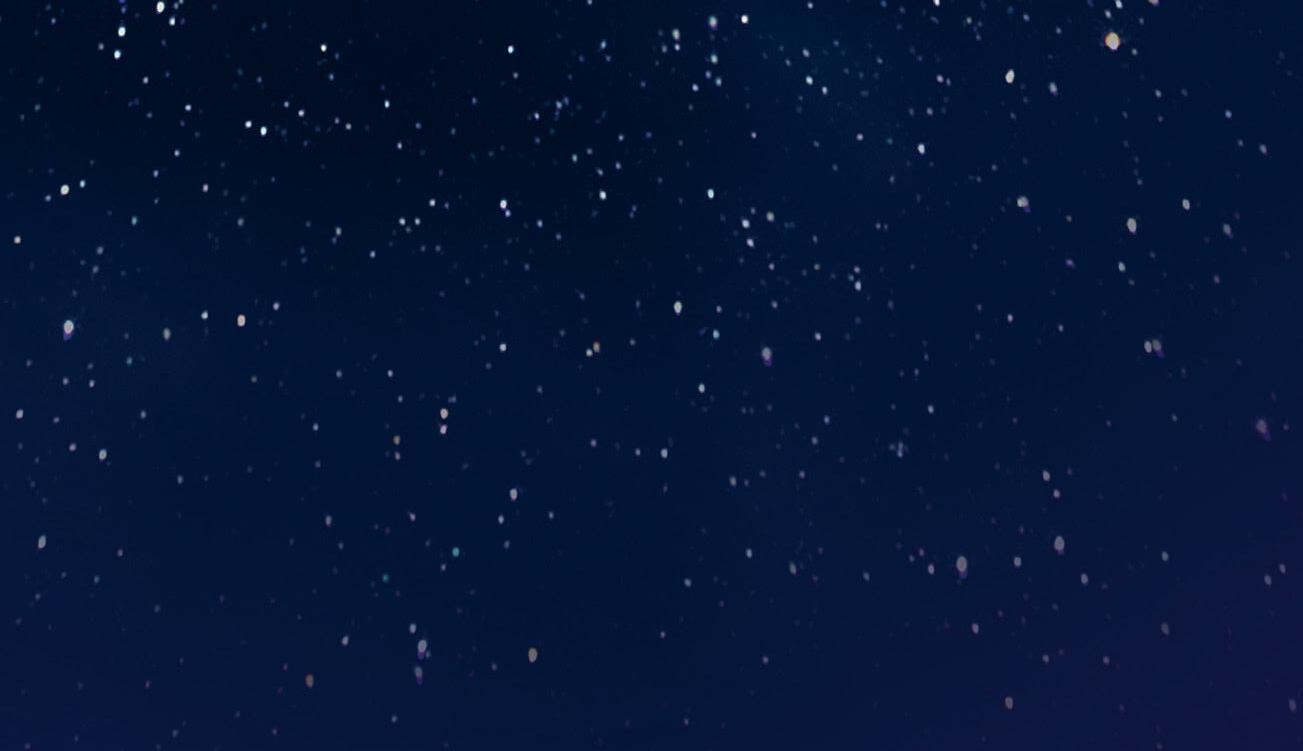




Edinburgh Uni’s footprint stretches across the Old Town, with both The Pleasance and Bristo Square becoming two of the main Fringe hubs in August. Pro-tip: always check your ticket details, because it’s all too easy to find yourself standing outside the wrong lecture theatre or tutorial room with five minutes to go before your show.
Right by The Pleasance, you’ll find student stand-by BBL, a cute café with a great line in home-made vegan treats. The Holyrood 9A is a short walk away, and a reliable choice for a decent burger. Keep going down Holyrood Road and you’ll find Toast & Tea, a cult Asian sandwich bar that’s popular with students at nearby Moray House.
Walking back over South Bridge leads to a few bargain options: Kalpna’s lunch buffet is an almost unbelievable steal, The Original Mosque Kitchen is a reliable option for a lunch that will fill you up without breaking the bank, while 10 To 10 In Delhi is still a List staffer fave after all these years. Chapel Street is home to Africano Wrap Place, one of the best fast-service sandwich-takeaways around, where they do not hold back on the fillings. Finally, circle back to Drummond Street, home to Solti and a second branch of Tuk Tuk, both reliable curry options.
Brass Monkey
14 Drummond Street, brassmonkeyedinburgh.
co.uk
A relaxed studentfriendly pub with a good beer list including real ales, Brass Monkey hosts regular pub quizzes, events and has a cosy lounging back-room for daily film screenings. During the festival, films are swapped for stand-up as part of the Free Fringe; just drop in and see what’s on.
The Dagda Bar 93–95 Buccleuch Street, facebook.com/thedagdabar
Real ales that need a bit of muscle to pour and a shimmering collection of single malts mean this stalwart on Buccleuch Street still feels like a proper pub. Dark wood features and big Dickensian-vibe windows set the tone. It’s a good spot for an atmospheric pre-show drink (they don’t do food).
The Dog House
8–24 Clerk Street, instagram.com/ thedoghouseedinburgh
A friendly, quirky and lively bar that’s much frequented by Edinburgh’s students. There’s always an interesting plant-based food pop-up on the go here; right now it’s vegan chippy The Happy Fish. The bric-a-brac décor makes it one of the funkiest spots for a pre-show pint in the area and the cocktail specials often hold a bargain.
Paradise Palms
41 Lothian Street, instagram.com/edinburghpalms
A lively bar that doesn’t take itself too seriously, Paradise Palms is quite simply great fun. Food (by
Lucky Pig) is all veggie/mostly vegan, and they do a mean French Martini too (an underrated skill). Laid-back and LGBTQ friendly, it’s one of those places where you can pop in for lunch and find yourself still there at last orders (true story).
The Royal Dick
1 Summerhall, summerhallarts.co.uk Summerhall is a mighty arts venue, but don’t forget the charms of The Royal Dick, its very own courtyard bar. Completely traffic-free, with ample seating, naturally Pickering’s Gin and Barney’s Beer (both produced on-site) feature heavily on the drinks list. The menu is straightforward and there are usually a few extra food trucks and pop-up bars around during the Fringe.
Tipsy Midgie
67 St Leonard’s Hill, tipsymidgie.com
Colin Hinds’ whisky bar manages to convey all the romance of the water of life without the hokum. With suggested drams, tastings and latenight tutored whisky flights, this is a bar where they’ll take you by the hand and guide you through the myths to find a whisky you actually like. Gin, wine and cocktails also available.
Alby’s Southside
94 Buccleuch Street, albysleith.co.uk
This is no ordinary sandwich shop. Alby’s (there’s one in Leith too) have a cult following for their giant sandwiches made with bouncy wedges of warm focaccia. Try pork souvlaki and whipped feta with crisps and rocket, or spiced roast cauliflower with battered cauliflower leaves, tahini and sumac onions. Not cheap, but you won’t need to eat again all day.


Edinburgh’s bar and restaurant scene is ever-evolving, and keen-eyed repeat visitors will notice lots of shiny new spots. Our picks of the ones worth adding to your planner include more than a few additions to the Stockbridge scene, where a flurry of openings sees the area rivalling Leith’s Shore for the title of best place to dine (see panel on page 152). Moss is a showcase for produce from Henry Dobson’s family farm, with around 90 products featured in the menu on any given day. It’s not the place for a quick bite, so plan accordingly and allow enough time to savour the experience. Over at Sotto, expect big plates of pasta in the cosy downstairs trattoria and regular wine tastings in the bright, buzzy bar upstairs. Stockbridge Eating House sees Dale Mailley (formerly of The Gardener’s Cottage) going back to a simpler approach, with a daily changing menu of hearty, approachable food that has had locals raving since opening.
That’s not to say that Leith’s losing all the ground. BarryFish is an unapologetically fish-forward restaurant, with plenty of style in the décor as well as on the plate. You’ll see chef Barry Bryson on the pass, and there’s a nice ‘big snacks’ menu if you’re on your way to a show. Head to nearby Mara for pre or post-dinner drinks on their sunny terrace; if you’re really lucky, you might find yourself at one of their brilliant crisps and wine pairing nights.
Heading back towards town, you’ll find LittleCapo, Stuart McCluskey’s new ‘Italian-ish’ restaurant that’s very quickly found a place in locals’ hearts. Menus change frequently, but there’s always a hearty pasta around as well as some interesting veg-led dishes. They keep bar seats for walk-ins too. If you just want a little something-something to fuel your afternoon programme, ProjectCanelé is the spot for delicious little cakes and coffee in a New York-cool café. And straight up the road from there is Vessel, a new bar from local brewery Pilot that aims to be a little more polished than your average taproom, while still offering their full range of excellent beers.


Fettle
24 Marshall Street, instagram.com/fettle.edinburgh
With signature sourdough focaccia springing regularly from their ovens, Fettle have the essentials for a mega sandwich. Fillings are fresh and generous without being too radical or wacky, with combo deals offered with soups and salads. Long wooden tables and big windows make for a busy, often studentdominated, venue.
Kate’s
116 Causewayside, instagram.com/kates_edinburgh
Nearly everything at this bakerycafé is homemade, from the elderflower cordial used to soak sponges to the rhubarb jam that accompanies the scones. Cakes and bakes are seasonal, making the most of Scotland’s natural larder. Think fresh strawberries topping Victoria sponges in June and sharp hits of rhubarb in May. Artisan venison or pheasant sausage rolls provide tasty savoury options for a quick lunch.
Lady & The Bear
1 Hope Park Terrace, ladyandthebear.co.uk
A bright corner café with a sunny menu to match, Lady The Bear serves generous Greek and Mediterranean-style dishes with a commitment to organic and fairtrade ingredients. Order big Greek salads, koulouri buns stuffed with mozzarella and prosciutto, and shiny cinnamon tsoureki buns. The hot chocolate menu is extreme but excellent and it’s right by Summerhall.
Origin Coffee
6–8 South College Street, origincoffee.co.uk
Expect meticulous attention to detail at Origin, thanks to well-drilled staff who are deeply knowledgeable about the beans they’re grinding. Regular classes and cupping sessions sit alongside in-store selections that are carefully chosen for the type of coffee you prefer,
whether that’s filter, espresso or pour-over.
The Pakora Bar 111 Holyrood Road, thepakorabar.co.uk
The Pakora Bar is family-run and lots of fun. Fresh and flavourpacked Punjabi street-food dishes are on the menu: think crisp pakora, hearty dhals and curries. There are lots of vegetarian, vegan and glutenfree options, and lots of space; it’s a great place to go as a group.
Söderberg Pavilion
1 Lister Square, soderberg.uk/pavilion
You’ll see a few of these Swedishthemed cafés around town, all doing a mean line in rocket-fuel coffee and cardamom buns. But this flagship site also dishes up Swedish waffles and baked eggs for brunch, plus excellent sourdough pizzas at night, in a traffic-free square that gets plenty of sun.
Victor Hugo Deli 26/27 Melville Terrace, victorhugodeli.com
It has been here on the Meadows since 1969 (though there are now two newer locations in George Street and The Shore) and has retained all its charm. Gleaming cabinets display sandwiches, cakes and pastries, with coffee roasted in-house. Sit in the sun and order the house special: pastrami on rye with sweet gherkins and emmental cheese.
Civerinos Slice
49 Forrest Road, civerinos.com
Inspired by New York’s slice joints, Civs usually has around 15 different pizzas on the pass, most available by the slice or pie. Don’t make the mistake of thinking you’ll be short-changed by a slice though; the portions are as generous as the staff are good-natured. The original
Soul Vegan
46 West Richmond Street, soulvegan.uk
With links to Kampong Ah Lee, this wee vegan Malaysian is pictureperfect, with attentive staff and a street-food slanted menu that leans towards deeply comforting, homely dishes. Popular with the city’s student population and super close to The Pleasance, essentially this is a place to fill up for a reasonable price, while receiving a cuddle in plant-based bowl-form.
Umi
12–14 Chapel Street, umiedinburgh.com
Civerinos in nearby Hunter Square is an equally good shout.
Kampong Ah Lee
28 Clerk Street, kampongahlee.co.uk
Kampong Ah Lee is always a busy little place for grabbing a quick bowl of flavour-packed Malaysian food. The chicken satay is drowning in sauce and spicy bowls of laksa warm the back of the throat. Order a cooling bottle of Tiger beer or BYOB to go with; it’s fun, fast and casual.
Kim’s Mini Meals
5 Buccleuch Street, instagram.com/kimsminimeals
No bookings and no takeaway here; just show up, queue up and eat up some of the best bibimbap in town, served in sizzling stone bowls and topped with a raw egg, as it should be. This family-style joint makes you feel like you’re eating in someone’s living room and that’s very much part of the charm.
Macau Kitchen
93 St Leonard’s Street, macaukitchen.uk
Inspired by the street food of Macau, spices of Goa and tropical climes of Malacca, this compact spot claims to be the only Macanese restaurant in the UK. It’s certainly the only one in Edinburgh and the duck glazed in plum wine is worth a detour from wherever you are. Reasonable corkage too.
Mother India’s Café 3–5 Infirmary Street, motherindia.co.uk/restaurant/ mother-india-edinburgh
This tapas-style Indian restaurant has been here for years. The interior isn’t fancy and it’s always busy (there’s often a queue but it moves quickly). The food is great (and good value). Paneer dosa is light and crisp, the spiced haddock is oven baked and tender, and the chana dhal is beautifully aromatic. Go with a group, or a big appetite, to maximise ordering opportunities.
This dazzling little Japanese restaurant serves fresh sushi, tempura and beautiful bowls of ramen. Sushi rolls with tempura prawn and avocado are delicious topped with crunchy onions. Yasai ramen has a rich soy milk broth with shimeji mushrooms and tofu and nasu dengaku is a gorgeous side dish: rich buttery aubergine with a sweet miso glaze. A warning: you’ll need multiple visits to work around the extensive menu.
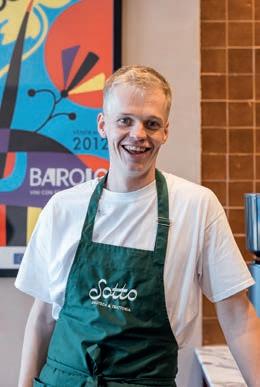
There are lots of Fringe venues down in Stockbridge, like St Vincent’s Chapel and Stockbridge Church, so why not take a slower-paced day away from the frantic Old Town and spend the morning or afternoon in the neighbourhood, wandering around the shops and exploring the green spaces? You’ll get the best bacon roll in the city from Café Gallo, a wee independent spot on Raeburn Place (I get the nduja ketchup if I’ve got a hangover). Follow that up with a delightful set lunch at Stockbridge Eating House; it’s a bargain too. Finish up with a proper gelato from Joelato and sit by the Water Of Leith watching the world float by.
n Sotto, 28–32 Deanhaugh Street, sottoedinburgh.com



















Scan the QR code to buy tram tickets online and save!












Stretching from Haymarket Station to the start of Princes Street and Lothian Road, this part of town includes year-round cultural venues like Usher Hall, Royal Lyceum Theatre and Traverse Theatre, busy throughfares and quiet cobbled streets.
Lothian Road has a few handy, reliable chains if you’re just looking for a fast feed: Pho, Topolabamba and Wagamama are all in easy reach of the theatres. If you’re coming in and out of Haymarket, look out for OldPal, a new-ish addition to West Maitland Street that’s working hard to offer a warm welcome and build a community. ChizuruTei is round the corner, one of the best-value sushi joints in town with reliably fresh options and BYOB. Morrison Street tends to be overlooked when discussing the city’s dining, but there are a bunch of straightforward spots to explore, like Greek grill OlaKala, PomoPizzeria and RodiTurkishMediterraneanBBQ
Heading down Queensferry Street brings a few welcome diversions. Dulse is a seafood-focused restaurant that’s both contemporary and cosy, while The WestRoom is a bar/restaurant done up in sunshiney shades, with an excellentvalue lunch menu. There are a few decent cafés on this strip too: head for Meh or ThePaintedRooster for a coffee stop and a warm welcome.
1820 Rooftop Bar
Johnnie Walker Princes Street, 145 Princes Street, johnniewalkerprinces street.com
The view from the 1820 Bar is genuinely jaw-dropping: church rooflines, the castle rising above and the Old Town skyline. Naturally, whisky is the order of the day, with new favourites and plenty of cocktails to enjoy, matched with seasonal small plates. The Journey Of Flavour tour (with personalised cocktails and non-alc options) is also highly recommended.
Downstairs At Betty’s 15 Charlotte Lane, instagram.com/bettys.edinburgh
Betty’s nightly un-miked join-inwhen-you-know-the-words piano singalongs are great fun at the best of times, let alone at Fringe (unless you

MURRAY AINSLIE
OPERATIONS DIRECTOR, THE BLACK GRAPE
August is a busy month in the restaurant game but it’s important to make sure it’s not all work, no play. I’m returning as a guest wine expert in the awardwinning In Pour Taste: A Comedy Wine Tasting Experience at Assembly Rooms and can’t wait to get involved again. For dinner after, I’ll head to Sotto, a classic Italian trattoria in Stockbridge; their wine list is to die for and the chef’s menu is unbelievable value. Barry Fish is doing some of the best cooking in Edinburgh right now, and I’m delighted to see our old sous chef shaking the pans with chef-patron Barry Bryson in the heart of Leith. And I’m really hoping that Norah will be open by August, a brand-new all-day bistro from the talented Claire Hanrahan.
n The Black Grape, 240 Canongate, theblackgrape.co.uk
hate happy theatre kids, in which case, what are you doing in Edinburgh at Fringe?) The cocktails are credible and the staff sweet too.
Encore
2–4 Hope Street, encoreedinburgh.com/speakeasy
This West End bar leans into its basement position to put some ooh in your la la. Possibly not terribly authentically Parisian, nevertheless it’s an absolute blast of campery and fun, with gorgeous booths, interesting bar snacks, live performers and signature cocktails. Glam up and go with it; book a booth for button-push service.
The Green Room
19–25 William Street, thegreenroomedinburgh.co.uk
The Green Room works hard to serve, and build, a community, with regular tastings and events. There’s a small plates menu for when the munchies strike, and a focus on an accessible and comprehensive wine list, with a few lesser-known varietals to tempt you out of your vino rut.
The Hanging Bat
133 Lothian Road, thehangingbat.com
Kegs re-used as urinals and a little brewing room on display: you can tell the focus of The Hanging Bat is the beer. With around 20 draught beers and ales plus over 100 bottles, it’s a mecca for craft-beer enthusiasts. Thirst-quenching lagers and hoppy APAs can be enjoyed alongside a menu of American-style bar food like chilli dogs.
Hey Palu
49 Bread Street, heypalu.com
With an owner hailing from the Amalfi Coast, the Negroni selection is particularly good, but the gin Martini could give them a run for their money. The focus is cocktails, with an Italian twist on nearly all the innovative signatures. Cured meat and cheese from the length of Italy provide delicious sustenance for boozy sessions.
Innis & Gunn Taproom
81–83 Lothian Road, innisandgunn.com/taprooms
Obviously it’s mainly about Innis Gunn’s own brews here and much of the food is typical pub fare (think scotch eggs, chicken wings, mac and cheese). But the star is steak frites: tender beef, garlic butter fries and house steak sauce, with an extra steak and bottomless fries all for just £20.
Cairngorm Coffee Roasters
1 Melville Place, cairngorm.coffee
One of the OGs on the Edinburgh coffee scene (they’ve been roasting since 2014), Cairngorm’s Melville

Street base is a hub for tired commuters, nearby office workers and local residents. The food is simple and good, there’s a sunny outdoor spot with lots of seating and they’re open from 7am.
Flatbread Turkish Bakery House
48 Haymarket Terrace, ohmyflatbread.co.uk
Open 8am–8pm every day, you can always pick up a punchy coffee and fresh baklava, but the star turn are the flatbreads to sit in or takeaway: boat-shaped pide filled with melted mozzarella and veg, crispier lahmacun spread with spicy mince or folded borek with olives and feta.
Konj
15–17 Grindlay Street, konjcafe.com
After establishing a reputation for Persian breakfasts with fried eggs, feta and walnuts or sweet omelette flavoured with saffron, a move to Grindlay Street meant a pivot towards lunch and dinner. Iranian specialities and feasts are front and centre, with small plates for a quick bite before or after a show.
MILK
232 Morrison Street, cafemilk.co.uk
An Edinburgh micro-chain (you’ll find them at Edinburgh Sculpture
Workshop and Inverleith Park), the Morrison Street branch is the mothership. With its stylish whitetiled walls and clean lines it's a little room of calm for coffee, breakfast, bakes, brunch or lunch. The options for the latter two are refreshingly sophisticated, strong on fresh ingredients and a home-made touch.
Panificio
20 West Maitland Street, panificio.shop
This unassuming wee bakery is a star find, particularly if you’re getting off the train at Haymarket and want to pick up something to take along for your day. Focaccia and panini are generously filled with the likes of mozzarella, roasted red peppers and ham: get them double-wrapped and they’ll keep you going all day.
Throat Punch Coffee Co
30 Dalry Road, throatpunch.co.uk
Just a few steps off the main Haymarket route to town, and much calmer than the name suggests, Throat Punch’s obsession with the perfect brew means Aeropress, hand-poured and the good old espresso machine are usually all burbling away at once. The focus is on big-flavoured, strong blends; deep leather sofas invite you to stay a while.
Bentoya
13 Bread Street, bentoya.co.uk
Lightwood Japanese zen successfully clashes with J-pop tunes at Bentoya, where the food is a fusion of classic sushi with experimental twists, plus ramen, udon and donburi. Lacquerware boxes packed with tempura, katsu or sashimi are surprisingly filling and an ideal fast snack. It’s a compact spot, so reservations are essential.
Dine
1st Floor, 10 Cambridge Street, dineedinburgh.co.uk
Directly above the Traverse Theatre, you’d be hard pushed to find a handier spot for a pre or post-theatre meal, with skilled staff feeding you fast without making you feel rushed. la carte and fixed-price menus dish up the likes of slow-cooked ox cheek with creamy mash and rice pudding with sticky caramelised pineapple for afters.
Fava Greek Kitchen
248 Morrison Street, favarestaurant.co.uk
This busy, airy spot just around the corner from Haymarket Station does a roaring trade, particularly with larger groups who appreciate its flexible seating and crowd-pleasing options. There’s an extensive selection of mezze if you want to dip and share, including plenty of veggie options, while the street-food selection majors on wraps and great-value gyros.
Nok’s
192–194 Morrison Street, noks.co.uk
This surprisingly spacious restaurant and fun-loving bar is adorned in
colourful kitsch and serves up a pan-Asian menu of tasty stir-fries, pad thai, tempura and specials. The same folk also run the ever-popular Nok’s Kitchen in Stockbridge and a third venue right by the castle: all are reliable options.
The Palmerston 1 Palmerston Place, thepalmerstonedinburgh.co.uk
The beautiful bones of a former bank, a daily changing menu, in-house baker and an instinctive understanding of what people actually want to eat means The Palmerston is well worth its place on your Edinburgh list of shouldknow locations for long lunches and proper dining. Restorative and confident, this is one where you’ll want to linger.
Ting Thai
55–57 Lothian Road, tingthai.co.uk
Fresh vibrant Thai flavours abound here: the green curry with chicken and aubergine has the perfect balance of lime, chilli and coconut milk to be addictive without being overpowering. The pad thai always hits the right notes too. Even if you’re sitting-in, the food all comes in a takeaway box, but you won’t care. There's another branch in Teviot Place.
Vietnam House 3 Grove Street, vietnamhouseedinburgh.co.uk
picy, soupy bowls of b n b u and fresh summer rolls cover the spectrum of Vietnamese cuisine at this cosy restaurant. It’s a small spot (the toilet is right next to the dishwashing area) and booking a table is essential. BYOB or sip a hot lotus tea.


With seven Michelin-starred restaurants, Edinburgh has an incredible fine-dining scene. But Michelin is not the only marker and, starred or not, the city has some enticing choices if you want to push the boat out and linger over dinner.Starting with the stalwarts, The Kitchin in Leith has been Michelin-starred since 2007 and winning awards ever since. Nearby, RestaurantMartinWishart is celebrating 25 years this year and their creative but assured French-style approach to Scottish produce continues to dazzle. In the modern European style, Number One At The Balmoral is a glorious underground dining room with beautifully plated dishes and impressive wines, right beside Waverley Station.
There’s a Scandinavian vibe at family-run Timberyard (near the Usher Hall). Alongside top local produce, you’ll find pickles and ferments, foraged ingredients, plus herbs and edible flowers grown in the restaurant courtyard. American chef Rodney Wages moved his bold Michelin-starred restaurant Avery from San Francisco to Edinburgh’s Stockbridge, plates and all, and this year regained the star he left behind for his bold creative cooking. There are Japanese notes on the eclectic menus at light and lovely Leith-based Heron, like shio koji with turbot. From there, it’s a short hop to Roberta Hall-McCarron’s TheLittle Chartroom, where relaxed service and a restrained three choices per course belie the razor-sharp techniques at play.
At Condita in Newington, 12 guests a night are treated to Scottish chef Tyler King’s creative cuisine. The beautiful décor changes seasonally and the menu comes as a series of hand-drawn pictograms. Stockbridge’s Eòrna is equally intimate: chef Brian Grigor and sommelier Glen Montgomery serve a set six-course menu to 12 diners at a long chef's table. Nearby, Tomás Gormley’s Cardinal is a wee warren of rooms, muffled with thick black curtains and glowing with candlelight.
To blow the budget in style, go to Lyla on the edge of Calton Hill where chef Stuart Ralston is at the peak of his powers. Expect ten delicate but dazzling seafood-focused courses from the calm open kitchen. Ralston’s first fine-dining restaurant Aizle on Charlotte Square pivots around the seasons with an à la carte offer that remains an absolute treat.



























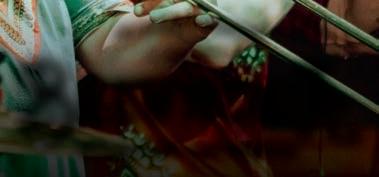
Leith Walk and The Shore have a fiercely independent spirit, a fully functioning tram line and are home to some of the best food and drink options in the city. Local cheffing hero Roberta Hall-McCarron has made Leith her culinary home and Eleanore, at the top of Leith Walk, is an accessible way to access her precise cooking and flavours. Nearby you’ll also find TheWalnut, a cute wee bistro doing the sort of restorative cooking you’ll welcome come the end of the month. Bodega is a reliable Mexican, with a sunny Miami-inspired colour palette and a deft hand with the spice. The foot of the Walk sees a clutch of reliable casual pizza joints: Razzo Pizza Napoletana and San Ciro’s, with equally strong Pizza Geeks at The Shore and on nearby Easter Road.
For sunny drinks by the water, Teuchters Landing can’t be beat. It has a massive terrace and a roomy conservatory if the weather doesn’t play ball, and a commendable range of whisky. ThreeMarys, tucked into a nearby side street, does a mean line in cocktails, while Malt & Hops is a reliable traditional favourite. If you’re staying down here there are plenty of options for breakfast too: Printworks Coffee and neighbouring Nobles are both solid morning choices.
Bittersweet
24 Henderson Street, bittersweetleith.co.uk
For an early evening casual bite, head to relaxed bar Bittersweet where it’s always aperitivo hour. Run by Italian brothers Fabrizio, the director of Old Poison distillery, with chef Simon, it’s been quietly building a following for its snacks, sharing boards and Spritz. Impeccable Negronis too.
Chancho
7 Bernard Street, chancho.co.uk
Tequila, mezcal and all things agave, Chancho’s cocktails conjure up the heat and colour of Mexico even on the coldest Edinburgh night. It’s hard not to simply list out the menu; the yuzu Margarita (or lagerita if you fancy a half-andhalf twist) is perfectly citrussy, the Chancho Old Fashioned suitably weighty and the tequila Martini, frankly, delicious.
Leith Depot
138–142 Leith Walk, leithdepot.com
Proudly pouring local beers and mixing excellent cocktails, Leith Depot is a properly communityminded pub. There’s an attached grassroots music venue giving local and touring bands a welcoming stage next door, as well as their own Fringe shows. The food is hearty, especially the filthy loaded fries.
The Lioness Of Leith 21–25 Duke Street, thelionessofleith.co.uk
The Lioness is a brilliant neighbourhood bar, whether you’re after a quiet afternoon pint, a slap-up burger meal or late-night Margaritas. Old arcade games and neon art add to the vibe, with candles flickering on stripped-wood tables. If you’re hungry, choose from nineteen
different burgers (including six veggie options) with fries.
Mara 58 Shore, mara.bar
This fairly new bar has one of the best outdoor terraces in Leith. Brunch runs right up until 4pm for those later starts and the compact cocktails list hits all the right notes. Regular events include wine and crisps nights; surely a sign of a bar that’s working hard to keep its community happy, without taking itself too seriously.
The Mother Superior 96–98 Leith Walk, instagram.com/ the.mother.superior.bar
A cracking wee pub with a really good selection of beers including local favourites Campervan, Newbarns and Pilot. Alcohol-free Jump Ship from East Lothian is on tap too. The cocktail list punches above its weight, there’s a vast choice of whiskies, regular live music and great staff.
Nauticus 142 Duke Street, nauticusbar.co.uk
A dark and sultry spot even in the daytime, Nauticus is unapologetically sophisticated: no screens or gimmicks, just excellent cocktails and a wall of whisky. Drinks are inspired by Leith’s maritime trading history, from spice routes to the whisky boom, with a real commitment to championing Scottish producers. It’s worth charting a course here.
Port Of Leith Distillery Bar 11 Whisky Quay, leithdistillery.com/the-distillery-bar
A smart skyline bar above the UK’s first vertical distillery; you don’t have to take the tour to visit, but it’s fascinating if you have time. From the bar, the views of the city and docks are outstanding; so too are the whiskies, cocktails and considered small plates. Try a whisky flight, perhaps paired with a smoked haddock Scotch egg.

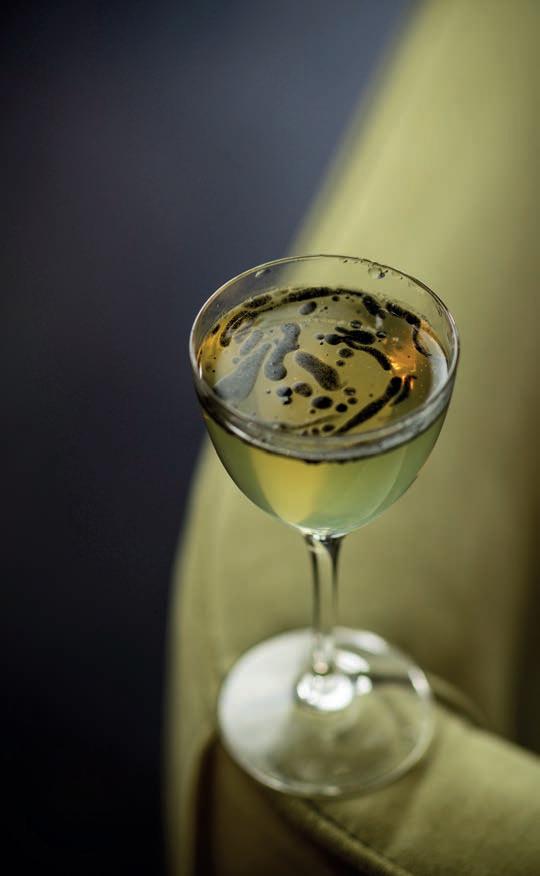
Broughton Street is home to some of Edinburgh’s best wining and dining, all in one handy spot that’s just far enough away from the action to make for a pleasant wander. Pickles Of Broughton Street has been a crowd favourite for over a decade, moving into bigger premises a few years ago to keep up with the demand for jars of homemade pâtés, charcuterie, wine and, of course, pickled goods, all served in a romantic series of rooms. Iconic French restaurant L’Escargot Bleu is a consistent delight, and L’Escargot Wine Bar underneath the restaurant is the perfect spot for a rich red from before dining on some of Edinburgh’s finest bouchonstyle fare. Further forays into French cuisine can be found just down the street at Bistro Coco, where the chateaubriand for two encourages intimate dining and is delicious to boot.
There’s no shortage of places for a drink. TheKellerTaproom, tucked down Broughton Street Lane has a photoshoot-worthy interior of hanging chairs and hops adorning the ceiling, with German-style beers brewed onsite. Fairly new is Ruma, eschewing Scotland’s gin boom in favour of rum-first cocktails and one of the largest collections of rum in the country. TheOx is a fine, fuss-free place for a pint and offers a steady menu of gastro-pub fare to fuel your evening. And TheBasement may be a bar first and foremost (with an incredible selection of tequila and mezcals), but its fusion soft taco and quesadilla menu secures its position as a destination Mexican restaurant too.
LuckyYu’s quality and inventiveness has seen it come out the other side of the 2010 bao bun craze still swinging, with lots of delicious bites to enjoy. For coffee, ArtisanRoast is the place: they’ve several branches around town but the Broughton Street branch is the best. Finally, head to the bottom of the street to Thamel, for gorgeous curry in classy, sundrenched surroundings: they’ve got outside tables, a downstairs bar and unusual dishes (but get the salmon bhuteko).











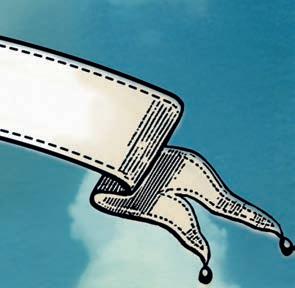



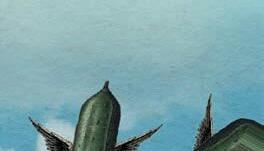


















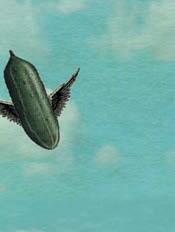










PLEASE DRINK THE UNUSUAL RESPONSIBLY.






Kitchen Table By Twelve Triangles
Babyfaced Baker
341 Leith Walk, babyfacedbaker.com
Famous for decadent stuffed cookies, cinnamon buns and cruffins (a croissant/muffin hybrid), Rhiain Gordon and the Babyfaced team have been keeping Leith Walk sweet since 2021. A larger second branch opened last year on Portobello High Street; both operate Thursday to Sunday with teasers of the week’s menu shared on socials.
Ella: Taste Of Greece
134–136 Leith Walk, ellagreekmeze.com
Bringing a little Greek sunshine to Leith Walk, Ella offers tapas, mezze, grilled dishes and packed gyros wraps. Practice your Greek and order kolokithokeftedes (hot courgette and feta fritters) or go for the hearty Spartan salad: a loaded bowl of hummus, figs, fat chickpeas, olives, edamame beans and honey-dressed cucumber with warm pitta.
there’s some serious baking talent behind the stove at Mimi’s. You’ll spot other branches as you wander around town, all worthy of attention.
Toast
65 Shore, Leith, toastleith.co.uk
Toast is a comfy, welcoming spot where you can easily imagine spending a lot of time. Breakfast melts into morning coffee, brunch melds into lunch, and it’s open into the evening at weekends. On-trend shakshuka is a rich stew of a dish, while the rest of Toast’s menu takes a little detour around Scotland.
Ardfern
10–12 Bonnington Road, ardfern.uk
Beside sister restaurant The Little Chartroom, Roberta HallMcCarron’s newest venture is an all-day café, wine bar and bottle shop. In the morning, enjoy fresh hot doughnuts or a hearty breakfast: the full vegetarian with home-cooked beans is glorious. Come back later for a glass of wine with hash browns and oysters.
Dùthchas
187 Great Junction Street, duthchas-restaurant.co.uk
Dùthchas is dedicated to foraged ingredients and Scottish game. Options include a ‘wee’ (threecourse) or six-course tasting menu or prix-fixe lunch. Expect rabbit with a rich cabbage reduction, or foraged seaweed with a side of Japanese dashi. The little space is packed with plant life; a fitting backdrop to picture-perfect plating.
Fishers Leith
22–24 Easter Road, twelvetriangles.co.uk
Twelve Triangles bakeries are dotted around the city. Good bread and local ingredients come together at Kitchen Table in a gorgeous neighbourhood café. Breakfast starts strong with porridge and granola, both served with seasonal compote. There's a range of sourdough cheese toasties, alongside things like housebaked beans with cultured butter and Scottish cheddar.
Kvasa
101 Leith Walk, instagram.com/kvasa.bakery
This organic sourdough bakery sells the biggest, best miche loaf in town, alongside traditional Danish rugbrød packed with seeds, and a deep purple walnut bread. Make a beeline for the sourdough cinnamon buns, vegan and traditional croissants, and hearty slabs of topped focaccia.
Mimi’s Bakehouse
63 Shore, mimisbakehouse.com
The cupcakes could be from a children’s book illustration and the kids’ afternoon teas are as colourful and rainbow-sprinkled as a five-year-old’s birthday party, but
then dive into cannelloni stuffed to bursting and spinaci pizza topped with oozing egg.
Paloma 50–54 Henderson Street, palomatacos.co.uk
Sun streams through the windows at this taco joint, with a mint-andpink interior adding to the light breezy feel. Crunchy nuggets of fried avocado make a fun filling for a hand-pressed corn taco, garlicky prawns with pico de gallo are tasty, and sweetcorn covered in lime crema and parmesan is delicious.
The Ship On The Shore 24–26 Shore, theshipontheshore.co.uk
The cobbled Leith quay, the salty tavern vibe, sea charts and mirrors on the walls, the chalkboard specials and the groaning platters: The Ship On The Shore does quintessential old-school seafood dining formidably well. A wideranging menu offers dressed crab, hand-dived scallops, whole roast trout or seafood paella for two.

1 Shore, fishersrestaurants.co.uk
Set in an old watchtower on the Shore, Fishers balances specialoccasion surroundings with laid-back service and precision cooking. Whether you’re planning a (pre-ordered) hot shellfish platter blow-out or just fancy a bowl of mussels and fries at the bar, this is a restaurant for all seasons.
Mirin
9 Albert Place, Leith Walk, mirin.uk
The noodle soups with slowcooked broths are delicious, but the real flavour bombs are on the small-plates menu. Barbecued broccoli on creamy sweetcorn and miso custard, with chilli oil and corn kernels, is outrageously good, while a mountain of sweet and spicy mackerel piled high on crispy wonton skin is equally decadent.
Origano
236 Leith Walk, origano-leith.co.uk
Decent pizza is everywhere in Edinburgh, but Origano is one of the few spots that feels chilled-out and relaxed. A stone pizza oven roars away and the mood is set by flickering candlelight. Start with a piled-high meat or cheese board,
COOWNER AND HEAD CHEF, WEDGWOOD THE RESTAURANT
Wild-food enthusiasts should look no further than Nàdair in Marchmont. The laid-back vibes and stellar cooking here mean it’s one not to be missed. I also rate Harajuku Kitchen in Bruntsfield for authenticity and the sheer execution of its Japanese dishes. Head to Stockbridge for two small and intimate spots: if you can’t get a seat in one, try the other! The cooking in both Eòrna and Purslane is incredible, with wines to match. For tapas, you’ll often find me in Tapa in Leith; you’re guaranteed a friendly welcome, wonderful service and always great food at ridiculously reasonable prices. Finally, for something fishy it’s got to be the newly opened BarryFish on Leith’s Shore, where Barry is cooking up something very special.
n Wedgwood The Restaurant, 267 Canongate, wedgwoodtherestaurant.co.uk









Discovering the Northern Isles has never been easier with NorthLink Ferries.
The comfortable and reliable service offers sailings from Aberdeen to Lerwick, Shetland, with regular calls into Orkney’s capital of Kirkwall.
Alternatively travel to Orkney’s port of Stromness from Caithness. This 90 minute journey on MV Hamnavoe is the only sailing to Orkney which passes the iconic sea stack, the Old Man of Hoy.


Operated by
northlinkferries.co.uk



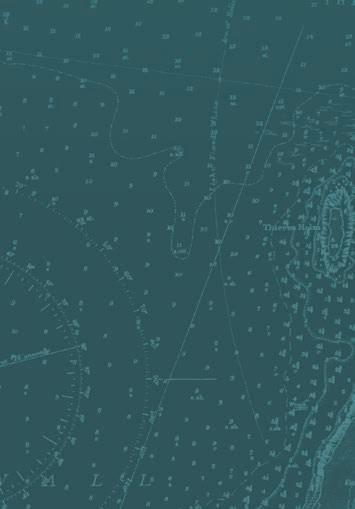

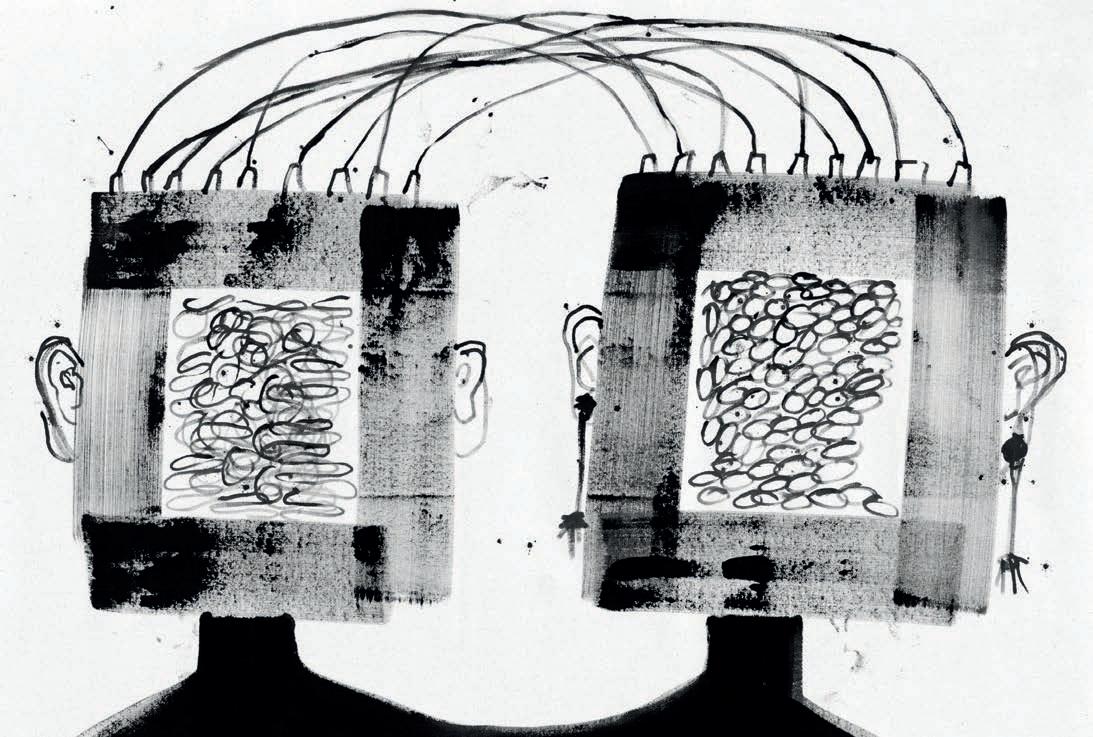


The Midnight Madness portion of the Film Festival gets an intriguing opener in the shape of Bulk (venues vary, 14 & 15 August). Cult king Ben Wheatley (Sightseers, A Field In England) returns to his indie roots with a sci-fi nightmare that will have you scratching your heads.
2 3
After the delightful reveals by EIF with their Up Late programme last year, we just can’t get enough of this strand even if the element of surprise has gone. A genre-twisting gig by Sissoko, Segal, Parisien & Peirani (The Hub, 22 August) looks like being a surefire highlight.
Could this be the year when Jessica Fostekew finally goes huge? Who knows: these things are very hard to predict. But one thing is for sure, her new show, Iconic Breath (Monkey Barrel, 11–24 August), will be a highly anticipated affair on the back of storming hours such as Hench and Mettle












